The painkiller myth:
Chocolate, coffee, and their flavonoids
We've all seen the headlines, shared the memes, and perhaps even indulged with a guilt-free smile: chocolate and coffee, the delicious champions of the flavonoid world, touted as magical elixirs for everything from heart health to fighting inflammation and even pain. And while it's true that these beloved treats pack a powerful punch of beneficial compounds, relying solely on your morning latte and an afternoon dark chocolate square to vanquish chronic aches and widespread inflammation is, unfortunately, a myth that needs debunking.Let's dive into the delicious details of flavonoids, explore their undeniable benefits, and then confront the limitations of food as a standalone solution for complex physiological challenges like pain and inflammation.

The Flavonoid Frenzy: What Makes Chocolate and Coffee So Special?
Before we temper our enthusiasm, let's celebrate what makes chocolate and coffee genuinely good for you. Both are rich sources of flavonoids, a diverse group of plant pigments known for their potent antioxidant and anti-inflammatory properties.In dark chocolate, specifically, you'll find an abundance of flavanols like epicatechin and catechin. These compounds are celebrated for their ability to improve blood flow, lower blood pressure, and protect against cellular damage. Research suggests that the flavanols in cocoa can modulate inflammatory pathways, potentially offering a degree of protection against chronic inflammatory conditions. Think of them as tiny cellular firefighters, dousing the flames of oxidative stress.Coffee, on the other hand, is a treasure trove of chlorogenic acids, another class of powerful antioxidants. Beyond just waking you up, these compounds have been linked to reduced inflammation, improved glucose metabolism, and even protective effects against certain chronic diseases. Your daily brew isn't just a jolt of energy; it's a complex cocktail of beneficial compounds working behind the scenes.The Myth of the Magic Bullet: Why Food Alone Isn't Enough
Here's where we get to the crux of the matter: while the anti-inflammatory properties of flavonoids are well-documented, the idea that consuming chocolate and coffee in typical dietary amounts can single-handedly combat chronic pain and widespread inflammation is a simplistic and potentially misleading notion.1. Bioavailability and Dosage: The amount of flavonoids you actually absorb and utilize from food can vary significantly. Factors like individual metabolism, food preparation, and the presence of other compounds can all influence bioavailability. Furthermore, the therapeutic doses of flavonoids used in many scientific studies often far exceed what you would consume in a standard serving of chocolate or coffee. To achieve the concentrated effects seen in some research, you'd likely need to consume an impractical and potentially unhealthy amount of these foods.2. The Complexity of Pain and Inflammation: Pain and inflammation are incredibly complex physiological processes. They can be triggered by a myriad of factors, including autoimmune diseases, injuries, infections, psychological stress, genetics, and environmental toxins. While diet plays a crucial supportive role, it's rarely the sole cause or cure for chronic conditions. Thinking of food as a complete solution for something as intricate as fibromyalgia, rheumatoid arthritis, or neuropathic pain is an oversimplification.3. The Pro-Inflammatory Counterbalance: Let's be honest, many of us don't consume chocolate and coffee in isolation. Our diets often include processed foods, excessive sugars, unhealthy fats, and refined carbohydrates – all of which are notorious for promoting inflammation. A square of dark chocolate, no matter how rich in flavonoids, is unlikely to counteract the systemic inflammation caused by a consistent diet high in pro-inflammatory ingredients. It's like trying to put out a forest fire with a teacup of water while simultaneously pouring gasoline on it.4. The Need for a Holistic Approach: Effective management of pain and inflammation almost always requires a multi-faceted approach. This includes, but is not limited to:- Medical Intervention:
For many conditions, pharmaceutical interventions, physical therapy, and other medical treatments are essential for managing symptoms and addressing underlying causes.- Targeted Nutritional Strategies:
While chocolate and coffee are great, a truly anti-inflammatory diet extends far beyond them. It emphasizes a wide variety of fruits, vegetables, whole grains, lean proteins, and healthy fats while limiting pro-inflammatory culprits. Think vibrant colors, diverse textures, and nutrient density.- Lifestyle Modifications:
Stress reduction techniques (nature walk, painting), regular physical activity, adequate sleep, and maintaining a healthy weight are all critical components in mitigating pain and inflammation.- Embracing the Reality: A Balanced Perspective
So, does this mean you should ditch your dark chocolate and morning coffee? Absolutely not! Enjoy them in moderation, savor their flavors, and appreciate the flavonoid boost they offer as part of a balanced and varied diet. They are valuable allies in your pursuit of health, contributing to your overall well-being.However, it's crucial to understand their limitations. For persistent pain and inflammation, look beyond the delicious duo. Consult with healthcare professionals to identify the root causes of your symptoms and develop a comprehensive management plan. Embrace a truly anti-inflammatory lifestyle that encompasses a wide array of nutrient-dense foods, regular movement, stress reduction, and adequate rest.The bitter truth is that there's no single magic bullet for pain and inflammation, not even one as delightful as chocolate or coffee. Sustainable relief comes from a holistic, informed, and committed approach to your health. So, go ahead, enjoy your flavonoid-rich treats, but remember they are just one piece of a much larger, more effective puzzle.

Resources
It is not all in your mind;
pain misconceptions

Botanicals
The healing power of
herbal teas

Bodywork
Finding the right
pain management approach
Unpacking the truth about
infused waters and hydration myths
In our wellness-obsessed world, the pursuit of optimal hydration has become an art form. From sleek, reusable bottles to an explosion of "detox" drinks, everyone seems to be chasing the elusive goal of perfect H2O intake. Among the most aesthetically pleasing and widely popular trends are infused waters—vibrant concoctions promising everything from enhanced flavor to miraculous health benefits. But in this sea of hydration hype, it’s easy to get swept away by myths and misconceptions.It's time to dive deep into the fascinating world of infused waters, separate fact from fiction regarding their purported powers, and debunk some pervasive hydration myths that might be leading you astray. Understanding what truly contributes to good hydration can empower you to make smarter, more effective choices for your health.
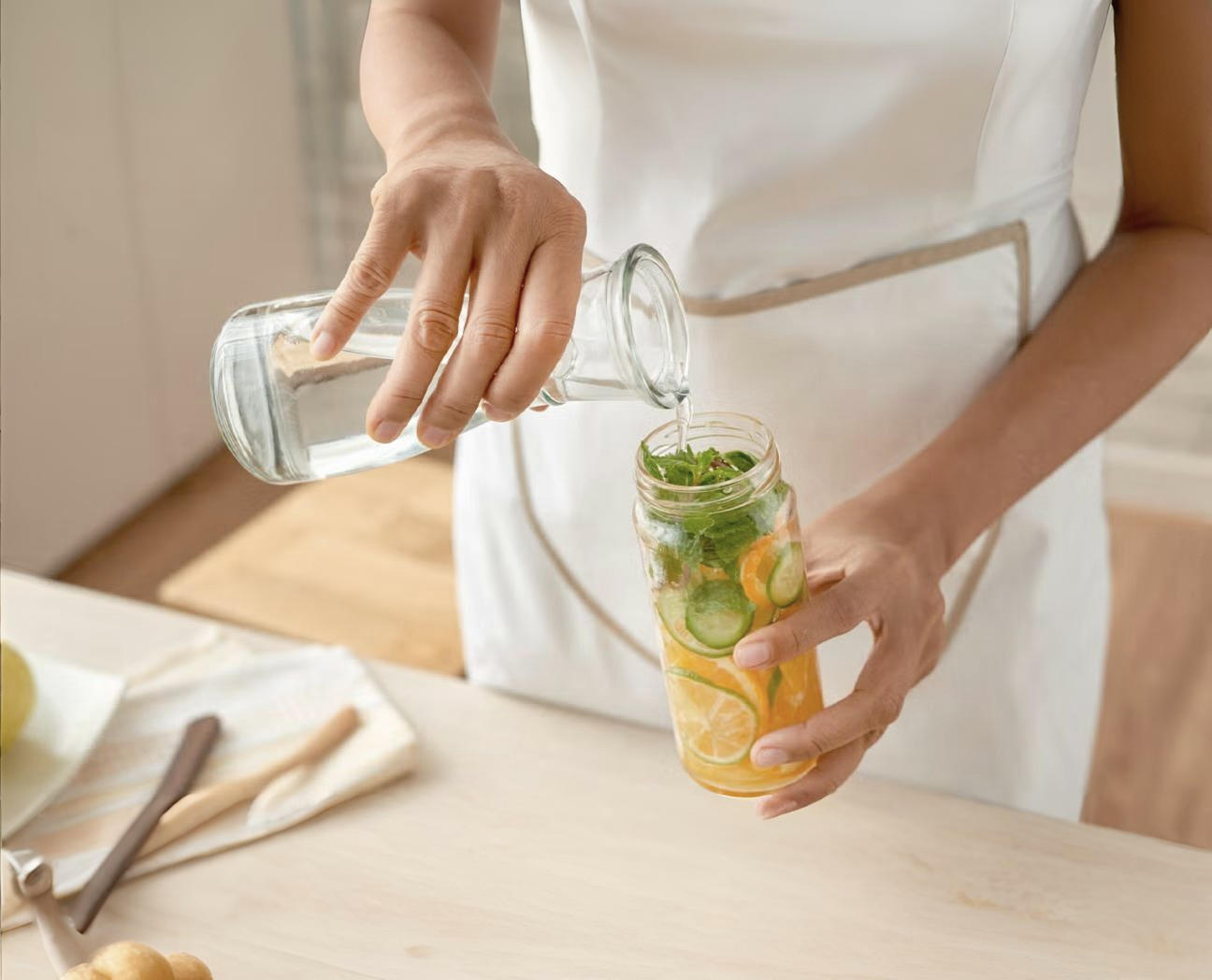
The Allure of Infused Waters: More Than Just a Pretty Drink?
At its core, infused water is simply water flavored by immersing fruits, vegetables, herbs, or spices. Think refreshing combinations like cucumber and mint, zesty lemon and ginger, or sweet strawberry and basil. Their appeal is undeniable: they look inviting, taste refreshing, and offer a natural, low-calorie alternative to sugary sodas or artificial juices. This makes them a popular choice for those looking to cut down on less healthy beverage options.The primary and most significant benefit of infused water is straightforward: it encourages you to drink more water. For many, plain water can be, well, plain. Adding a subtle hint of flavor can transform a mundane task into a delightful experience, making it much easier to meet your daily fluid intake goals.Benefits Rooted in Reality:
• Natural Flavor Enhancement: This is arguably the most significant advantage. Instead of reaching for sugary drinks that contribute to empty calories, tooth decay, and potential long-term health issues like type 2 diabetes, infused water offers a guilt-free and delicious way to tantalize your taste buds. It’s a simple swap that can have a big impact on your overall sugar consumption.• Encourages Consistent Hydration: By making water more palatable, infused varieties can be a game-changer for individuals who genuinely struggle to drink enough H2O throughout their day. Consistent hydration is critical for countless bodily functions, from regulating body temperature and lubricating joints to transporting essential nutrients and oxygen to cells, and removing waste products. Feeling tired or sluggish? Often, a glass of water is all you need.• A Hint of Nutrients (with a Clear Caveat): While infused water won't replace a balanced diet rich in whole foods, the fruits and vegetables steeped in the water do release trace amounts of vitamins, minerals, and antioxidants. For instance, a lemon slice offers a tiny boost of Vitamin C, while mint can aid digestion. However, it's crucial to understand that the nutritional contribution from infused water is minimal compared to consuming the whole fruit or vegetable. Don't rely on your infused water for your daily nutrient quota; it should be seen as an enjoyable addition, not a primary source of vitamins.Where the Hype Often Overtakes Reality: Support for "Detoxification": Here's where the marketing hype often overtakes scientific reality. Your body has incredibly efficient, built-in detoxification systems: primarily your liver and kidneys. These remarkable organs tirelessly filter waste, toxins, and metabolic byproducts, neutralizing harmful substances and preparing them for elimination. While proper hydration (which infused water helps with) is absolutely essential for these organs to function optimally, the idea that specific infused water recipes "detox" your body beyond what your organs already do is largely a marketing myth. No single drink will magically flush out toxins that your liver and kidneys aren't already handling perfectly well on their own. Focus on supporting these organs with a balanced diet, adequate sleep, and consistent hydration, rather than seeking a quick-fix "detox" drink.Beyond the Infusion: Debunking Pervasive Hydration Myths
The world of hydration is rife with well-meaning advice that sometimes misses the mark. Let's clear up some common misconceptions that might be leading you astray.Myth 1: You Must Drink Eight Glasses of Water a Day (The "8x8" Rule): This is perhaps the most famous hydration guideline, and while it's a decent general starting point, it's not a rigid rule for everyone. The truth is, your individual hydration needs vary significantly based on numerous factors:- Activity Level: If you're physically active or engaged in strenuous exercise, you'll sweat more and naturally need more fluid.- Climate: Living in a hot, humid, or even very dry environment dramatically increases your fluid requirements due to increased perspiration and evaporation.- Diet: If your diet is rich in water-dense foods (like fruits, vegetables, and soups), you'll obtain a significant amount of your daily water intake from food.- Health Status: Certain medical conditions (like fever, vomiting, or diarrhea) or specific medications can alter your fluid needs.- Pregnancy and Breastfeeding: These stages of life naturally demand increased fluid intake to support both mother and baby.
A better, more practical approach is to listen to your body. Thirst is your body's natural, reliable indicator that it needs fluid. Aim to drink when you're thirsty, and pay attention to the color of your urine—pale yellow generally indicates good hydration, while dark yellow can signal a need for more fluids.Myth 2: Sports Drinks Are Always Better Than Water After Exercise: For the casual exerciser or someone doing a moderate workout, plain water is almost always sufficient for rehydration. Sports drinks contain electrolytes (like sodium and potassium) and carbohydrates (sugars). While these are beneficial for endurance athletes engaged in intense, prolonged exercise (typically over an hour) or those sweating profusely in extreme heat, they are largely unnecessary for someone doing a moderate 30-minute gym session. The added sugars and calories in most sports drinks can counteract the benefits of a moderate workout for many individuals. Stick to water unless you're truly pushing your limits and require rapid electrolyte and carbohydrate replenishment.Myth 3: Coffee and Tea Don't Count Towards Your Daily Fluid Intake: For years, it was widely believed that caffeinated beverages were diuretics and therefore actively dehydrated you. While caffeine does have a mild diuretic effect, studies have repeatedly shown that for regular coffee and tea drinkers, the body adapts, and these beverages do contribute to overall fluid intake. They aren't as hydrating as plain water, but they certainly aren't actively dehydrating you to a significant degree. So, enjoy your morning brew; just don't rely on it as your sole source of hydration.Myth 4: If You're Thirsty, You're Already Dehydrated: While thirst is indeed a signal for fluid intake, it doesn't necessarily mean you're in a state of severe dehydration. It simply indicates that your body's fluid levels have dropped slightly below optimal. You can easily address this by drinking water. The key is to respond to thirst promptly rather than ignoring it until more pronounced symptoms of true dehydration (like dizziness, dry mouth, fatigue, or decreased urination) set in. Your body gives you a gentle nudge before it reaches a critical state.Myth 5: Electrolyte Water is Superior for Daily Hydration: Unless you're experiencing significant fluid loss through intense exercise, illness (like vomiting or diarrhea), or prolonged exposure to extreme heat, regular tap water provides all the hydration you need for daily activities. Most commercially available electrolyte-enhanced waters contain minimal amounts of electrolytes and often come with added sugars or artificial sweeteners that are unnecessary for general hydration. Save the specialized electrolyte solutions for when you genuinely need to replenish significant electrolyte losses, such as during intense athletic events or illness.Hydration for Life: A Practical Approach
The true secret to optimal hydration isn't about magical infused elixirs or rigid rules; it's about consistency, listening to your body, and making smart, informed choices.• Make Water Accessible: Keep a reusable water bottle handy throughout the day, whether you're at your desk, in the car, or running errands. Seeing it reminds you to drink.• Incorporate Water-Rich Foods: Enjoy plenty of fruits, vegetables, and soups. These foods contribute significantly to your overall daily fluid intake and provide essential nutrients.• Respond to Thirst: Trust your body's natural signals. Drink when you feel thirsty.• Monitor Urine Color: A pale yellow color is your personal, easy-to-read hydration indicator. Darker urine suggests you need to drink more.• Experiment with Infusions (Sensibly): If infused waters genuinely help you drink more, embrace them! But focus on their flavor benefits and the fact they encourage water consumption, not their unsupported "detox" claims.Ultimately, hydration is foundational to good health. By understanding the nuances of infused waters and discarding misleading myths, you can approach your daily fluid intake with greater clarity and effectiveness, ensuring your body functions at its absolute best.
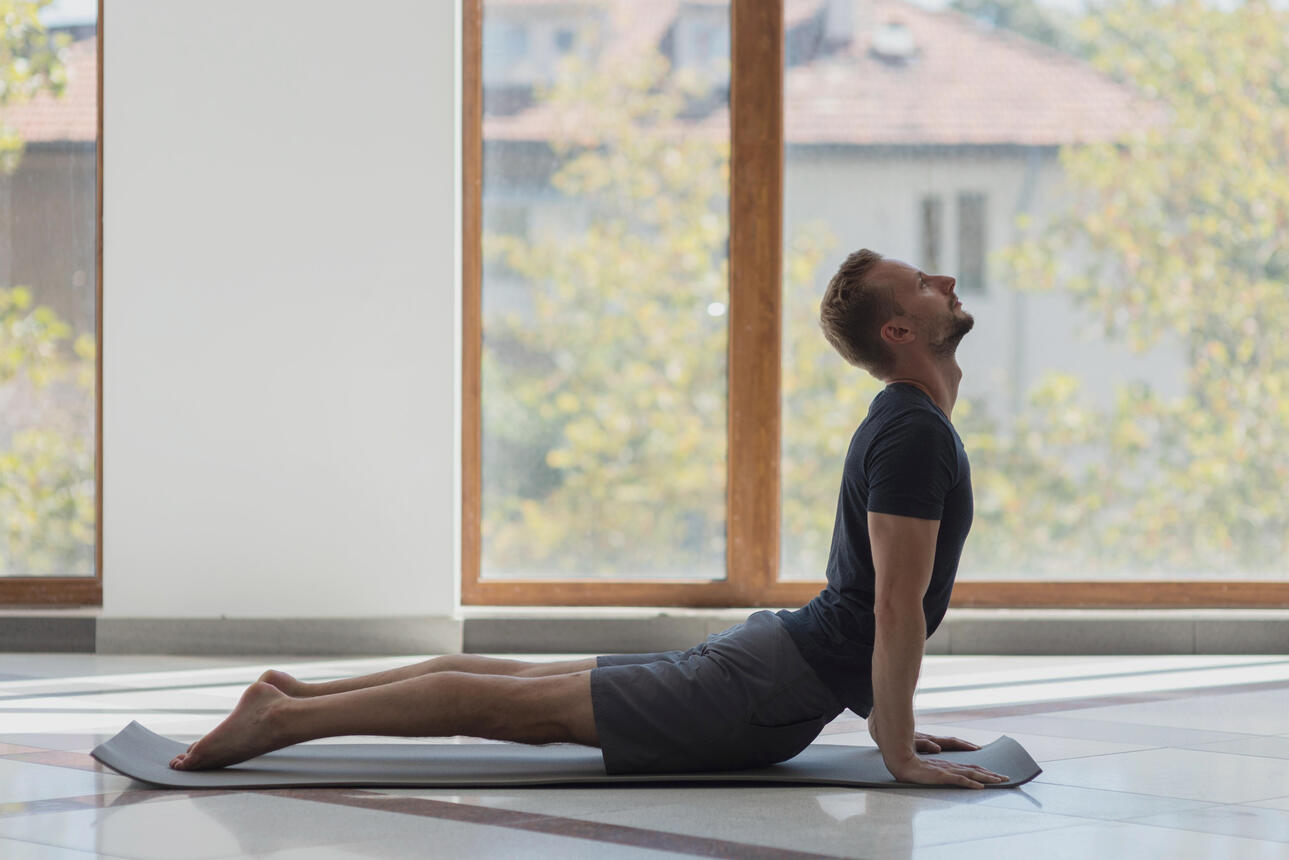
Movement
The psoas muscle, your core connector: To release or not?
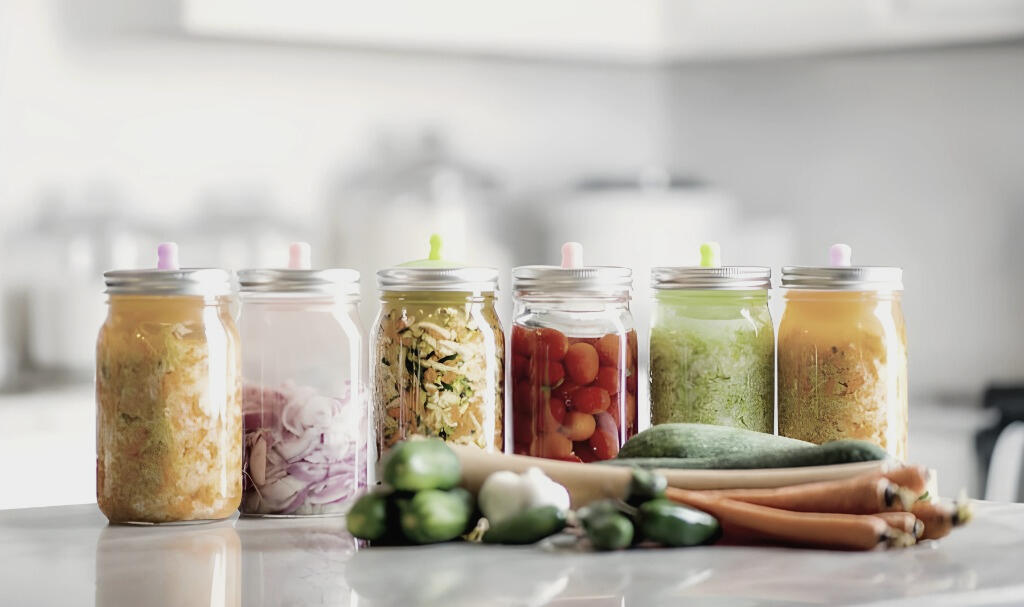
Nutrition
Fermented foods explained:
Expert Interview Dr. Hanadie
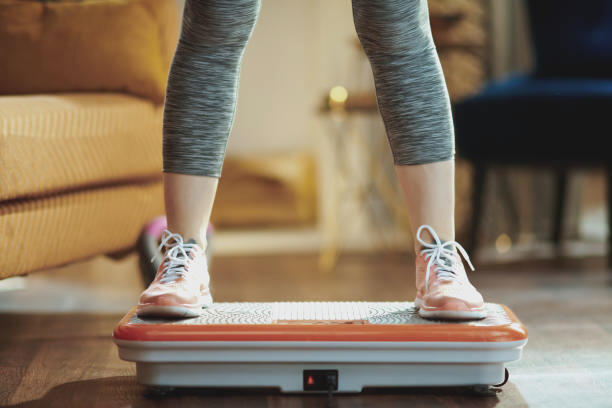
Gadgets
Unlocking the power of
vibration plate
Navigating the menopause
heat maze
Menopause. The word itself can conjure images of hot flashes, sleepless nights, and a rollercoaster of emotions. Now, imagine navigating this significant life transition while also contending with the relentless embrace of a scorching climate. For millions of women residing in perpetually warm regions, the challenge of menopause isn't just internal – it's amplified by the external environment. But fear not, this isn't a battle you have to lose. By understanding the unique interplay between your changing hormones and a hot climate, you can not only survive but truly thrive.

The Double Whammy: Why Heat Exacerbates Menopause SymptomsIt's no secret that hot flashes are a hallmark of menopause. These sudden surges of heat, often accompanied by sweating and palpitations, are caused by fluctuating estrogen levels affecting the brain's thermoregulatory center. In a warm climate, the body is already working harder to maintain a comfortable internal temperature. When a hot flash strikes, this delicate balance is thrown into disarray, leading to more intense and prolonged episodes.Beyond hot flashes, the heat can also worsen other menopausal symptoms:- Sleep Disturbances: Night sweats are notorious for disrupting sleep. In a warm environment, even without a hot flash, falling and staying asleep can be a struggle, leading to increased fatigue and irritability.- Dehydration: Increased sweating, both from hot flashes and the ambient temperature, elevates the risk of dehydration, which can trigger headaches, dizziness, and exacerbate fatigue.- Skin Sensitivity: Changes in skin elasticity and moisture due to hormonal shifts can be amplified by constant exposure to heat and humidity, potentially leading to increased irritation and dryness.- Mood Fluctuations: The cumulative effect of disturbed sleep, physical discomfort, and the general stress of managing symptoms in a challenging climate can amplify feelings of anxiety, frustration, and low mood.Your Action Plan: Strategic Solutions for a Cooler MenopauseThe good news is that you possess a powerful toolkit to mitigate these challenges. By adopting a proactive and multi-faceted approach, you can reclaim your comfort and well-being.* Master Your MicroclimateYour immediate environment is your first line of defense. This isn't about massive renovations, but smart, simple adjustments:- Embrace Strategic Air Conditioning and Fans: These are your allies. Utilize air conditioning at comfortable, consistent temperatures, particularly in your bedroom. Position fans strategically to create airflow in living areas. Consider portable, rechargeable fans for personal use when out and about.- Cooling Fabrics are Your Friend: Ditch synthetic materials that trap heat. Opt for breathable fabrics like cotton, linen, and bamboo for clothing and bedding. Look for "wicking" materials designed to draw moisture away from the skin, especially for sleepwear.- Hydration is Non-Negotiable: This goes beyond simply drinking water. Make it a conscious effort throughout the day. Keep a water bottle handy and sip regularly. Infuse water with fruits and herbs for added flavor and electrolytes. Consider electrolyte-rich drinks, especially after vigorous activity or during intense hot flashes.* Nourish Your Body, NaturallyWhat you put into your body, and how you move it, plays a significant role in managing menopausal symptoms:- Hydrating Foods: Incorporate water-rich fruits and vegetables like cucumber, watermelon, berries, and leafy greens into your diet. These not only contribute to hydration but also provide essential vitamins and minerals.- Limit Trigger Foods: Certain foods and beverages are known to trigger hot flashes. These often include spicy foods, caffeine, alcohol, and very hot drinks. Experiment to identify your personal triggers and reduce their consumption, especially during warmer months.- Prioritize Sleep Hygiene: Despite the heat, establishing a calming bedtime routine is crucial. Cool your bedroom before sleep, use light bedding, and avoid screen time before bed. Consider a cool shower or bath before turning in.- Strategic Exercise: Regular physical activity is beneficial for overall health and mood, but timing is key in a hot climate. Opt for early morning or late evening workouts when temperatures are cooler. Choose indoor activities with air conditioning or consider swimming, which offers a refreshing way to exercise.* Explore Hormonal and Non-Hormonal TherapiesWhile lifestyle adjustments are powerful, sometimes additional support is needed.- Consult Your Healthcare Provider: This is paramount. Discuss your symptoms openly and honestly. Your doctor can help determine if Hormone Replacement Therapy (HRT) is a suitable option for you. HRT can be highly effective in managing hot flashes and other menopausal symptoms.- Non-Hormonal Options: If HRT isn't for you, or if you prefer alternatives, your doctor can discuss non-hormonal medications (such as certain antidepressants or blood pressure medications) that can help reduce hot flash frequency and severity.- Herbal Remedies and Supplements: While some women find relief with certain herbal remedies like black cohosh or red clover, it's crucial to discuss these with your doctor. Their efficacy can vary, and they may interact with other medications.* Cultivate Mindfulness and Stress ReductionThe mental and emotional aspects of menopause are just as important as the physical.- Stress Management Techniques: Practices like deep breathing, meditation, and yoga can help calm your nervous system, potentially reducing the intensity and frequency of hot flashes triggered by stress.- Connect and Share: Talking to other women going through similar experiences can be incredibly validating and provide a sense of community. Online forums or local support groups can be invaluable resources.- Prioritize Self-Care: This isn't a luxury; it's a necessity. Engage in activities that bring you joy and help you relax, whether it's reading a book, listening to music, or spending time in nature (during cooler parts of the day!).Embracing Your Next ChapterMenopause is a natural and inevitable stage of life. While a warm climate can certainly add an extra layer of complexity, it doesn't have to define your experience. By understanding the unique challenges and proactively implementing these strategies, you can navigate this transition with greater comfort, confidence, and well-being. This is an opportunity to tune into your body, embrace new routines, and emerge on the other side feeling empowered and ready for your next vibrant chapter.
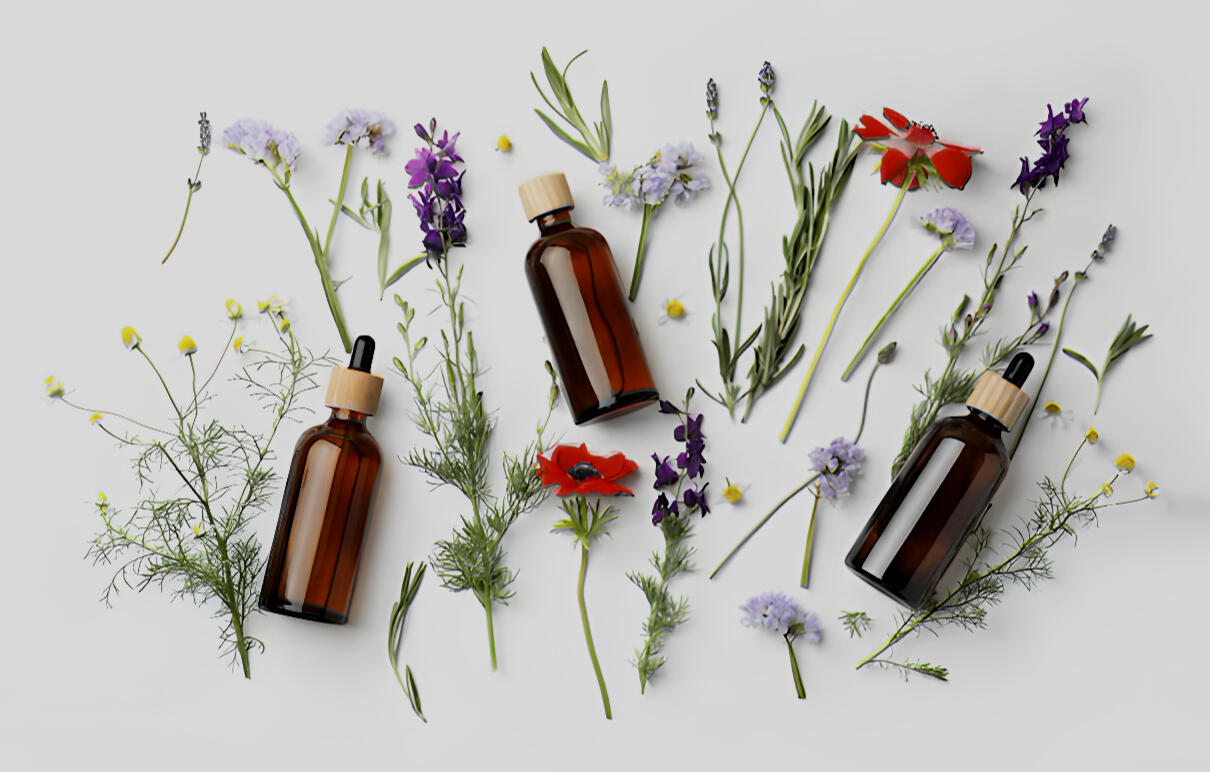
Botanicals
Unlocking nature's healing power
with essential oils

Health
Beyond "just getting old"
into muscle soreness relief

Nutrition
Gadgets
The brain-body benefits
of anti-inflammatory foods
It is not all in your mind;
Pain misconceptions
Body pain and mind pain are often thought of as two separate and distinct entities, but the truth is that the science behind them is much more complex than what initially meets the eye. To effectively manage and treat pain, it is crucial to understand the intricate relationship between our physical and mental well-being. In this article, we will delve into the science behind body pain and mind pain, debunking common myths along the way.
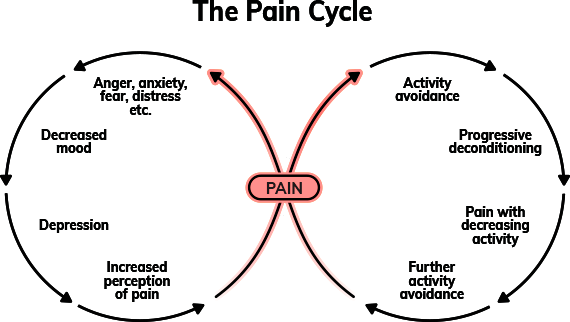
Understanding the Science Behind Body Pain
Contrary to popular belief, body pain is not solely caused by physical injuries or conditions. Our nervous system plays a crucial role in how pain is processed and experienced by our bodies. Specialized nerve endings called nociceptors send signals to our brain when we sustain an injury or experience inflammation, alerting it to potential damage. The brain then processes these signals, generating the sensation of pain. However, pain is subjective and can vary from person to person. Genetics, age, gender, and overall health can also influence how our bodies perceive and process pain. Understanding these physical factors is vital in developing personalized pain management strategies that are effective for each individual.Unraveling the Complexities of Mind Pain
Our thoughts and emotions can significantly impact our overall well-being and shape how we experience pain. Research has shown that our mental and emotional state can amplify or alleviate pain sensations. For individuals with chronic pain, stress, anxiety, and depression can intensify discomfort. Conversely, engaging in activities that promote relaxation and positive emotions can provide pain relief. Psychological factors can influence the release of neurotransmitters in the brain, which affects how our nervous system processes pain signals. Additionally, our thoughts and beliefs about pain can shape our experience of it. Understanding the interplay between the mind and pain is crucial for developing comprehensive pain management strategies. By addressing psychological and emotional factors alongside physical ones, we can empower individuals to better manage and alleviate their pain."Only Physical Injuries Can Cause Body Pain"
One of the most common misconceptions about body pain is that it can only be caused by physical injuries. While sprains, fractures, and muscle strains can certainly lead to pain, it is important to recognize that pain can also arise from psychological and emotional factors. Research shows that stress, anxiety, and depression can manifest as physical sensations of pain in the body. This phenomenon, known as mind pain or psychogenic pain, highlights the powerful mind-body connection. It is not uncommon for individuals to experience pain without any apparent physical cause. Understanding this allows us to approach pain management from a holistic perspective, recognizing the influence of our thoughts and emotions on pain perception. By exploring alternative treatment options that address psychological and emotional factors alongside physical symptoms, we can empower individuals to manage and alleviate their pain more effectively."Mind Pain Is Not Real, It's All In Your Head"
Mind pain is not a figment of one's imagination; it is a genuine experience, just like physical pain. The scientific evidence behind mind pain suggests that when individuals experience psychological distress, their brains react and release certain chemicals that can amplify pain signals in the body. Therefore, even though there may not be a physical injury, the pain is very much real and can be just as debilitating. It is crucial to understand the distinction between mind pain and physical pain, as mind pain is rooted in the complex interactions between our thoughts, emotions, and the central nervous system. Addressing mind pain with the same seriousness and empathy as physical pain is essential in providing appropriate treatment for those suffering from it.The Connection Between Body and Mind: How Mental Health Impacts Physical Well-Being
The intricate connection between our body and mind is widely recognized, and our mental health can deeply affect our physical well-being. Chronic stress, anxiety, and other mental health conditions can weaken our immune system, making us more susceptible to illnesses, and increase the risk of cardiovascular problems, digestive issues, and chronic pain. Moreover, mental health can also affect our sleep patterns, energy levels, and our ability to recover from injuries or illnesses. Therefore, understanding this connection is crucial in providing holistic care and treatment for individuals facing mind pain.The Importance of Holistic Approach
A holistic approach that integrates physical and mental therapies is crucial in addressing pain effectively. Rather than viewing physical and mental health as separate entities, it is essential to recognize their interconnected nature. Integrating both physical and mental therapies in pain management can lead to more comprehensive and long-lasting relief. Physical therapies such as medication, exercise, and manual therapies can address the physical symptoms of pain, while mental therapies such as cognitive-behavioral therapy, mindfulness, and relaxation techniques focus on managing stress, anxiety, and negative thought patterns. By combining these approaches, individuals can develop a toolbox of strategies to manage both the physical and mental aspects of their pain. This integrated approach is especially beneficial for individuals with chronic pain, where the line between body and mind pain becomes blurred. Additionally, research has shown that addressing underlying mental health conditions can enhance the effectiveness of physical interventions such as medication. In conclusion, recognizing the intricate connection between the body and mind and providing comprehensive care that targets all aspects of pain is crucial in addressing pain effectively.Empowering Individuals
To effectively manage pain, it is crucial to empower individuals to take an active role in their pain management. Encouraging self-care and stress management techniques can play a crucial role in reducing both physical and mental pain. Self-care practices, such as proper nutrition, regular exercise, and adequate sleep, are essential in maintaining overall health and well-being. By reducing inflammation and promoting healing, these practices can significantly alleviate physical symptoms. Additionally, prioritizing mental and emotional well-being is critical, as chronic pain can often lead to increased stress, anxiety, and depression, which can worsen pain perception. Engaging in stress management techniques, such as meditation, deep breathing exercises, and journaling, can help calm the mind and reduce the overall impact of pain. Moreover, seeking support from loved ones and joining support groups can provide a sense of connection and understanding, contributing to overall well-being."Emphasizing the Significance of Understanding the Interplay between Physical and Mental Pain for Effective Treatment"
In conclusion, recognizing the connection between physical and mental pain is essential for effective treatment and management. Pain is not solely physical but also influenced by our mental and emotional states. By adopting a holistic approach to address and alleviate pain, we can better understand and manage it. Engaging in self-care practices such as proper nutrition, exercise, and sleep can promote physical well-being and significantly reduce pain. Prioritizing mental and emotional well-being by practicing stress management techniques like meditation and deep breathing exercises can help calm the mind and reduce the impact of pain. Seeking support from loved ones and joining support groups can provide a valuable sense of community that can positively impact overall well-being. By incorporating these practices into our daily routines, we can take an active role in our pain management and regain control over our lives. By demystifying the myths surrounding physical and mental pain, we can pave the way for a more comprehensive and effective approach to pain management. Together, let us empower ourselves to achieve a better quality of life by addressing both the physical and mental aspects of pain with confidence.

Resources
Unlocking nature's healing power
with essential oils
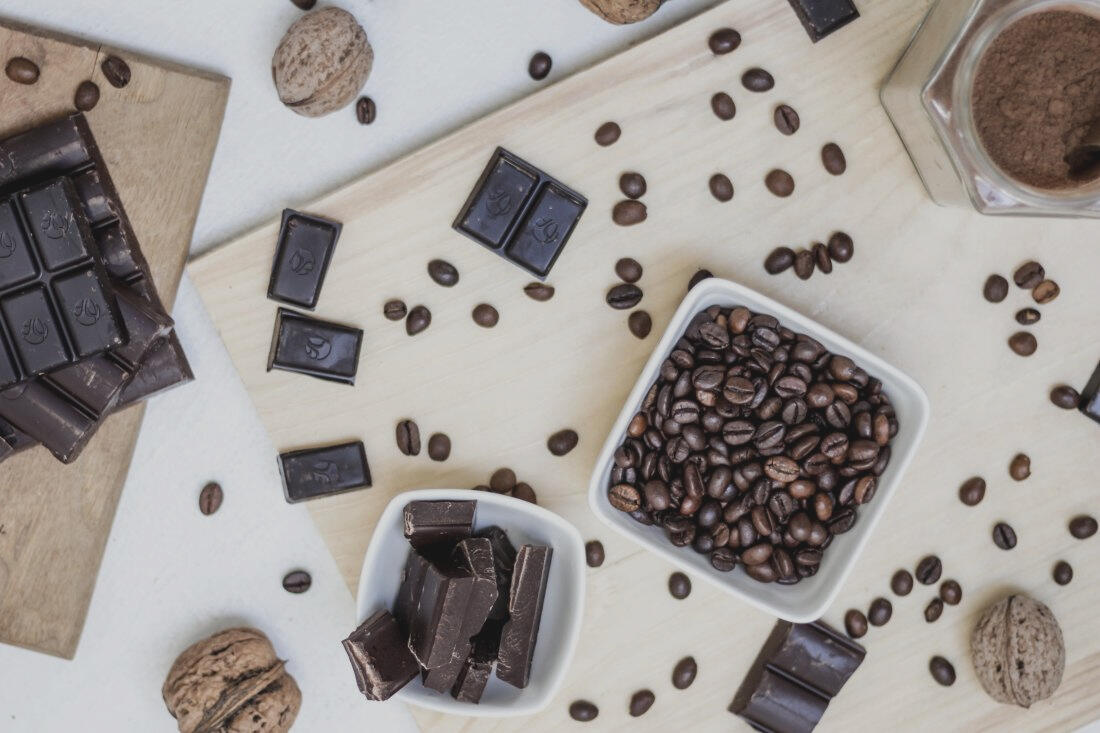
Health
The painkiller myth: Chocolate, coffee, and their flavonoids

Health
Beyond "just getting old"
into muscle soreness relief
Spinal pain: Beyond the stretch
Unlocking movement for lasting relief
When that familiar twinge in your back strikes, whether it's a dull ache in your lower lumbar, a persistent knot in your mid-back, or that sharp, searing pain in your upper spine, what's your first instinct? For many, it's to stretch. We twist, bend, and pull, seeking that immediate, elusive relief. And while a good stretch can certainly offer a temporary reprieve, often the pain creeps back, sometimes even shifting to a different part of the spine, manifesting as coccyx discomfort or a renewed ache higher up. This frustrating cycle highlights a crucial truth: when it comes to spinal pain, stretching alone is rarely the complete solution.The promise of relief often comes from general activities like attending a yoga class or taking daily walks. While these are undoubtedly beneficial for overall health, for many types of persistent spinal pain, they simply aren't enough. These conditions often demand a more targeted, nuanced approach – a deliberate movement strategy designed to address the root cause, build foundational strength, and progressively restore your body's ability to perform daily activities with ease and comfort.This isn't about avoiding movement; it's about embracing the right kind of movement. It's about empowering your body to move smarter, stronger, and more resiliently.
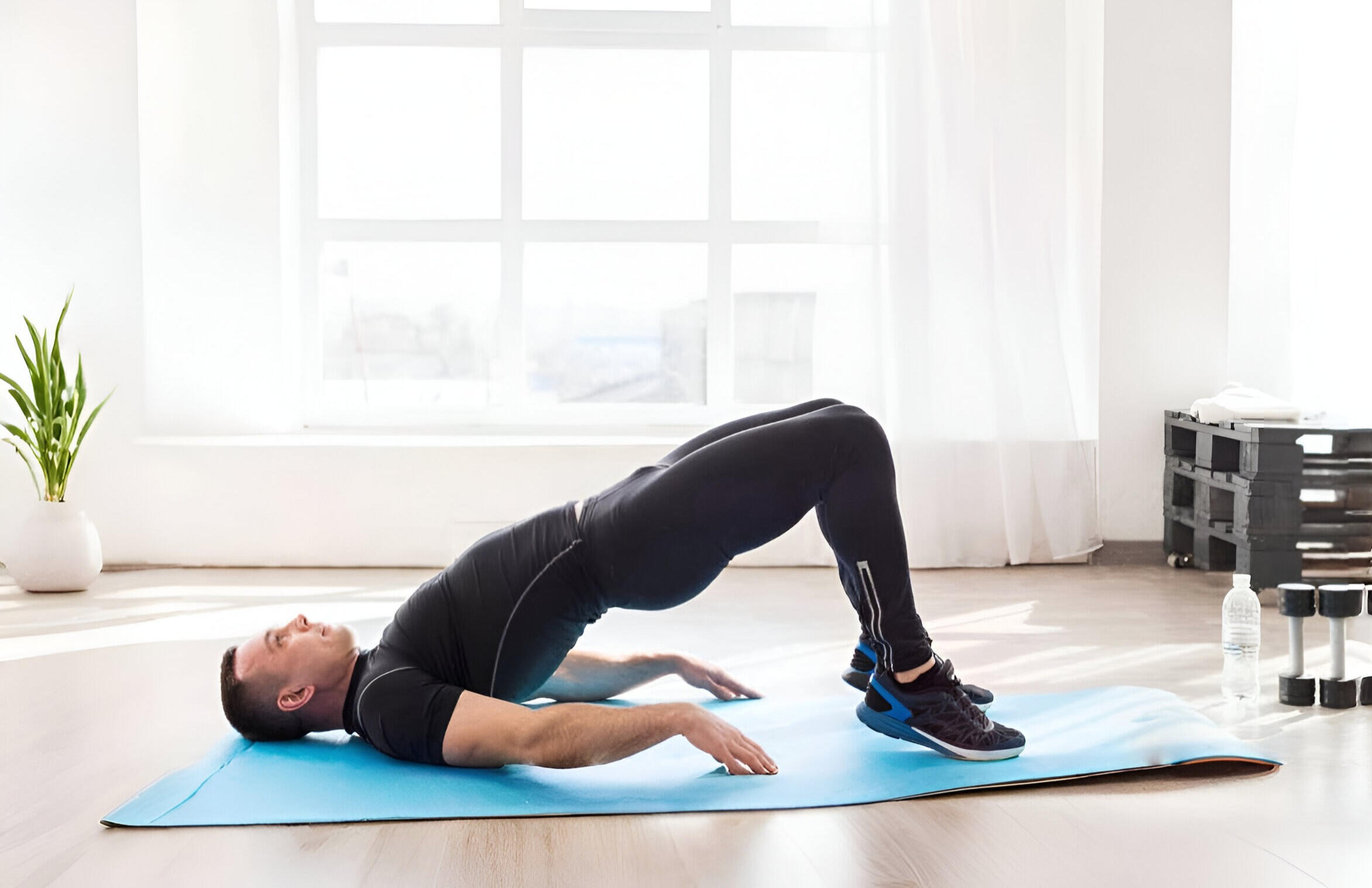
The Root of the Problem: Why Stretching Falls Short
To understand why stretching alone isn't the silver bullet for spinal pain, we need to look beyond surface-level tightness. Spinal pain often arises from a complex interplay of factors:
• Muscle Imbalances: Some muscles become overactive and tight, while their opposing partners become weak and inhibited. Stretching the tight muscles without addressing the weakness in others creates an ongoing imbalance.
• Neurological Inhibition: Sometimes, muscles aren't just weak; they're "offline" or neurologically inhibited. The brain isn't effectively communicating with them, making them unable to engage properly. This can happen due to chronic pain, injury, or sedentary habits.
• Lack of Stability: The spine is designed for both mobility and stability. If the deep core muscles that stabilize the spine (like the transverse abdominis and multifidus) are weak, the spine becomes vulnerable, leading to pain. Stretching without building stability can sometimes even increase instability if done improperly.
• Poor Movement Patterns: Daily habits, whether prolonged sitting at a desk, repetitive lifting, or even inefficient walking, can engrain dysfunctional movement patterns that continuously stress the spine.
• Connective Tissue Restrictions: Fascia, the web-like tissue that surrounds muscles and organs, can become tight and restricted, limiting movement and causing pain.
• Emotional and Stress Factors: Chronic stress often leads to muscle guarding and tension, particularly around the neck, shoulders, and lower back, creating a vicious cycle of pain.
When these underlying issues are at play, a passive stretch might offer a fleeting sensation of relief, but it won't re-educate your nervous system, strengthen inhibited muscles, or correct ingrained dysfunctional patterns.Beyond the Generic: The Need for Targeted Movement Protocols
This is where specialized movement protocols come into play. They go beyond generic exercises and focus on rebuilding your body's innate strength and control. These protocols are not about "one-size-fits-all" fixes but about tailoring movements to your specific spinal needs, aiming for progressive goals that build up your body's capacity towards full, pain-free activity.
Such protocols typically integrate several key components:
1. Neuroactive Exercise: Re-establishing the Brain-Body Connection
This is perhaps the most critical component for long-term spinal health. Neuroactive exercises are designed to "wake up" dormant muscles and improve the communication pathways between your brain and your body. They focus on quality of movement over quantity, ensuring the right muscles are engaging at the right time.
• Why it helps: When you have pain, your brain often "forgets" how to properly activate certain stabilizing muscles. Neuroactive exercises retrain these pathways, restoring efficient movement patterns and reducing reliance on compensatory, pain-causing muscles. They teach your core and spinal stabilizers to fire correctly, providing intrinsic support for your spine.
• Examples: These might involve subtle, precise movements focusing on pelvic tilts, segmented spinal articulation, or gentle activation of deep core muscles while maintaining perfect form. Think about exercises that make you truly feel the muscle working, rather than just moving through a range of motion.
2. Foundational Strength & Stability: Building Your Inner Armor
Once the neural connection is re-established, building strength in your core and supporting musculature is paramount. This isn't just about six-pack abs, but about the deep stabilizing muscles that act like a natural corset for your spine.
• Why it helps: A strong core provides essential support for your spine, protecting it during daily activities, heavy lifting, and even prolonged sitting. It prevents excessive movement in vulnerable segments and distributes forces more evenly.
• Examples: Exercises like Bird-Dog (slow and controlled), Dead Bugs, planks (modified for comfort), Pallof Presses, and stability ball exercises are excellent for building functional core strength that directly translates to spinal stability.
3. Mobility with Control: Range of Motion That Matters
While pure stretching might be insufficient, having adequate, controlled range of motion in your hips, thoracic spine (mid-back), and shoulders is crucial. Restrictions in these areas often force the lumbar spine to compensate, leading to pain.
• Why it helps: Restoring healthy movement around the spine reduces compensatory stress. For instance, good hip mobility ensures your lower back doesn't have to over-flex or over-extend during bending or lifting. Thoracic mobility prevents your neck and lower back from becoming stiff and painful due to a rigid mid-back.
• Examples: Gentle cat-cow stretches (focusing on spinal articulation), thoracic rotations, hip mobility drills (like 90/90 stretches or hip circles with control), and gentle shoulder blade glides can all contribute. The emphasis is on controlled movement within your pain-free range, building awareness of how each segment moves.
4. Lifestyle and Environmental Modification: Your Daily Blueprint for Pain Prevention
Movement protocols are powerful, but they work best when supported by conscious adjustments to your daily life. Your habits and environment significantly impact your spinal health.
-Ergonomics at Work/Home: Prolonged sitting is a common culprit for spinal pain.
-Desk setup: Ensure your monitor is at eye level, your chair provides good lumbar support (or use a lumbar roll), and your feet are flat on the floor. Consider a standing desk or incorporate regular standing breaks every 30-60 minutes.
-Seating: Avoid slouching on couches. Opt for supportive chairs that allow your spine to maintain its natural curves.
-Movement Breaks: Integrate mini-movement breaks throughout your day. Stand up, walk around, do a few gentle stretches, or perform a few neuroactive exercises every hour.
-Sleep Posture: Your mattress and pillow should support the natural curves of your spine. Side sleepers should place a pillow between their knees, and back sleepers might benefit from a pillow under their knees.
-Lifting Techniques: Always lift with your legs, keeping your back straight, and engaging your core. Avoid twisting while lifting.
-Mindful Movement: Become more aware of your posture and movement patterns during daily activities – bending over, reaching, standing, and sitting. Small adjustments can make a big difference over time.Sample Neuroactive and Foundational Exercises:
Here are a few examples of exercises that emphasize activation and controlled movement, forming the building blocks of a resilient spine. Remember to start slowly and prioritize perfect form over reps. If you experience pain, stop and consult a professional.
- Pelvic Tilts (Supine): Lie on your back, knees bent, feet flat. Gently flatten your lower back into the floor by tilting your pelvis, engaging your lower abdominals. Then, gently arch your lower back, creating a small space. Repeat slowly and rhythmically, focusing on the movement coming from your pelvis, not your glutes or legs.
- Transverse Abdominis Activation: Lie on your back, knees bent. Place your fingertips on the bony prominences of your hips, then slide them slightly inwards. As you gently exhale, imagine drawing your belly button towards your spine without moving your pelvis or lower back. You should feel a subtle tension under your fingertips. Hold for a few seconds, then release.
- Dead Bug (Controlled Progression): As discussed in previous articles, this is excellent for core stability. Start with just arm or leg movements, then progress to opposite arm and leg, always ensuring your lower back remains stable and doesn't arch off the floor.
- Bird-Dog (Focus on Stability): Start on all fours, hands under shoulders, knees under hips. Engage your core. Slowly extend one arm forward and the opposite leg straight back, keeping your torso perfectly still and level, avoiding any rotation or arching in your lower back. Imagine a glass of water on your lower back that you don't want to spill.Your Path to Lasting Relief: Professional Guidance is Key
Ultimately, managing spinal pain and truly achieving "movement made easy" is a journey of understanding and conscious action. While these principles and exercises offer a powerful starting point, your body is unique. The precise cause of your pain, and therefore the most effective movement protocols, will be specific to you.This is why professional assessment is invaluable. A skilled physiotherapist, osteopath, chiropractor, or integrative movement specialist can conduct a thorough evaluation, identifying your specific muscle imbalances, movement dysfunctions, and neurological inhibitions. They can then design a personalized program, guiding you through specific neuroactive exercises, progressive strengthening, and mobility drills tailored to your needs. They can also help you modify your lifestyle and environment effectively.Don't settle for temporary relief from stretching alone. Empower yourself with knowledge, embrace targeted movement, and seek expert guidance to build a strong, resilient spine that allows you to live actively and pain-free. Your body is designed to move with ease – let's help it remember how.
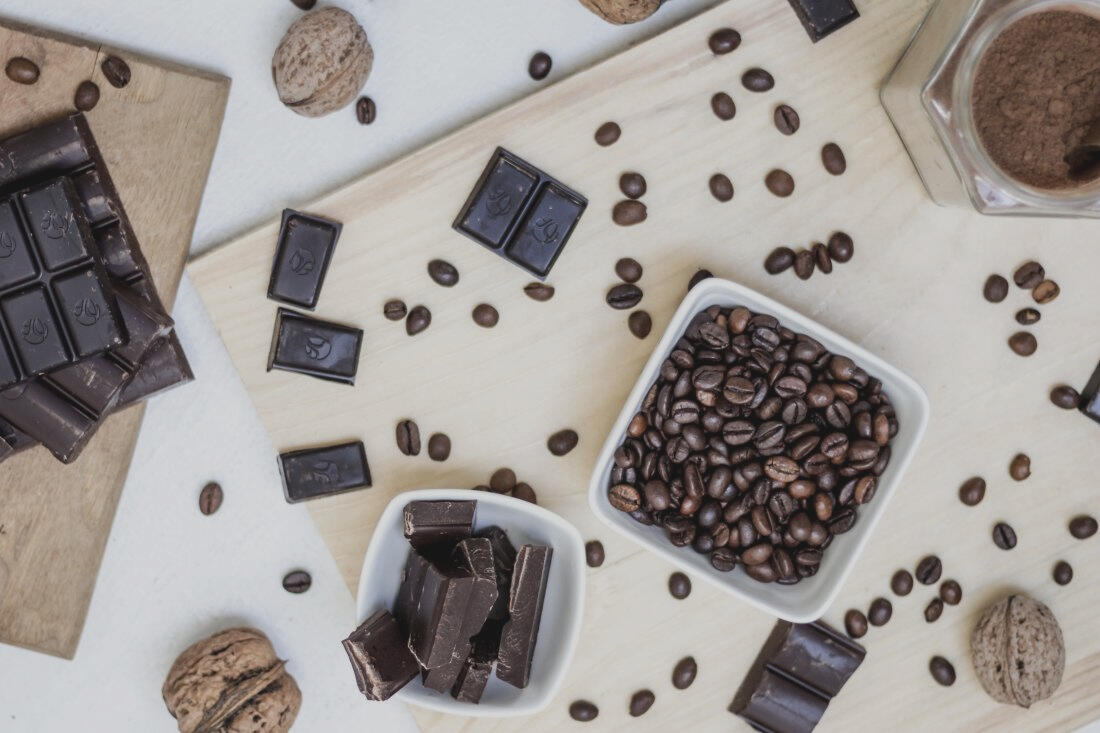
Health
The painkiller myth: Chocolate, coffee, and their flavonoids
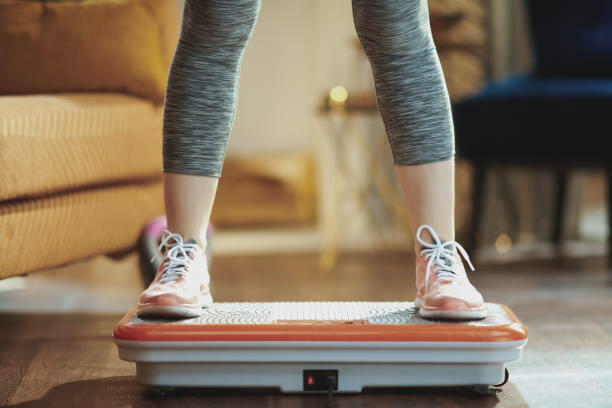
Gadgets
Unlocking the power of
vibration plate
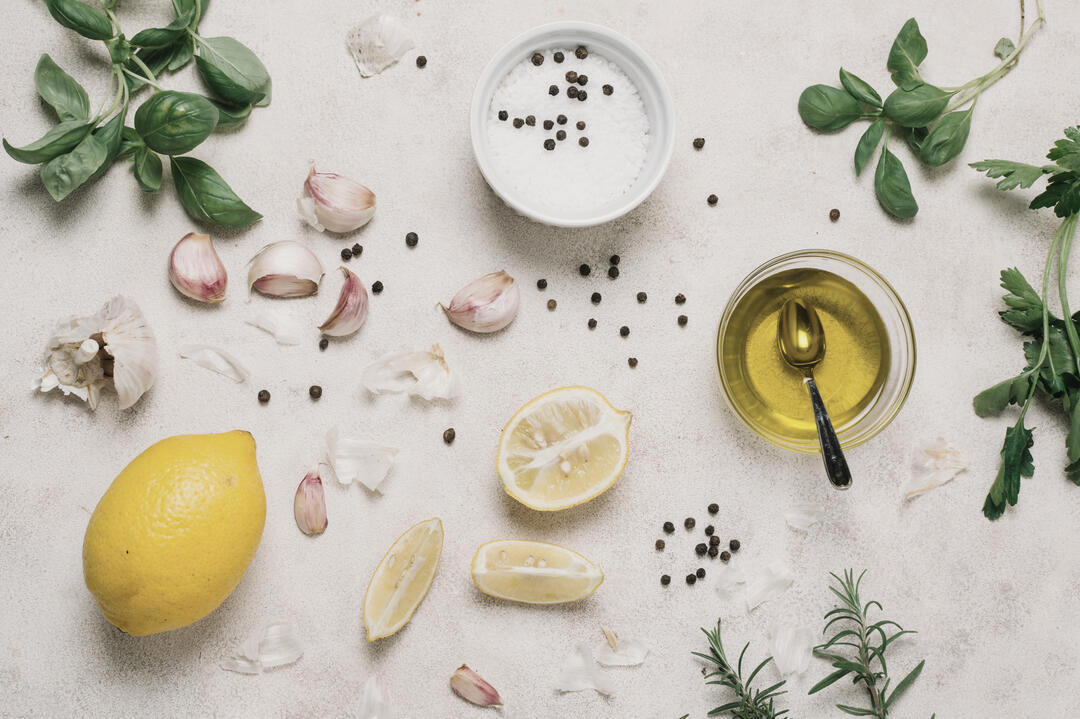
Nutrition
Dip your way to relief:
Spreads for a pain-free you
Unlocking the power of
vibration plate
Vibration plate therapy, also known as whole-body vibration therapy, is a revolutionary approach to pain relief and overall wellness. This therapy involves standing, sitting, or lying on a vibrating platform that stimulates the muscles and joints in the body. The vibrations produced by the plate stimulate the body's natural reflexes, causing the muscles to contract and relax multiple times per second. This results in numerous health benefits, including pain relief, increased circulation, and improved flexibility.
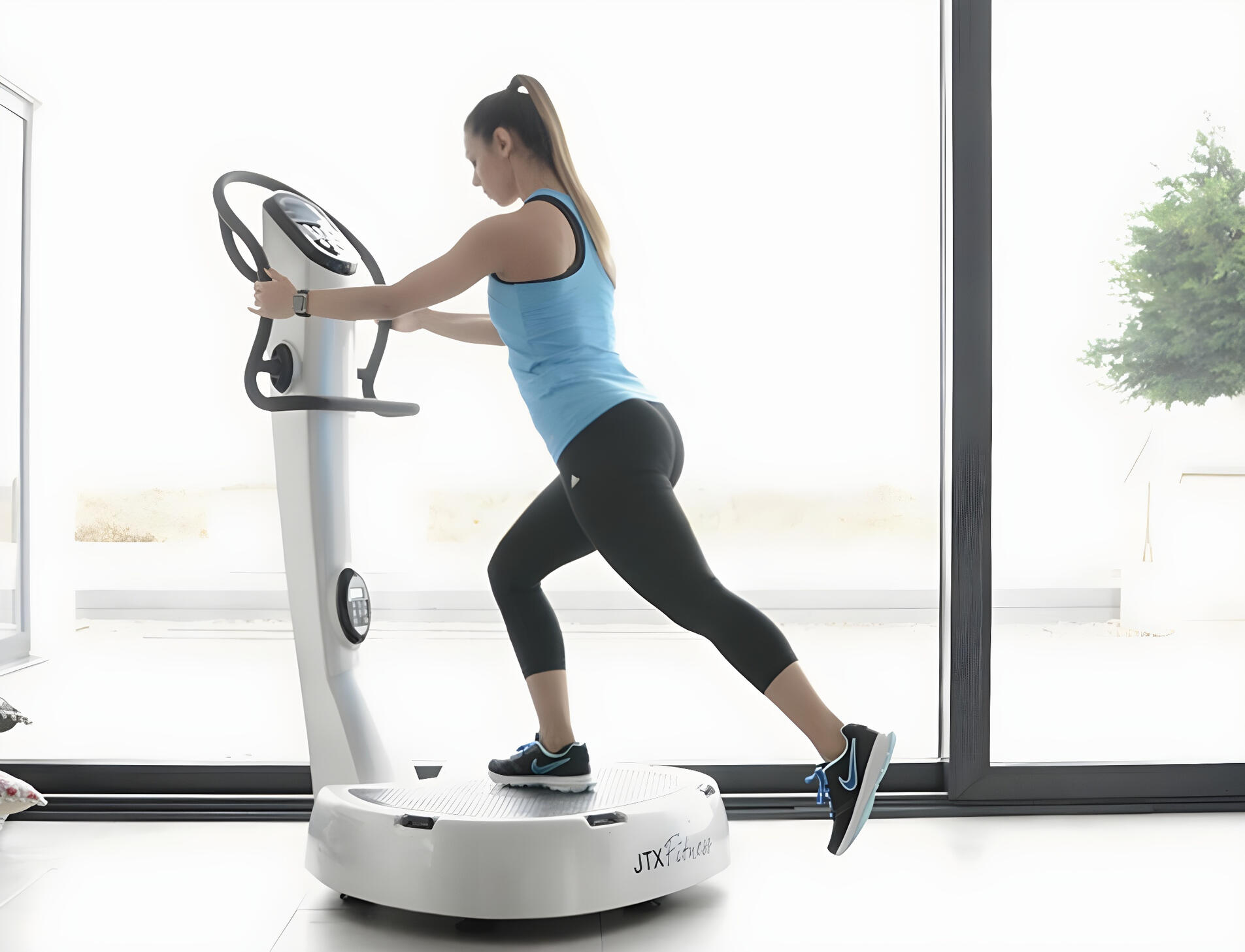
The Science Behind Vibration Plate Therapy
The science behind vibration plate therapy lies in the principle of mechanical vibrations. When the body is exposed to these vibrations, the muscles respond by contracting and relaxing rapidly. This reflexive action activates the muscles at a higher intensity than traditional exercise alone. As a result, more muscle fibers are engaged, leading to increased strength and improved muscle tone.
Additionally, the vibrations produced by the plate stimulate the lymphatic system, which helps to remove toxins from the body. This detoxification process can have a positive impact on overall health and well-being. Furthermore, the increased circulation caused by the vibrations can aid in the delivery of oxygen and nutrients to the muscles, promoting faster recovery and reducing inflammation.Benefits of Vibration Plate Therapy
Vibration plate therapy offers a wide range of benefits for individuals seeking pain relief and improved physical well-being. One of the key advantages of this therapy is its ability to alleviate pain. The vibrations produced by the plate can help to reduce muscle soreness, joint pain, and even chronic pain conditions such as arthritis. The rapid muscle contractions and relaxations caused by the vibrations can also help to increase flexibility and range of motion, making it an ideal therapy for individuals recovering from injuries or surgeries.In addition to pain relief, vibration plate therapy can also contribute to weight loss and improved body composition. The rapid muscle contractions induced by the vibrations stimulate the metabolism, leading to increased calorie burning. This can be particularly beneficial for individuals looking to shed excess pounds or tone their bodies. Furthermore, the increased muscle engagement and improved circulation can help to reduce the appearance of cellulite and improve the overall texture of the skin.Vibration Plate Exercises for Pain Relief
Vibration plate therapy offers a variety of exercises that can be performed to target specific areas of the body for pain relief. One effective exercise is the squat. By standing on the vibration plate with your feet shoulder-width apart and bending your knees, you can engage the leg muscles and promote joint stability. This exercise can be particularly beneficial for individuals with knee or hip pain.Another beneficial exercise is the plank. By placing your forearms on the vibration plate and assuming a plank position, you can engage the core muscles and improve overall stability. This exercise can help to alleviate lower back pain and strengthen the abdominal muscles.For individuals experiencing neck and shoulder pain, a shoulder press exercise can be beneficial. By sitting on the vibration plate and holding dumbbells at shoulder height, you can perform a pressing motion upwards. This exercise targets the muscles in the upper body and can help to relieve tension and pain.Vibration Plates and Osteoporosis
Vibration plate therapy has shown promise in improving bone density and reducing the risk of osteoporosis. The vibrations produced by the plate stimulate the bones, encouraging the growth of new bone tissue. This can be particularly beneficial for individuals at risk of osteoporosis or those who have already been diagnosed with the condition.To use vibration plates for osteoporosis, it is important to start with low-intensity vibrations and gradually increase the intensity over time. Consult with a healthcare professional before incorporating vibration plate therapy into your osteoporosis treatment plan to ensure it is safe and appropriate for your specific needs.Vibration Plate Therapy and Fitness Routine
Vibration plate therapy can be easily incorporated into your existing fitness routine to enhance your overall results. One way to do this is by using the vibration plate as a warm-up before your regular workout. By standing on the plate for a few minutes, you can stimulate the muscles and increase blood flow, preparing your body for exercise.Additionally, you can perform exercises on the vibration plate itself to maximize the benefits. This can include squats, lunges, push-ups, and other bodyweight exercises. The vibrations provided by the plate will intensify the workout, allowing you to engage more muscles and burn more calories.Choose the Right Vibration Plate for Your Needs
When choosing a vibration plate for your needs, there are several factors to consider. First, determine the specific goals you want to achieve with vibration plate therapy.
If you are primarily seeking pain relief, a lower-intensity vibration plate may be sufficient. However, if you are looking to enhance your fitness routine and build strength, a higher-intensity plate may be more suitable.It is also important to consider the size and weight capacity of the vibration plate. Ensure that the plate can accommodate your height and weight comfortably to avoid any safety issues. Additionally, look for features such as adjustable vibration intensity and pre-programmed workouts to customize your experience.Safety Precautions and Considerations
While vibration plate therapy can provide numerous benefits, it is important to use it safely and responsibly. Start with lower intensity levels and gradually increase the intensity as your body adapts. It is also recommended to consult with a healthcare professional before starting vibration plate therapy, especially if you have any pre-existing medical conditions or injuries.When using the vibration plate, always maintain proper posture and form. This will help to maximize the effectiveness of the exercises and reduce the risk of injury. Additionally, listen to your body and stop if you experience any pain or discomfort during the therapy session.Vibration Therapy vs. Other Pain Relief Solutions
Vibration plate therapy offers a unique approach to pain relief and overall wellness compared to other traditional pain relief solutions.Unlike medications or invasive procedures, vibration therapy is non-invasive and does not have any known side effects. It provides a natural and holistic approach to pain relief that can be easily incorporated into your daily routine.Furthermore, vibration therapy offers a wide range of additional benefits beyond pain relief. It can improve circulation, increase flexibility, promote weight loss, and enhance overall physical well-being. This makes it a versatile and comprehensive solution for individuals seeking a holistic approach to their health.Vibration plate therapy is a powerful tool for pain relief and overall wellness. By understanding the science behind this therapy and the benefits it offers, individuals can incorporate vibration plate exercises into their fitness routine and experience the transformative effects it can have on their physical well-being. When choosing a vibration plate, it is important to consider your specific needs and goals to ensure you select the right equipment for your requirements.Using a vibration plate mindfully and responsibly unleashes a powerful solution for pain relief that can transform your life. Embrace it confidently and watch your well-being elevate.
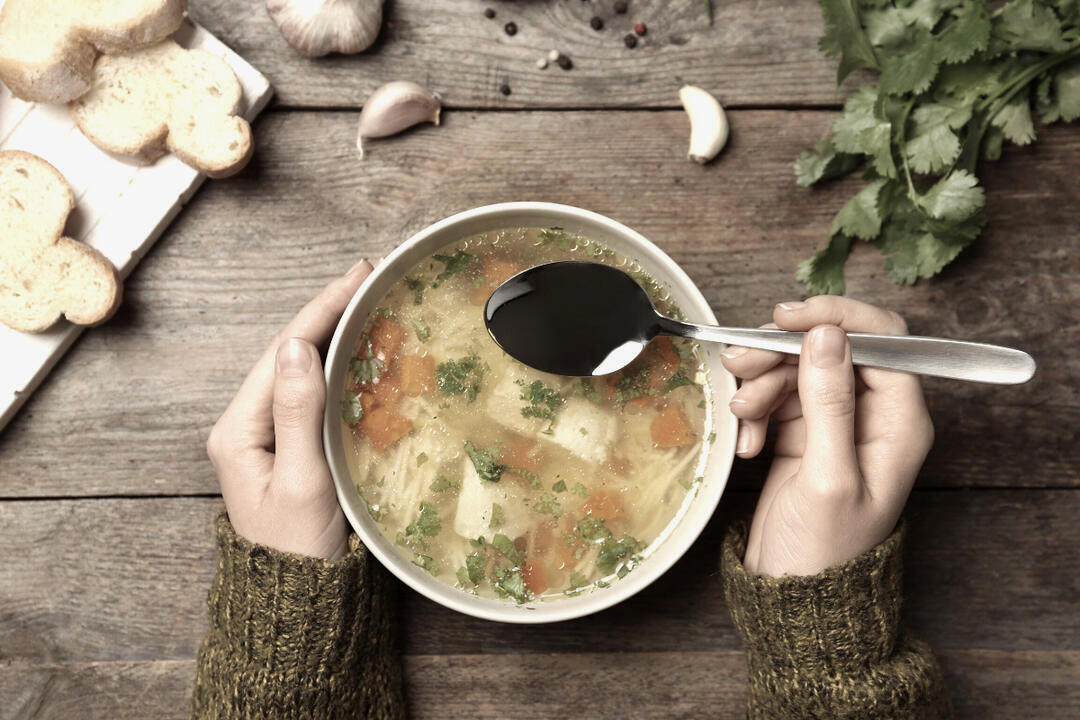
Nutrition
Immunity boosters:
Foods that fight back

Health
Beyond "just getting old"
into muscle soreness relief
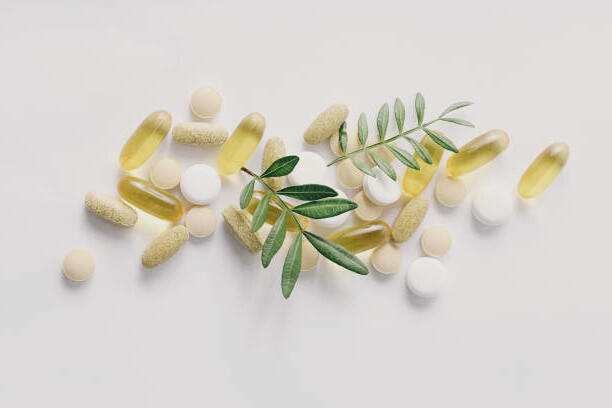
Botanicals
Boosting your body's natural defenses with supplements
Tackle that nagging pain!
Ladies In Business Magazine Global | Dubai | UAE
By: Dr. Hanadie B. Mustafa
4 December 2022
It's a pain you know. The one that has been bugging you for weeks, maybe even months. It is the pain that doesn't seem to go away no matter what you do. You have arrived at the right place if you are tired of living with pain and are ready to take it head-on. It's time to dig a little deeper into the causes of nagging pain and give you some ideas on how to eliminate it for good. Read on if you're ready to be pain-free for good!
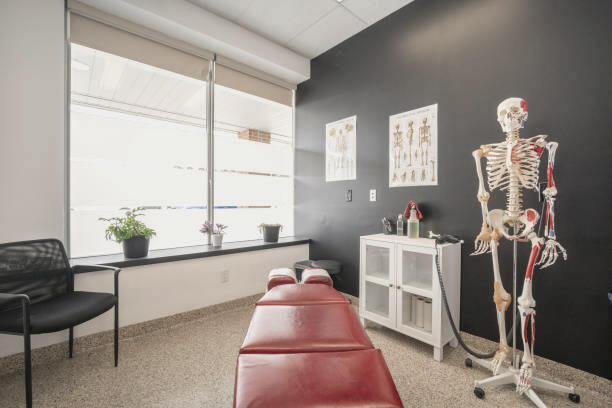
What's the cause?
It is possible for nagging pain to have many causes. Injuries, overuse of body parts, or chronic conditions such as arthritis may cause this pain. It could also be caused by something as simple as incorrect posture.If you have nagging pain that persists, it's important to see a doctor to rule out any serious underlying conditions. Once any serious conditions are ruled out, you can work on treating the pain with home remedies or over-the-counter medications. If the pain is still not relieved, you may need to see a physical therapist or other specialist for further treatment.Unusual solutions
There are a variety of options available for those looking to find relief from nagging pain. Over-the-counter pain killers can be effective at managing pain. Natural remedies such as essential oils may also provide relief. It is critical to identify the underlying cause of the pain and treat it accordingly. For example, if the pain is due to an injury, rest and physical therapy may be necessary.
Chronic pain from a nagging, ongoing injury can have a negative effect on your quality of life. Recognizing that chronic pain is a problem is the first step towards finding effective treatment.Massage therapy
Massage therapist can provide relief from chronic pain in two main ways. It increases circulation to the injured area, which encourages the body to heal itself. It also improves the flexibility of stiff muscles to relieve pain and tightness.Gua Sha and Tui Na
The Chinese scraping massage, deep tissue massage and remedial bodywork also work for those with chronic pain. Combined with stretching and neuromuscular therapy, this neurological massage can reduce pain by increasing blood flow to the back, which in turn elongates tightened muscles.Neuroactive exercise
Therapists who are licensed and highly educated professionals can help patients develop the necessary skills to manage and improve their chronic pain condition. This practice often involves the development of a safe activity program and advice on how to correct problematic postures and movements via a series of sensory, body-activated exercises.Jin Shin Jyutsu
JSJ is a Japanese method of acupressure that uses light finger pressure to stimulate points on the body while fully clothed. The JSJ restores a blocked flow of energy, which may have occurred as a result of illness or pain. As well as improving digestion, JSJ offers benefits for acute and chronic pain, boosting the immune system, alleviating fatigue, reducing stress, and improving digestion.Doctor's visit
If you're experiencing nagging pain, it's essential to see a doctor to determine the cause. In some cases, nagging pain can be a sign of a more serious problem. If you have any of the following symptoms, then you must see a doctor right away:
-The pain is severe
-The pain is constant
-The pain is getting more severe
-You have other symptoms like fever or swelling.If you're not sure whether or not your pain is serious, it's always safer to err on the side of caution and see a doctor. They can help determine the cause of your pain and recommend appropriate treatment.If you're struggling with nagging pain, don't despair. There are plenty of things you can do to get relief. First, identify the source of your pain and then take steps to address it. If your pain is due to muscle tension, try some simple stretches or a massage. If it's due to an injury, give yourself time to rest and heal. You may also want to consider seeing a doctor or physical therapist for help.Whatever you do, don't ignore your pain or try to tough it out. That will only make it worse in the long run.
This is an old article, hence new photos and links have been added to enrich your reading experience.

Nutrition
The brain-body benefits
of anti-inflammatory foods

Bodywork
Finding the right
pain management approach
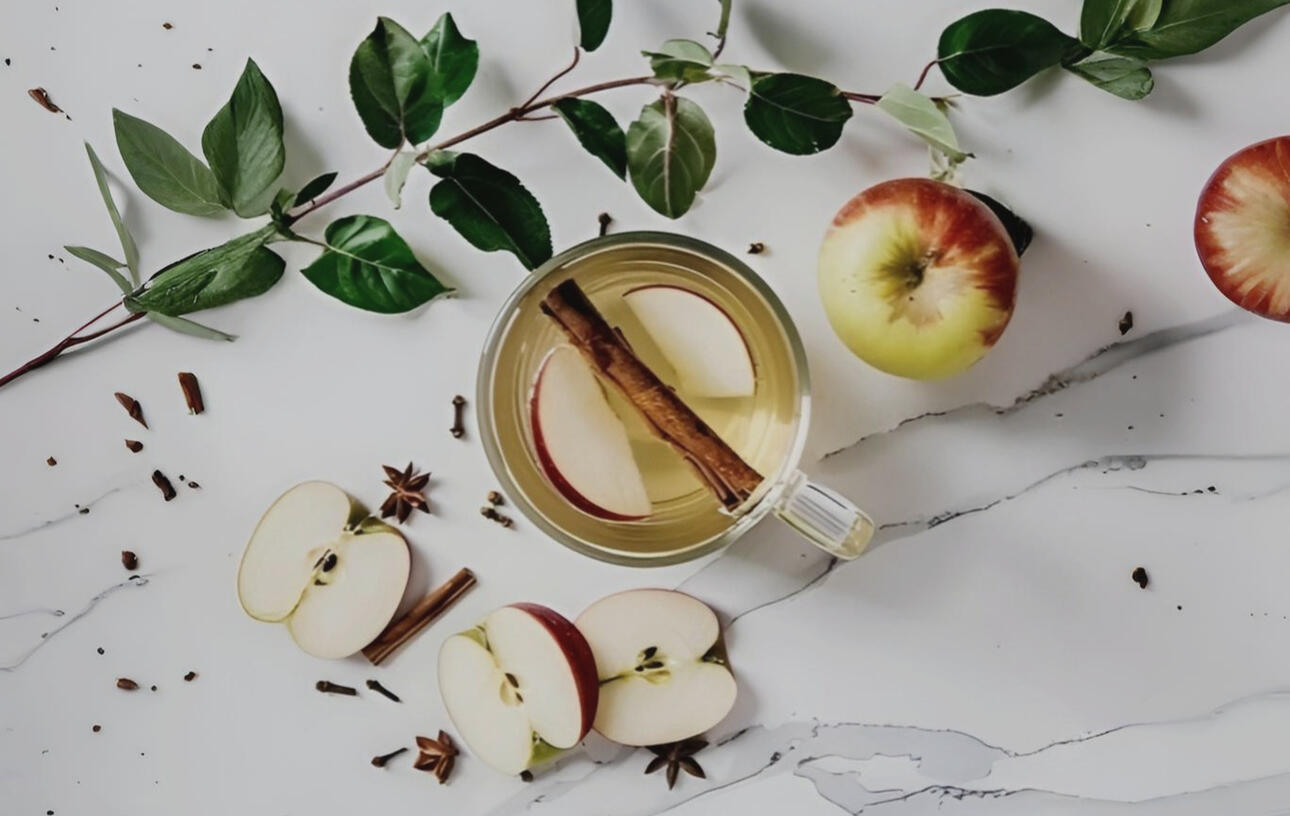
Health
The truth about infused
waters and hydration myths
On fermented food in the UAE:
Where to find it and why you should eat it
The National News | Newspaper | Dubai | UAE
By: Stacie Overton Johnson | Dr. Hanadie B. Mustafa and Mia Man
2 March 2018
Mia Man’s tips for fermentation
- Start with a simple recipe such as yogurt or sauerkraut.- Keep your hands and kitchen tools clean. Sanitize knives, cutting boards, tongs and storage jars with boiling water before you start.- Mold is bad: the colour pink is a sign of mold. If yogurt turns pink as it ferments, you need to discard it and start again. For kraut, if you remove the top leaves and see any sign of mold, you should discard the batch.- Always use clean, closed, airtight lids and containers such as mason jars when fermenting yogurt and kraut. Keep the lid closed to prevent insects and contaminants from getting in.From kimchi and kefir, to kombucha and kraut, fermented food is “it” at the moment.Fermentation occurs when food is broken down from its original state by bacteria, yeast or other micro-organisms. Fermentation leaves “good” bacteria behind, which is known to aid digestion, but levels up the taste of the ingredients.
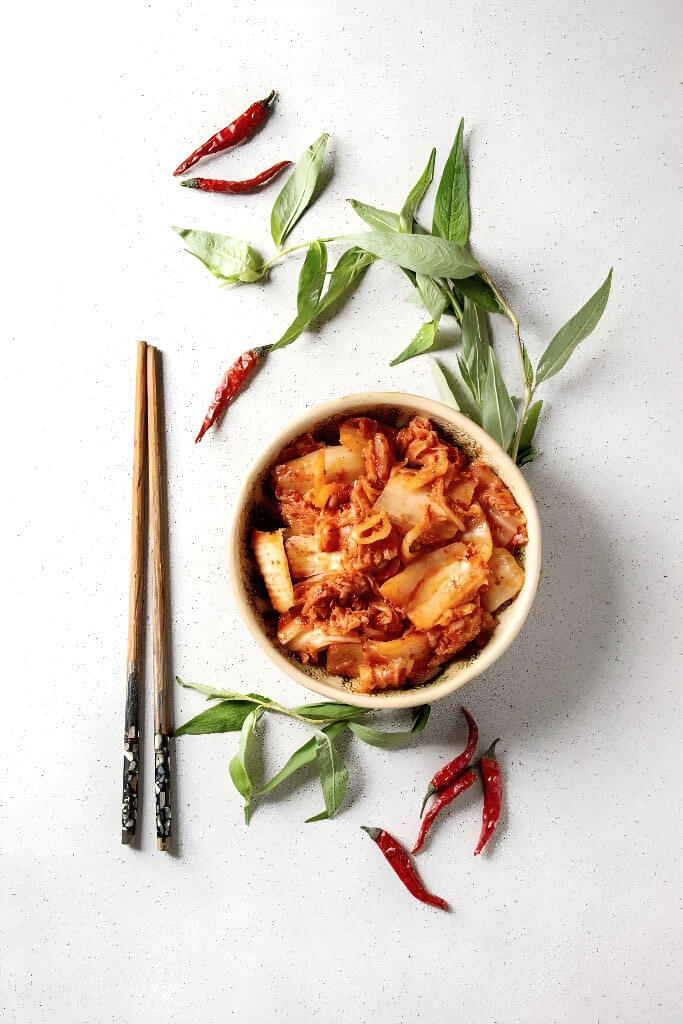
Where to eat out for fermented foods in the UAE
A rising number of chefs across the region are experimenting with this culinary tool du jour at the moment, creating complex flavours. Take Japanese restaurant Tomo, at Raffles Dubai, for instance. It has pickled squid on its menu as well as cuttlefish served with fermented soybeans.You can get amazake, a Japanese drink made with fermented rice, at the health café Comptoir 102 in Jumeirah (it has cardamom, cinnamon and almond milk in it, too) or try the cucumber wakame at Wild and the Moon on Alserkal Avenue in Al Quoz. It’s a salad made with wakame cucumbers, seaweed, ginger, sesame and lacto-fermented plum umeboshi (Japanese salt plums).At Abu Dhabi’s Dai Pai Dong, you can try the wok-fried string beans with Chinese preserved vegetables (vegetables fermented by pickling with salt and brine), while at Manna Land in Al Nahyan, the menu includes a Korean pickled pancake made with kimchi, a fermented side dish that’s as essential in Korean cuisine as hummus is to Middle Eastern food.Advice from a nutrition coach
The rising popularity of fermented foods is not only exciting for those who love the intricate flavours that come with fermentation, but also for people keen on healthy eating.“We have good and bad bacteria in our gut all the time,” Mia Man, a board-certified health and nutrition coach in Dubai, says. “Issues arise when the ratio of bad bacteria outnumber the good. It makes sense to keep nurturing the good bacteria to keep the gut and the immune system strong and healthy.”Good bacteria such as lactobacillus, that can be found in fermented food, has been shown to help gut issues and digestion, and Man says nurturing that bacteria in our gut is vital for good health.“When our body is stressed it creates an environment in which the bacteria that were once good or ‘dormant’ can multiply and wreak havoc in our system. Too many antibiotics, antibacterial soap, food that isn’t prepared properly, excess sugar, stress and lack of sleep are things that can cause an imbalanced body. One way we can get back toa good balance is through fermented foods.”Research suggests it helps everything from anxiety to cholesterol
A growing body of research offers insight into just how beneficial to health fermented foods are.Studies have shown a strong link between fermented dairy foods and weight maintenance, while others have shown frequent yogurt consumption can reduce the risk of cardiovascular disease, Type 2 diabetes and overall mortality.In 2015, the Iranian Journal of Public Health issued a study that showed drinking kefir(fermented milk) improves glucose levels and cholesterol in patients with Type 2 diabetes, while a 2015 study in the
Journal Of Psychiatry Research
have shown consumption of fermented food can lower social anxiety among young adults and improve skin. In a review of several studies that specifically looked at kimchi's effects, researchers found this popular fermented food has anti-cancer, anti-obesity, anti-aging and colorectal health properties, as well as offering benefits to the brain, immunity, skin and cholesterol.“Lactic acid fermentation enhances the micro-nutrient profile of foods, which means they’re full of probiotics, enzymes, vitamins and minerals,” says Hanadie Basil, a holistic therapist, lifestyle coach and diet and nutrition consultant in Dubai.Most of us already eat some form of a fermented food, possibly without even knowing it. Food and drinks such as kefir, salami, sauerkraut, sourdough bread, many yogurts, cheeses and apple cider vinegar are all fermented.But Man warns, be careful, because some of those foods can pose risks. "Some dairy products are fermented, but not all are as beneficial as you might think. A lot of children's yogurts might have live cultures, but they're jam-packed with sugar. Don't be fooled by buzzwords."To start adding fermented food to your daily diet, it’s best to start small. “Eating fermented food daily can only do good but start with small quantities,” adds Man. “Maybe a tablespoon of coconut yogurt or kraut with breakfast and work your way up to more. Eating too much good bacteria at once can feel a bit overpowering. But once you notice a difference in your overall well-being and health, you won’t want to live without a daily dose of good bacteria.”Basil says the popularity of fermented foods is likely to keep increasing. “Fermented foods are gaining in popularity, in part, because consumers are trying to find ways to get back to eating more natural whole foods. Fermentation restores gut health; it increases vitamin A and C levels; it helps remove toxins from the body; it has cancer-fighting properties and it helps you absorb nutrients better.”Why many eat less fermented foods today
But you may have to search a bit to find an array of ready-made fermented foods in stores in the UAE, although it is getting easier.“Sadly, with advances in technology and food preparation, these time-honoured traditional foods have been largely lost in our society,” notes Man. “The amount of probiotics and enzymes available in the average diet has declined sharply over the last few decades as pasteurised milk has replaced raw, pasteurised yogurt has replaced homemade and vinegar-based pickles and sauerkraut have replaced the traditional lacto-fermented versions.“It’s a lot to do with shelf life. Supermarkets want food that will last forever on their shelves, so they don’t lose money. However, we are the ones who lose out. Instead of the nutrient- rich foods full of enzymes and probiotics that our grandparents ate, the average diet today consists of mainly ‘dead’ foods.”Make the healthful food at home
Both Man and Basil encourage people to try making fermented foods at home instead of relying on what may – or may not be – available in stores.Basil says: “It’s remarkably easy to start food fermentation at home. Yogurt is the easiest to start with. You need to clean everything thoroughly, have a suitable starter culture and patience. Do not rush things.”Another simple recipe to try at home is sauerkraut. “All you need is cabbage, herbs,water, salt and a mason jar,” Man says. “Everyone can do this. Even children can getinvolved in this little food experiment.”If it still sounds too intimidating a step to try on your own, both women offer nutrition workshops that include segments on the practice of fermentation.“I think people are fed up with being sick and are realising that conventional medicine does not always solve the problem,” Man adds. “We have easy access to information about how we can support our health using food as preventative medicine. People are waking up to this concept. It works. You really are what you eat.”To learn more about Man's nutrition training class, which includes a full day on fermentation, visit:
www.graciouslygreen.com/raw-chef-certification-courses. For information on Basil's nutrition courses, find her on: www.facebook.com/acacia.holistic.RECIPES
------------------
Dill and Cucumber Kraut by Mia Man- Ingredients
2 heads cabbage, finely sliced
1 tablespoons of dried dill or a handful of fresh dill, finely chopped
2 large cucumbers, sliced
4 tablespoons of sea salt or pink salt
Brine – add the salt to 2 cups distilled water- Method
Sterilise equipment and wash vegetables thoroughly.Put cabbage, dill, cucumbers and brine in a large bowl. Mix well with clean hands, massaging in the salt. Allow the juices to release from the cabbage until it becomes ‘soft’.Transfer vegetables, herbs and brine to a one-litre (or one-quart) glass jar. Pack down firmly. There should be no air pockets or spaces (this is important). The brine should come at least one inch above the vegetables. If not, add more brine.Cover the jar with an airtight lid. Culture at room temperature until the desired flavour and texture are achieved.“Burp” every few days by opening and closing the lid (you will hear a burping noise as gasses release). You can culture the kraut from one week to six or seven weeks, depending on how tangy you want it.Once it’s fermented and you’ve started eating it, store the jar in the refrigerator. The kraut’s flavour will continue to develop as it ages.Fermented yogurt, by Hanadie Basil- Ingredients
3 tablespoons plain yogurt
3 cups of 2 per cent milk- Method
Place milk in a large saucepan over medium-high heat; cook until it reaches 45C (very warm but doesn’t burn your fingers).Stir occasionally to prevent scorching, about 5 to 7 minutes.Whisk together 1 cup milk and the yogurt, then stir in remaining milk.
Transfer to a one-litre (or one-quart) jar.Wrap the jar (without the lid) in two clean kitchen towels, completely covering the side sand top. Let sit undisturbed in a warm place until yogurt has the consistency of custard, about four to five hours.Next, refrigerate the uncovered jar. When it’s cool to the touch (after about 30 minutes),close with an airtight lid.
This is an old article, hence new photos and links have been added to enrich your reading experience.
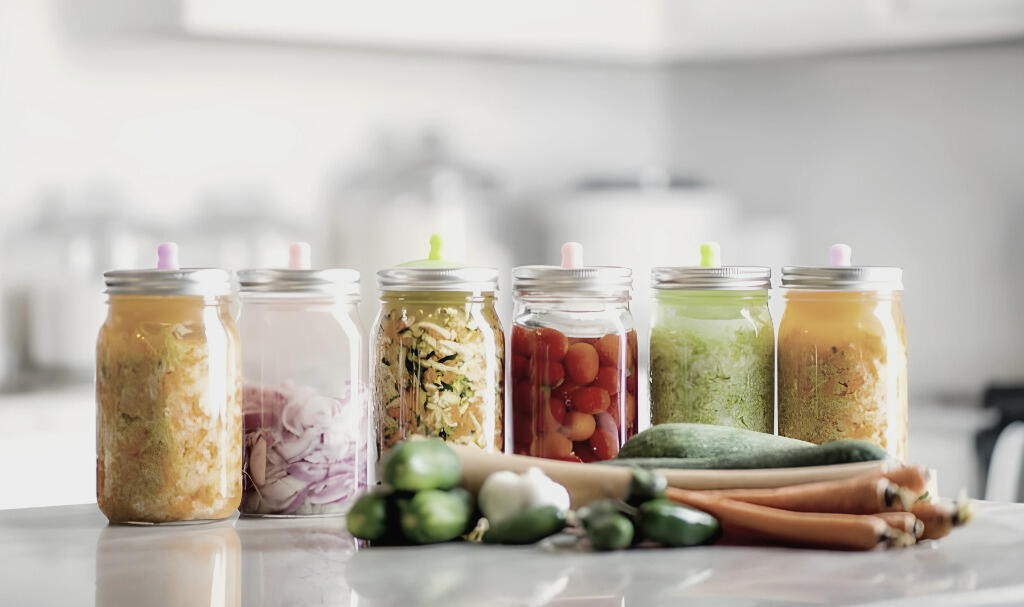
Nutrition
Fermented foods explained:
Expert Interview Dr. Hanadie
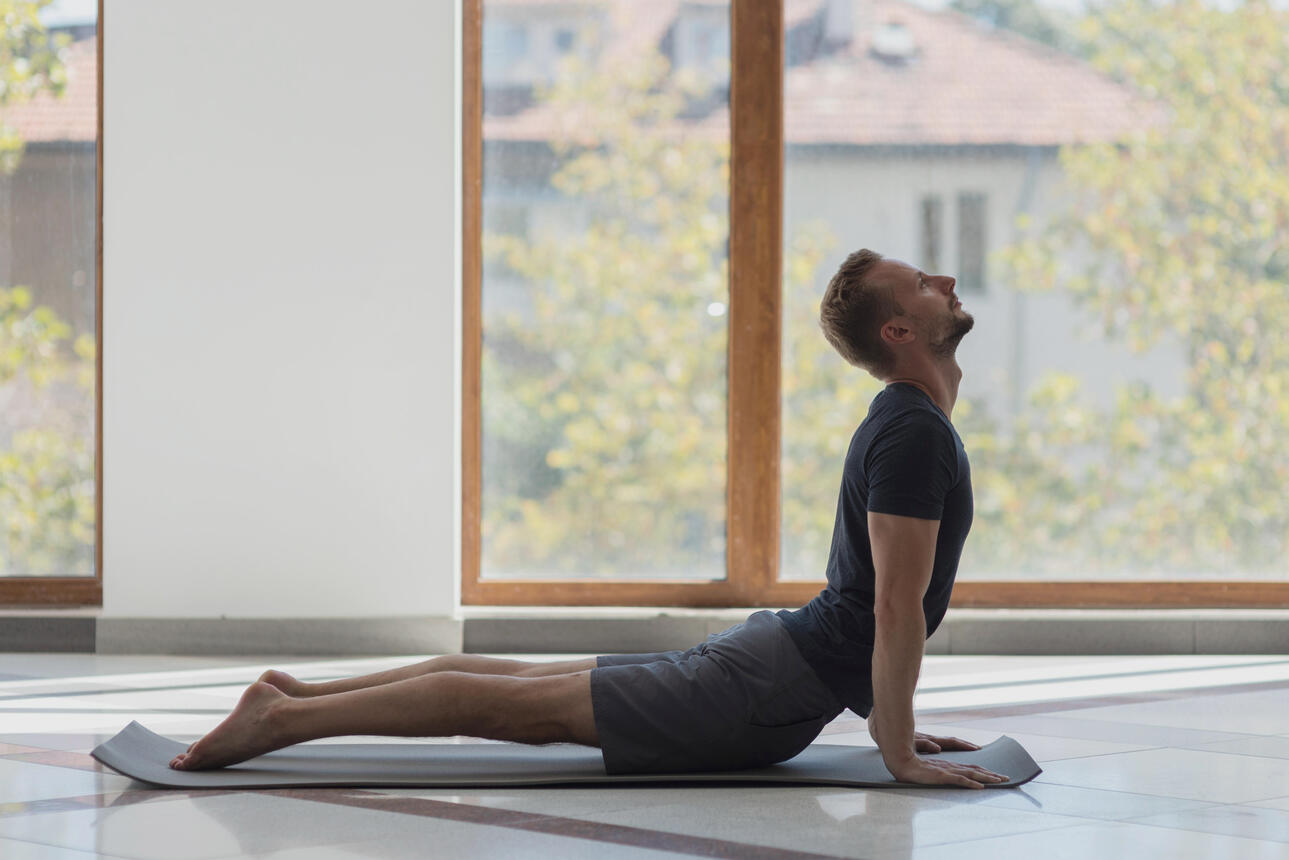
Movement
The psoas muscle, your core connector: To release or not?
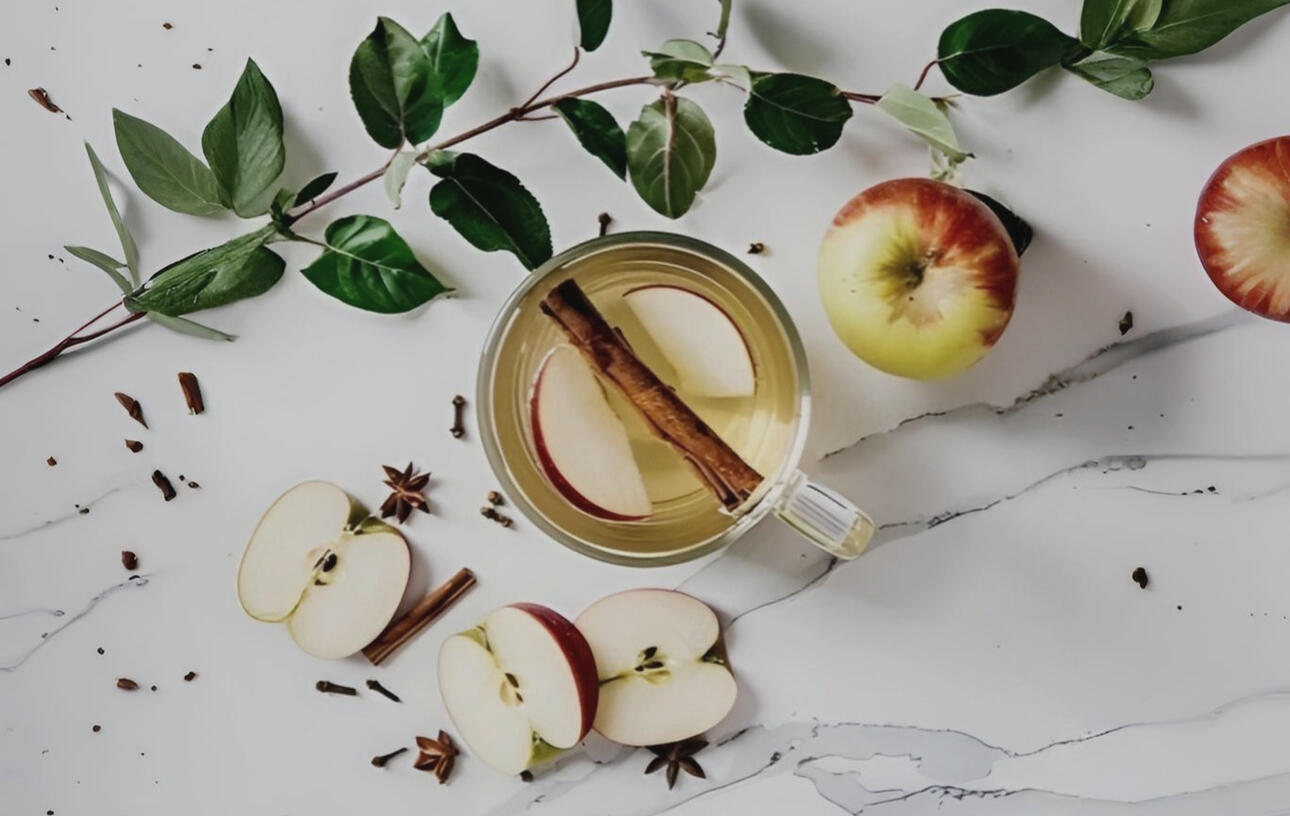
Health
The truth about infused
waters and hydration myths
Fermented foods explained:
Expert Interview with Dr. Hanadie Basil
Well Mamma | Delish healthy recipes, fitness and wellness in Dubai | UAE
By: Ariana Shahbazi | Dr. Hanadie B. Mustafa
1 February 2018
Fermented foods have been all the rage in the past few years as the digestive system – a.k.a. our gut – has been proven to be host to a billion of bacteria and home to most of our immunity. We want to ensure we have as many good bacteria as possible and a big variety of them. Fibre is a good way to feed our existing beneficial bacteria as we saw in this article, but what’s a girl to do if she doesn’t have enough strains of good bacteria in the first place? Take probiotics. There are the supplements of course, but today, we are going to look at a way to get them into your diet through foods. More specifically, through cultured and fermented foods.Last year, I was lucky enough to meet Dr. Hanadie while doing my Neuropilates diploma. She is one of those people who has a thirst for knowledge and no matter what she does, Dr. Hanadie always keeps connecting the dots between all the topics she has worked and researched in. Dr. Hanadie started her career as a comparative medicine doctor (orthopedic surgeon), studied nutrition, got involved in nutritional research, and 15 years ago, started studying holistic healing. Today she is not only a holistic therapist and lifestyle coach, but also a clinical aromatherapist, diet and nutrition consultant, REHAB personal trainer and Jin Shin Jyutsu practitioner. One of her many passions is fermented foods; she runs workshops regularly in Dubai and they are always full. In today’s article, I pick her brain on these fermented foods so we can all better understand what they are as well as their benefits.
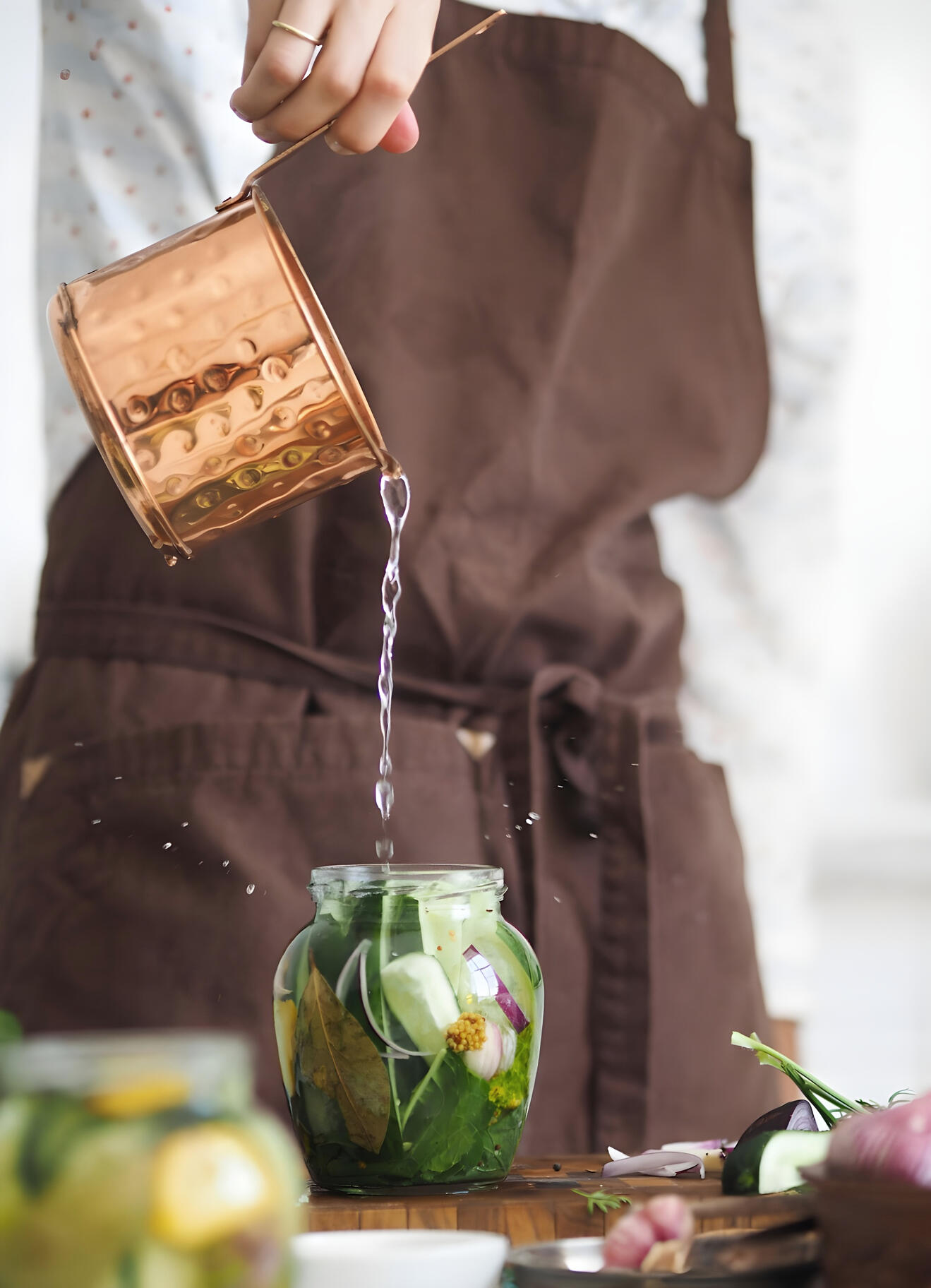
WM: Can you run us through the main benefits of food fermentation?
HB: In some ways; fermentation is a form of pre-digestion. It is when bacteria alters food – this process creates enzymes, Omega-3 fatty acids, B-vitamins and a host of active live cultures such as probiotic strains. These not only improve digestion, but also helps with systemic inflammation and boosts your immune system.WM: When did you first discover fermented foods and see results from them?
HB: Fermented foods have been part of our culture almost since the beginnings of time. Growing up in Iraq, we ate pickled and lacto fermented vegetables , olives, sourdough breads , cheeses and yogurt all the time, it was just part of our diet. I used to get sick easily and my allergies would flare up. I remember these fermented foods always being one of the key things that really boosted my own immunity. Over the years, with all my studies and experience taking care of patients and of my own family, I have only seen positive results and improved health thanks to them.WM: What fermented foods do you suggest to try?
HB: Here in the Middle East, pickled vegetables are a popular because every country has their own recipe for it. Sourdough bread, good quality yogurt and cheese are also very widespread and really easy to feed children with! There are are also the ones everyone talks about these days such as kombucha, kimchi or sauerkraut; and there are also lesser known ones like certain black teas, coffees or fermented raw cacao beans, which are natural probiotics.WM: You mention bread – that is so surprising considering the bad reputation gluten has these days. How is that?
HB: Of course, I am the first one who will recommend not eating just any bread. Sourdough is different though: food fermentation occurs when microorganisms work together and grow because of yeast and/or bacteria – that’s what gives the characteristic smell and taste of leavened bread. The problem today is that most bread is made using industrial yeast and it doesn’t come from a live “mother” or wild yeast starter. This much needed fermentation allows to break down the grain’s cellulose and helps unleash the nutrients. This is why homemade sourdough is so good for you and a lot easier to digest. Many gluten-intolerant individuals are totally ok with sourdough.WM: Would you say that it is better to consume fermented foods or to take probiotic supplements?
HB: Natural sources are best because fermented foods often contain lots of other things like bioavailable vitamins, minerals and prebiotic fibre which feeds the existing good gut bacteria and helps them colonize. I would only recommended taking off-the-shelf probiotics in more severe cases where we need a very quick recovery but one shouldn’t self-medicate. Always check with a nutritionist or doctor to understand usage and dosage. But as I said, I strongly encourage people to consume fermented foods directly and if possible, to make their own. I don’t buy bread at the supermarket for example and really prefer to make my own yogurt and fresh cheese as well, this way I know it is high quality. Also, I know kimchi is popular these days but I have seen ingredients like MSG on some labels; so you definitely need to be discerning when looking at packaged products. Honestly though, it really isn’t that hard to prepare yourself once you know how to go about it, that’s why I like doing my workshops: to teach people how to make these foods at home.WM: How should you introduce them into your diet?
HB: That depends – if you aren’t used to eating them, start gradually and increase the amount over time. Try introducing them with your main meal of the day for example. The idea is to have a little bit everyday as opposed to a lot once in a while.WM: What is an easy recipe someone can start with?
HB: Great question – a lot of people are scared of the fermentation process so I always start with a really simple and quick recipe. One of my favorites are these pickled red onions. They are slightly sweet and don’t have a the pungent taste you find with raw onions. I love them on sandwiches, as a filling for a taco or even on top of a salad.- Ingredients
1 large organic red onion, thinly sliced into circles
1 tsp good quality honey
1/4 tsp sea or rock salt
1/2 cup of vinegar – I prefer rice vinegar
1 tsp of crushed peppercorns and coriander seeds- Instructions
Combine all ingredients and place in a mason jar with a lid on
let sit at room temperature for 12-24 hours
When ready, refrigerate. They can be kept for a few weeks in the fridge. Always keep them submerged under the liquid.If you’d like to contact Dr. Hanadie Basil or attend one of her upcoming workshops, you can reach out through her social media accounts:https://thepainmanager.com/
https://www.instagram.com/the.pain.manager/
https://www.facebook.com/the.pain.manager/
This is an old article, hence new photos and links have been added to enrich your reading experience.

Movement
Activate your psoas!
The wonder formula.
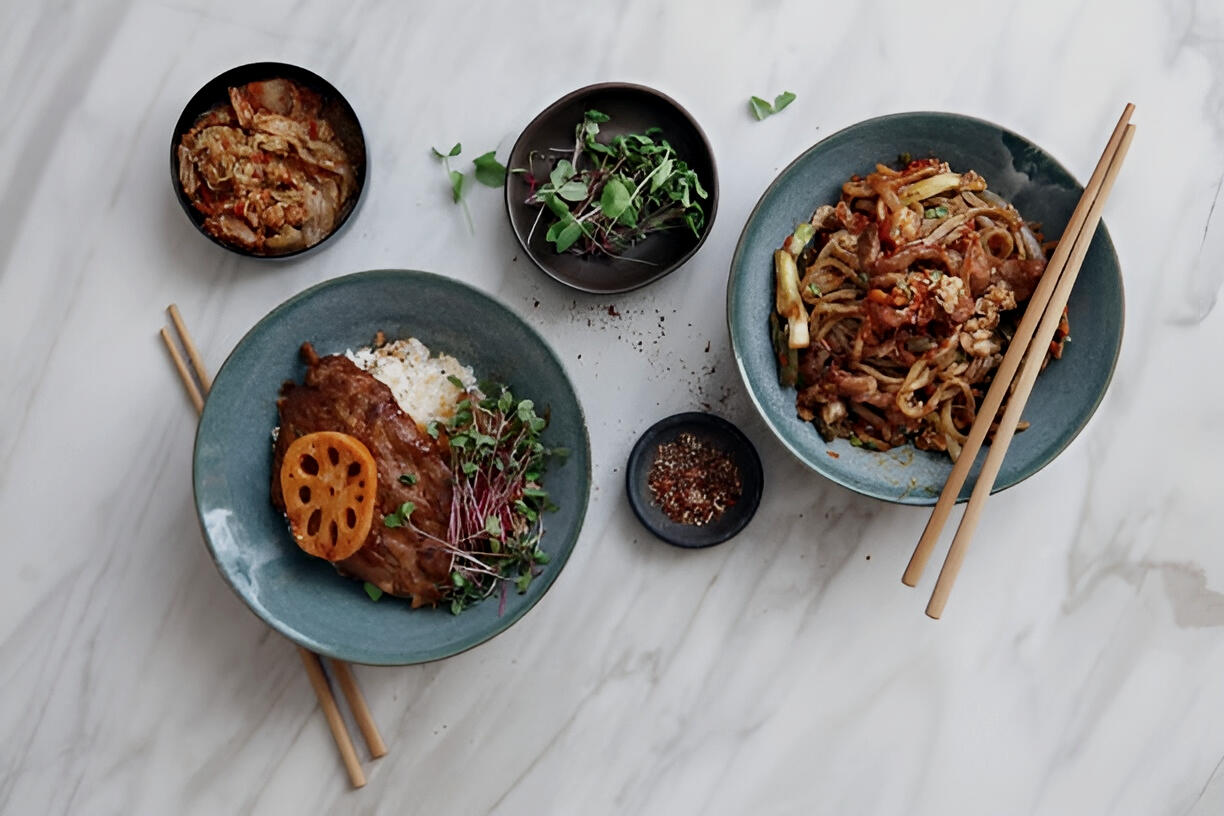
Nutrition
On fermented food in the UAE
and their health benefits

Resources
Tackle that nagging pain!
Options for curbing your pain
The brain-body benefits
of anti-inflammatory foods
Living with chronic pain can feel like a constant battle, affecting not just your physical well-being but your mental peace too. The persistent aches, stiffness, and discomfort can be incredibly stressful, leading to a cycle of pain, anxiety, and even depression. While pain and inflammation are natural alarm systems for our bodies, protecting us from infections and injuries, chronic inflammation is a different story. It can lead to persistent aches, various health issues, and even weight gain. Factors like stress, an unbalanced diet, and a lack of physical activity often fuel this chronic inflammatory state.The good news is that what you put on your plate can be a powerful tool in managing this inflammation. While diet alone may not be a complete cure, incorporating specific anti-inflammatory foods can significantly support your body's healing process, reduce discomfort, and improve your overall emotional well-being when combined with professional medical or therapeutic care.
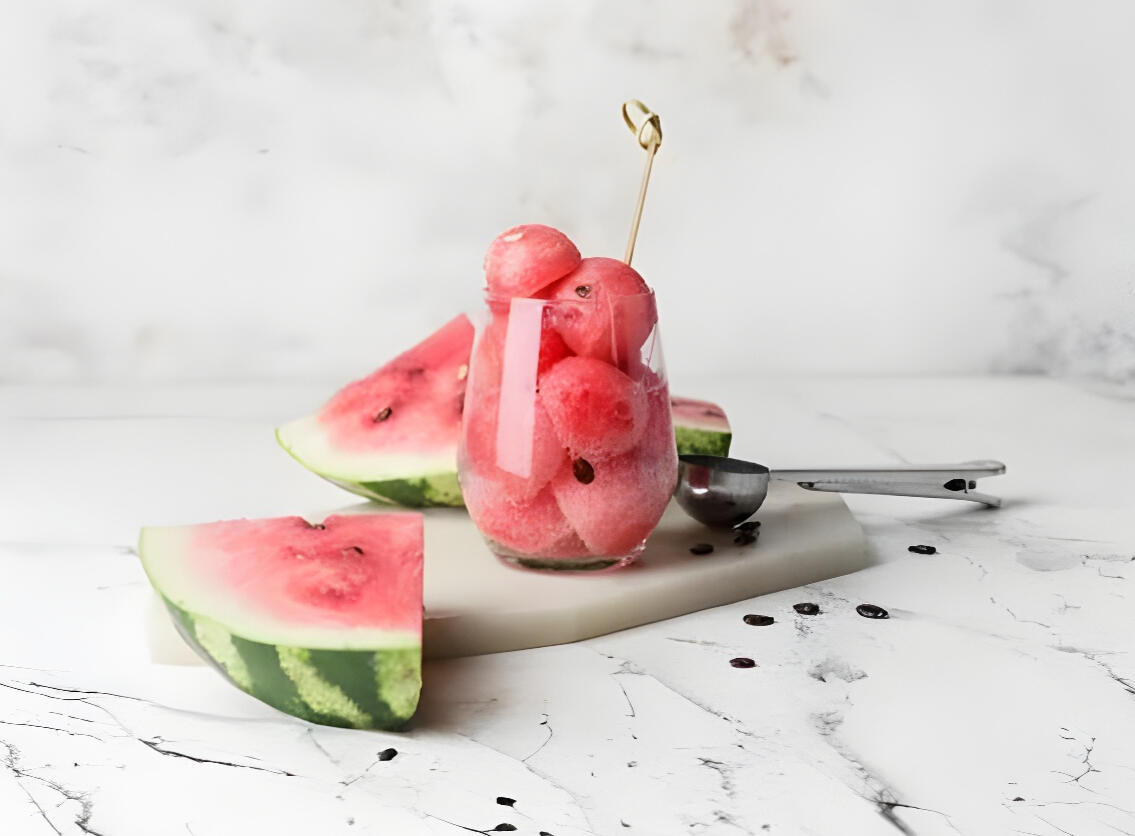
Watermelon
This summer staple is much more than just a refreshing treat. Watermelon boasts impressive anti-inflammatory properties that have been observed in clinical trials. It's been shown to lower C-reactive protein (CRP) levels, a key indicator of inflammation in the blood. When your body is inflamed, CRP levels rise, so a reduction in these levels is a positive sign. Beyond its CRP-lowering effects, watermelon is packed with beta-cryptoxanthin carotenoid. Research suggests this powerful compound can actually lower the risk of rheumatoid arthritis, a chronic inflammatory disorder affecting the joints.But the benefits don't stop there. Watermelon is also a good source of vitamin B6, which plays a vital role in neurological function. This vitamin may help alleviate symptoms of stress, anxiety, and even panic attacks, offering a welcome emotional boost when dealing with chronic pain.The fruit's unique ability to naturally relax blood vessels without side effects comes from its high concentration of citrulline. This amino acid, responsible for watermelon's distinct flavor, helps dilate blood vessels, which in turn can help control blood pressure and improve circulation – crucial for delivering healing nutrients throughout your body.Watermelon is rich in lycopene, a potent antioxidant. Lycopene is an excellent defense against free radical damage, which contributes to cellular inflammation. And, with around 92% water content, watermelon is an outstanding source of hydration, vital for every bodily function, including detoxification and nutrient transport.Grapes
These small, juicy fruits hold a mighty secret: resveratrol. This powerful anti-inflammatory compound found in grapes has garnered significant scientific attention. Recent research has even indicated that resveratrol's effects on the body are remarkably similar to those of nonsteroidal anti-inflammatory drugs (NSAIDs), but without the potential side effects often associated with long-term NSAID use.Scientists have been exploring resveratrol's potential in treating symptoms of osteoarthritis, a degenerative joint disease characterized by chronic inflammation, as well as other chronic illnesses related to aging.Incorporating grapes into your diet could be a delicious way to tap into these significant anti-inflammatory benefits.Pears
Don't underestimate the humble pear. These delicious fruits are brimming with flavonoid antioxidants, compounds known for their ability to combat inflammation and protect against chronic diseases such as diabetes and heart disease.Beyond their antioxidant prowess, pears also provide a good dose of vitamin C and vitamin K, both of which possess inherent anti-inflammatory properties. Vitamin C is a well-known immune booster and antioxidant, while vitamin K plays a role in regulating inflammatory responses in the body.Enjoying a crisp pear can be a simple yet effective step toward reducing systemic inflammation.Tomatoes
Often considered a vegetable in the culinary world, tomatoes are botanically a fruit, and a fantastic one at that for fighting inflammation. They are packed with essential nutrients like vitamin C, potassium, and most notably, lycopene. This potent antioxidant is renowned for its impressive anti-inflammatory capabilities.Lycopene may be particularly beneficial in reducing pro-inflammatory compounds linked to several types of cancer. To maximize your absorption of lycopene, here's a pro-tip: cook tomatoes with a source of fat, like olive oil. Lycopene is a carotenoid, a fat-soluble nutrient, meaning it's better absorbed by your body when consumed with fat.So, think delicious tomato sauces, roasted tomatoes, or a fresh salad with a drizzle of olive oil.Peppers
Whether you prefer the mild crunch of a bell pepper or the fiery kick of a chili pepper, both varieties are loaded with inflammation-fighting compounds. They are excellent sources of vitamin C and other antioxidants that exert powerful anti-inflammatory effects throughout the body.Bell peppers specifically offer quercetin, an antioxidant that may reduce inflammation associated with chronic diseases such as diabetes. So, adding vibrant bell peppers to your meals can contribute to long-term health benefits.Chili peppers, on the other hand, contain unique compounds like sinapic acid and ferulic acid. These powerful acids may not only reduce inflammation but also support healthier aging, making chili peppers a spicy addition to your anti-inflammatory diet.The Bigger Picture
Beyond these specific examples, remember the fundamental principle: eating fresh fruits and vegetables and drinking plenty of water are paramount for reducing inflammation and helping your body get rid of toxins.A diet rich in whole, unprocessed foods provides your body with the essential vitamins, minerals, and antioxidants it needs to regulate inflammatory responses and promote overall health.A Helping Hand, Not a Cure-All
While incorporating these amazing foods into your diet can significantly contribute to managing brain-body soreness and improving your emotional well-being, it's crucial to understand that food alone may not be enough to alleviate all your pain.Chronic pain is complex and often requires a multi-faceted approach.
Think of these dietary changes as a powerful supportive therapy. When combined with professional medical advice from a physician or guidance from a licensed therapist, optimizing your diet can be a game-changer in your journey toward better health and reduced discomfort.Your plate holds the potential to be a powerful ally in your fight against chronic pain and a key ingredient in cultivating a healthier, happier you.

Resources
It is not all in your mind;
pain misconceptions
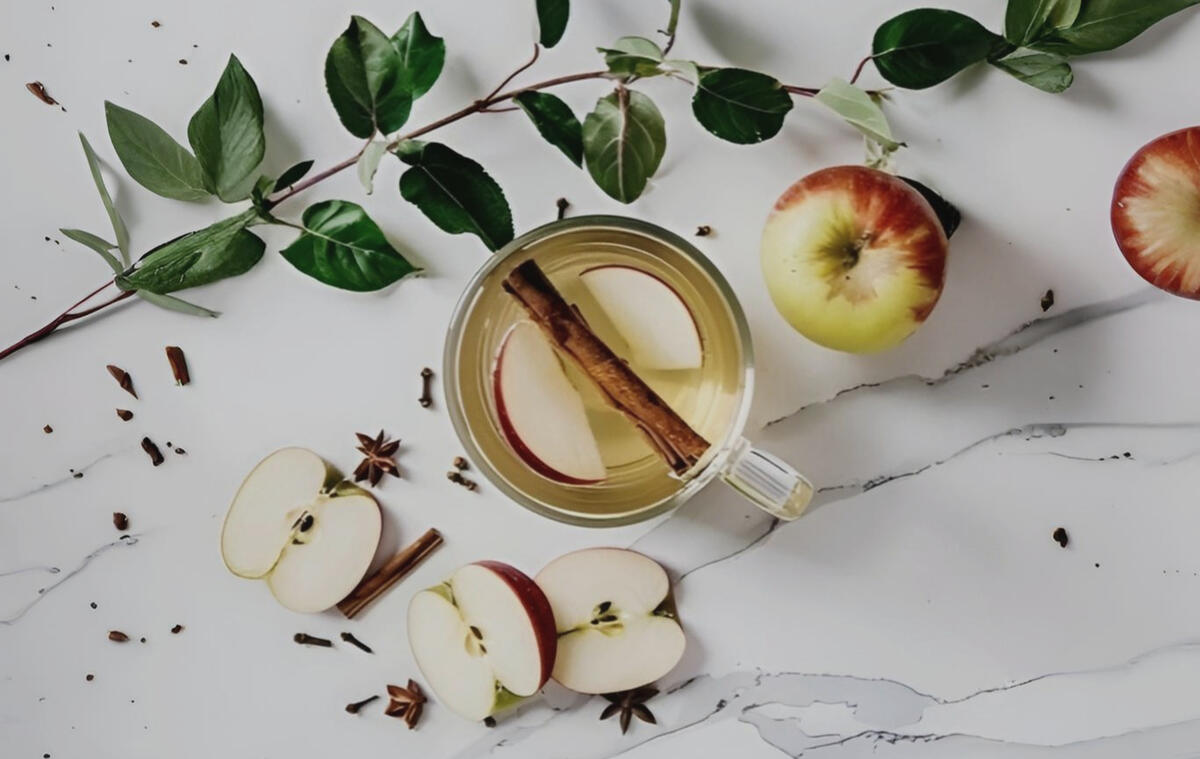
Health
The truth about infused
waters and hydration myths

Movement
Activate your psoas!
The wonder formula.
Dip your way to relief:
Wholesome spreads for a pain-free you
In our fast-paced world, where convenience often trumps nutritional value, finding simple, delicious, and genuinely beneficial ways to support our health is a true game-changer. We're constantly seeking shortcuts, especially when dealing with the aches, pains, and daily demands that can leave us feeling depleted. But what if the answer to boosting nutrition, aiding in pain relief, and even curbing those pesky cravings lay in something as simple as a creamy, flavorful dip?Enter the concept of "healing bowls with herbal dips." These aren't just your average party appetizers. We're talking about vibrant, nutrient-dense concoctions designed to be potent allies in your daily wellness journey. Easy to prepare, incredibly versatile, and packed with ingredients known for their therapeutic properties, these dips can transform a simple meal or snack into a powerful act of self-care.Whether you're battling chronic discomfort, managing a busy schedule, or simply looking for healthier ways to feed yourself and your family, these herbal dips are your secret weapon. They're satisfying enough to combat hunger and cravings, ensuring you avoid skipping meals – a common pitfall for those on the go. Plus, they're perfect for any season and can even become a comforting, nutrient-packed therapy during sick days, helping your body recover and heal.Let's dive into why these simple bowls are so extraordinary and explore three unique recipes designed to soothe, nourish, and uplift.

Why Healing Dips Are More Than Just SnacksIt's easy to dismiss dips as merely "extras," but when crafted with purpose, they become miniature powerhouses of nutrition. Here’s why these healing bowls deserve a prime spot in your kitchen:* Nutrient Density: Unlike many processed snacks, these dips are bursting with vitamins, minerals, antioxidants, and probiotics, delivering a concentrated dose of goodness with every spoonful.
* Anti-Inflammatory Properties: Many ingredients commonly used in these dips, like garlic, olive oil, and certain herbs, are renowned for their natural anti-inflammatory effects. This is crucial for managing pain conditions, as inflammation is often at the root of discomfort.
* Satiety and Appetite Control: The combination of protein (from Greek yogurt or beans), healthy fats (from olive oil or tahini), and fiber (from vegetables and legumes) makes these dips incredibly satisfying. This keeps you feeling fuller for longer, helping to manage cravings and prevent overeating.
* Convenience for a Busy Lifestyle: For those juggling work, family, and personal commitments, these dips are a lifesaver. Prepare a batch on the weekend, and you'll have healthy options ready for quick lunches, energizing snacks, or even an impromptu dinner. They make healthy eating on the go genuinely achievable.
* Kid-Friendly Nutrition: Struggling to get your little ones to eat their veggies? These creamy, flavorful dips can make raw vegetables or even plain protein much more appealing, subtly boosting their nutrient intake.
* Therapeutic Comfort During Illness: When you're feeling unwell, appetite often diminishes, and preparing elaborate meals seems impossible. Soft, easy-to-digest, and nutrient-rich dips can be a gentle way to nourish your body and provide the immune-boosting support it needs to recover.The Recipes: Three Healing Dips for Pain Relief and WellnessThese recipes are designed for maximum impact, combining delicious flavors with ingredients known for their health benefits. Remember, these dips can be stored in an airtight container in the fridge for up to 3 days, making them ideal for meal prepping.1. The Probiotic Powerhouse: Probiotic Pain Relief DipThis dip is a gut-friendly marvel, combining the benefits of probiotics with natural anti-inflammatory agents. A healthy gut microbiome is increasingly linked to reduced systemic inflammation and even pain modulation.Key Healing Ingredients:* Greek-style Yogurt: A fantastic source of probiotics, which support gut health, and protein, essential for tissue repair.
* White Radish: Often overlooked, radish contains compounds like sulforaphane, known for their anti-inflammatory and detoxifying properties. It also adds a refreshing, peppery kick.
* Fresh Garlic: A potent natural anti-inflammatory and antimicrobial agent, garlic is a superstar for overall immune health and pain reduction.
* Apple Cider Vinegar (ACV): Contains acetic acid, which can aid digestion and may have anti-inflammatory effects.
* Olive Oil: A cornerstone of the Mediterranean diet, extra virgin olive oil is rich in monounsaturated fats and antioxidants like oleocanthal, which has anti-inflammatory properties similar to ibuprofen.
* Dried Chives: Adds a subtle oniony flavor and some additional antioxidants.Recipe:* 1 cup Greek-style yogurt (full-fat or 2% for creaminess)
* 1/2 cup grated white radish (or daikon radish)
* 3 cloves fresh garlic, minced or grated
* 1 tablespoon dried chives
* 1 tablespoon apple cider vinegar
* 1 tablespoon extra virgin olive oil
* 1/2 teaspoon sea salt (or to taste)Instructions:1. In a medium bowl, combine the Greek-style yogurt and grated white radish.
2. Add the minced fresh garlic, dried chives, apple cider vinegar, and olive oil.
3. Sprinkle in the salt.
4. Stir vigorously until all ingredients are well combined and the dip is creamy. Taste and adjust seasoning if needed.Serving Suggestions:* Serve as a vibrant dip with crunchy vegetable sticks (cucumber, carrots, bell peppers) or whole-grain breadsticks.
* Transform it into a creamy, tangy sauce for grilled chicken or baked fish, enhancing both flavor and nutritional value.2. The Vibrant Vitality: Refreshing Anti-Inflammatory DipThis colorful dip is a feast for the eyes and a boon for your body, leveraging the powerful anti-inflammatory and antioxidant properties of beetroot and fresh herbs.Key Healing Ingredients:* Fresh Beetroot: Packed with potent antioxidants called betalains, which are responsible for its vibrant color and strong anti-inflammatory properties. Beetroot also supports nitric oxide production, beneficial for blood flow.
* Onions: Contain quercetin, a flavonoid with significant anti-inflammatory and antioxidant effects.
* Parsley: A nutrient-dense herb rich in vitamins K, C, and A, and powerful antioxidants, contributing to overall health and reducing oxidative stress.
* Greek-style Yogurt: Adds creaminess, protein, and probiotics.
* Apple Cider Vinegar & Olive Oil: Provide healthy fats and further anti-inflammatory compounds.Recipe:* 1 cup grated fresh beetroot (peeled)
* 1/2 cup finely chopped red or white onions
* 1/2 cup finely chopped fresh parsley leaves
* 3 tablespoons Greek-style yogurt
* 1 tablespoon apple cider vinegar
* 1 tablespoon extra virgin olive oil
* 1/2 teaspoon sea salt (or to taste)Instructions:1. In a mixing bowl, combine the grated fresh beetroot, finely chopped onions, and fresh parsley.
2. Add the Greek-style yogurt, apple cider vinegar, and olive oil.
3. Sprinkle in the salt.
4. Mix thoroughly until all ingredients are evenly distributed. The dip will have a beautiful, vibrant color. Taste and adjust seasoning.Serving Suggestions:* Perfect as a refreshing dip with whole-grain pita bread or crispy crackers.
* Use as a flavorful sauce or topping for grilled meats, roasted vegetables, or baked potatoes, adding a burst of color and nutrition.3. The Sustained Energy: High Protein & Fiber DipThis dip is designed to provide lasting energy and promote satiety, making it an excellent choice for combating cravings and supporting muscle repair and overall fullness. The combination of protein and fiber is key for steady blood sugar and sustained energy levels, crucial for managing chronic pain fatigue.Key Healing Ingredients:* Cooked White Beans (e.g., Cannellini or Great Northern): An incredible source of plant-based protein, fiber, and various minerals like iron and magnesium. Fiber is essential for digestive health and helps control blood sugar.
* Greek-style Yogurt: Boosts protein content and adds creaminess.
* Fresh Garlic: For its powerful anti-inflammatory and immune-boosting properties.
* Tahini Paste: Made from ground sesame seeds, tahini is rich in healthy fats, protein, and minerals like calcium and magnesium, contributing to bone health and muscle function.
* Apple Cider Vinegar & Olive Oil: Enhance flavor and add beneficial compounds.Recipe:* 1 cup cooked white beans (canned, rinsed, and drained, or cooked from dry)
* 1/2 cup Greek-style yogurt
* 3 cloves fresh garlic, minced or grated
* 1 tablespoon tahini paste
* 1 tablespoon apple cider vinegar
* 1 tablespoon extra virgin olive oil
* 1/2 teaspoon sea salt (or to taste)Instructions:1. In a food processor or blender, combine the cooked white beans, Greek-style yogurt, minced fresh garlic, tahini paste, apple cider vinegar, olive oil, and salt.
2. Blend until smooth and creamy. If the mixture is too thick, add a tablespoon of water at a time until desired consistency is reached.
3. Taste and adjust seasoning as needed.Serving Suggestions:* An ideal dip for baked tortilla chips or hearty vegetable sticks.
* Makes a fantastic, protein-packed spread inside fresh vegetable sandwiches or wraps, keeping you full and satisfied throughout your day in Dubai's hustle.Embrace the Power of the Healing BowlThese herbal dips are more than just recipes; they're an invitation to embrace a proactive approach to your health. By incorporating these easy-to-prepare, nutrient-dense, and deeply satisfying dips into your daily routine, you're not just combating hunger – you're actively supporting your body's natural healing processes, managing inflammation, and ensuring you have the energy to tackle whatever comes your way.So, the next time you're looking for a quick snack or a healthy addition to your meal, remember the humble dip. With a little creativity and these powerful ingredients, you can turn a simple bowl into a potent source of pain relief, sustained energy, and overall well-being. Your body will thank you for it!

Bodywork
Finding the right
pain management approach
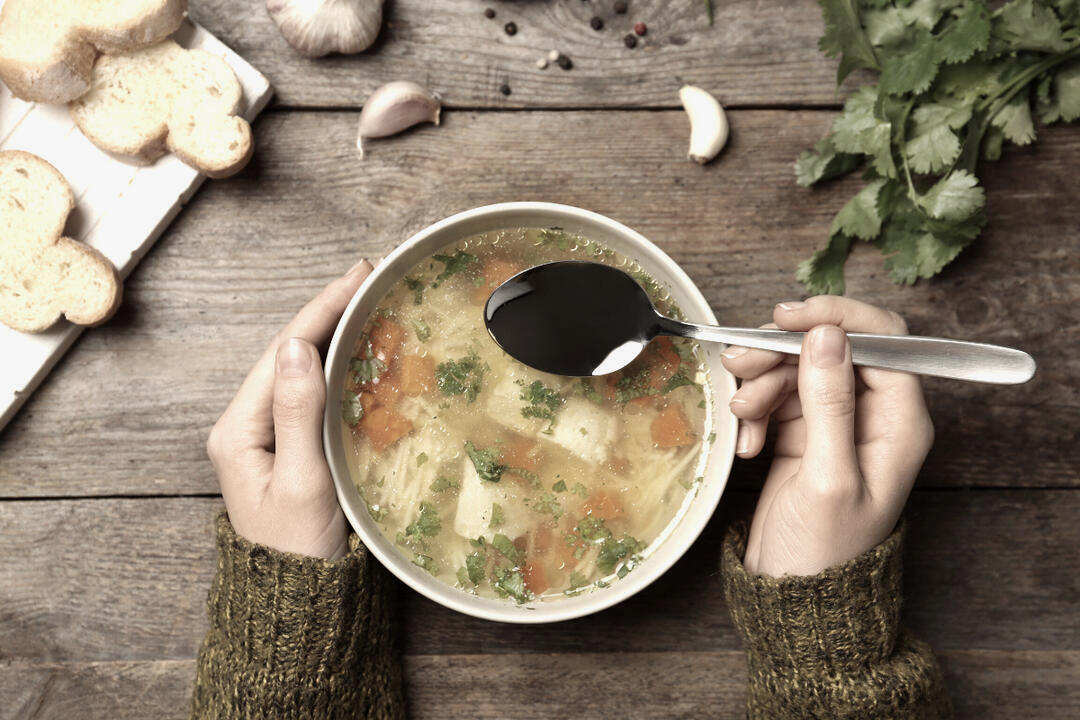
Nutrition
Immunity boosters:
Foods that fight back
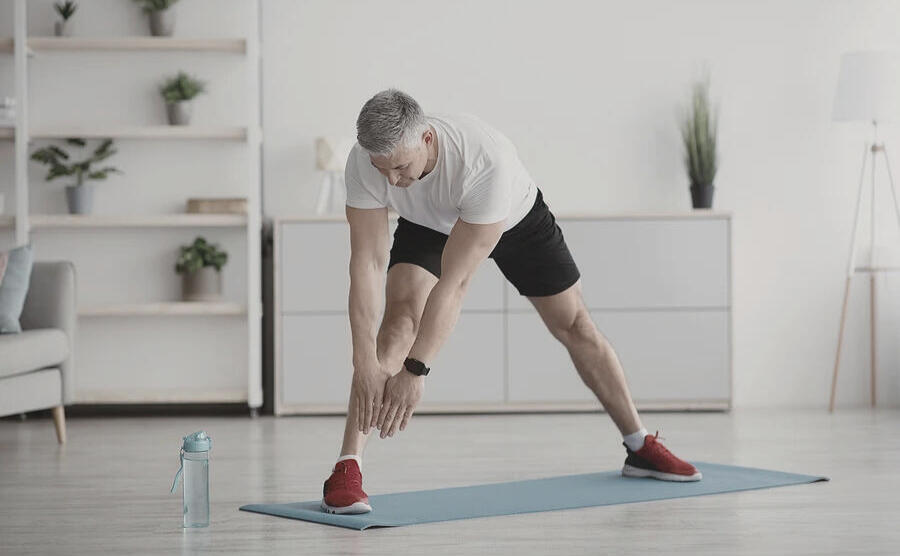
Movement
Spinal pain: Unlocking movement
for lasting relief
Finding the right
pain management approach
Natural pain management is the practice of using remedies and techniques derived from nature to alleviate pain and promote healing.This approach recognizes that nature provides us with an abundance of resources that can effectively address pain without the potential side effects associated with pharmaceuticals.By understanding the science behind these natural remedies, we can make informed choices and truly unlock their healing power

Benefits
One of the key benefits of natural pain management is the reduced risk of side effects. Pharmaceutical pain medications often come with a long list of potential adverse reactions, ranging from mild drowsiness to severe gastrointestinal issues. Natural remedies, on the other hand, are generally well-tolerated and have a lower risk of unwanted effects.Another advantage of natural pain management is the potential for long-term healing. While pharmaceuticals may provide temporary relief, they often fail to address the root cause of the pain. Natural remedies, on the other hand, can work to heal the underlying issue, leading to long-lasting pain relief and improved overall well-being.There are various natural pain management techniques to explore, each with its own unique benefits.Herbal Remedies
Herbal remedies have been used for centuries to address a wide range of health issues, including pain. Many herbs contain active compounds that have analgesic properties, making them effective in reducing pain and inflammation.For example, turmeric, a vibrant yellow spice commonly used in cooking, contains a compound called curcumin. Curcumin has been shown to possess potent anti-inflammatory properties, making it a popular choice for managing chronic pain conditions such as arthritis.Another herb with pain-relieving properties is chamomile. Chamomile has a calming effect on the body and can help reduce muscle tension and ease pain. It can be consumed as a tea or applied topically as a soothing compress.Essential Oils
Essential oils are highly concentrated plant extracts that capture the beneficial compounds of various plants. These oils can be used topically, inhaled, or added to bathwater to provide pain relief and promote relaxation.Mandarin essential oil is well-known for its calming properties, but it also has analgesic effects. Applying a few drops of mandarin oil to the temples or affected area can help relieve headaches, muscle pain, and even menstrual cramps.Oregano essential oil is another popular choice for pain management. Its cooling sensation can help alleviate pain from tension headaches, migraines, and sore muscles. Dilute a few drops of oregano oil in a carrier oil before applying it to the skin to avoid irritation.Physical Therapies
Physical therapies can be powerful tools for managing pain naturally. Techniques such as massage, acupuncture, and chiropractic adjustments help to relieve muscle tension, improve blood flow, and promote the release of endorphins, the body's natural painkillers.Massage therapy involves the manipulation of soft tissues to improve circulation and reduce muscle tension. It can be particularly beneficial for individuals suffering from chronic pain conditions such as fibromyalgia or lower back pain. The soothing touch of a skilled massage therapist can provide both physical and emotional relief.Acupuncture is an ancient Chinese practice that involves the insertion of thin needles into specific points on the body. This stimulates the flow of energy, or qi, and promotes natural pain relief. Acupuncture has been found to be effective in managing various types of pain, including migraines, osteoarthritis, and chronic back pain.Chiropractic adjustments focus on realigning the spine to alleviate pain and improve overall spinal function. This can be particularly helpful for individuals experiencing neck pain, back pain, or joint pain. By restoring proper alignment, chiropractic care can help relieve pressure on nerves and reduce pain.Mind-Body Techniques
The mind and body are intricately connected, and certain techniques can help harness this connection to manage pain naturally. Mind-body techniques, such as meditation, Tai Chi, and deep breathing exercises, can help reduce stress, promote relaxation, and alleviate pain.Meditation involves focusing the mind and achieving a state of deep relaxation. It has been shown to reduce pain perception and improve overall well-being. By incorporating a regular meditation practice into your daily routine, you can train your mind to better cope with pain and enhance your body's natural healing abilities.Tai Chi combines physical postures, breathing exercises, and meditation to promote balance and harmony within the body. It can help alleviate pain by improving flexibility, strengthening muscles, and reducing stress.Lifestyle Changes
In addition to specific remedies and techniques, making certain lifestyle changes can significantly support your natural pain management journey. Incorporating regular exercise, adopting a nutritious diet, and practicing stress reduction techniques are all important aspects of holistic pain management.Regular exercise helps to strengthen muscles, improve flexibility, and enhance overall well-being. Low-impact activities such as swimming, yoga, or walking can be particularly beneficial for individuals with chronic pain conditions. Aim for at least 30 minutes of exercise most days of the week to reap the pain-reducing benefits.Eating a balanced diet rich in anti-inflammatory foods can also help manage pain naturally. Incorporate foods such as fatty fish, leafy greens, berries, and nuts, which are known for their anti-inflammatory properties. Avoid processed foods, sugary snacks, and excessive alcohol consumption, as these can exacerbate inflammation and contribute to pain.Stress reduction techniques, such as mindfulness, deep breathing, or engaging in hobbies, can help alleviate pain by reducing tension and promoting relaxation. Chronic stress can exacerbate pain and make it more difficult to manage. By incorporating stress reduction techniques into your daily routine, you can better cope with pain and improve your overall well-being.Natural pain management techniques can be used alongside conventional medicine, providing a holistic approach to pain relief. It's important to communicate with your healthcare provider and inform them of any natural remedies or techniques you are using, as they can provide guidance and ensure compatibility with any existing treatment plans.In some cases, natural pain management techniques may be used as complementary therapies to enhance the effectiveness of conventional treatments. For example, a person undergoing chemotherapy may find relief from nausea and pain by incorporating ginger tea and acupuncture into their treatment plan.It's crucial to remember that natural pain management approaches may not be suitable for all types of pain or conditions. Always consult with a healthcare professional before starting any new treatment or remedy, and be open to discussing your pain management options.The Right Natural Pain Management Approach
With so many options available, it's essential to find the right natural pain management approach that works for you. What works for one person may not work for another, so it's important to explore different techniques and remedies to find what brings you the most relief.Keep in mind that natural pain management techniques may take time to show results. Unlike pharmaceuticals, which often provide immediate relief, natural remedies and techniques require consistency and patience. Stick with your chosen approach, be open to adjusting as needed, and listen to your body's feedback.In conclusion, natural pain management offers a holistic approach to pain relief, utilizing the healing power of nature to alleviate discomfort and promote overall wellness. By incorporating herbal remedies, essential oils, physical therapies, mind-body techniques, and lifestyle changes, individuals can find relief from pain without the potential risks associated with pharmaceuticals. It's essential to consult with a healthcare professional before starting any new pain management approach, ensuring compatibility with existing treatments and conditions. With an open mind and a commitment to well-being, one can unlock the healing power of nature and embrace a natural pain management journey.
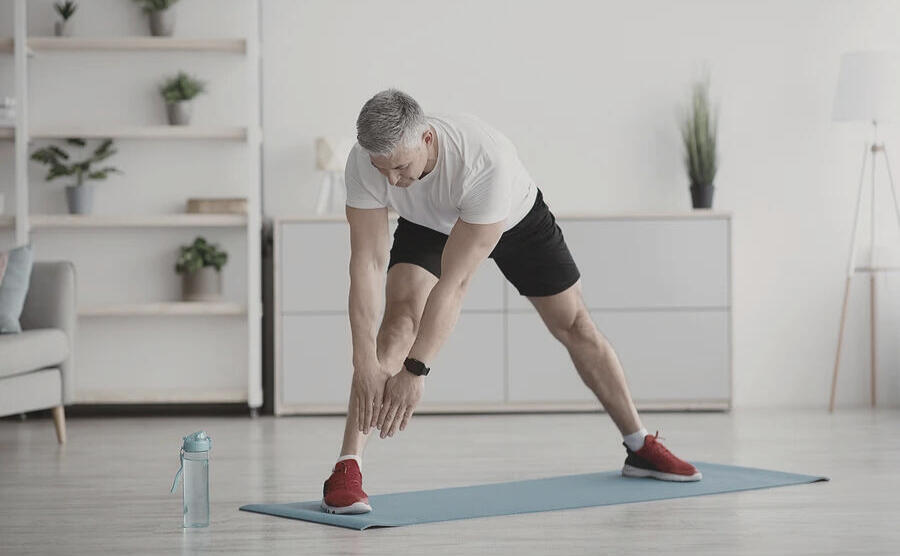
Movement
Spinal pain: Unlocking movement
for lasting relief
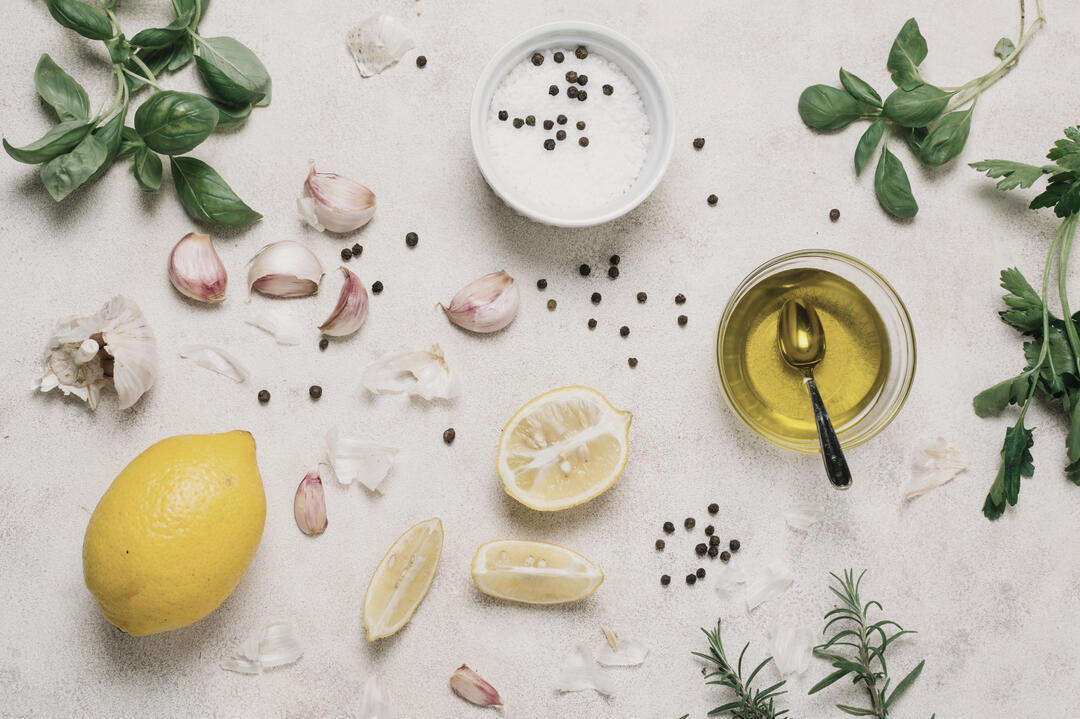
Nutrition
Dip your way to relief:
Spreads for a pain-free you

Women
Navigating the menopause
heat maze
The bizarre paralysis
of transverse myelitis!
Transverse myelitis (TM) is a rare neurological disorder that affects the spinal cord, causing inflammation and damage. This condition can lead to a range of symptoms, including muscle weakness, paralysis, sensory alterations, and bladder and bowel dysfunction. In this comprehensive guide, we will explore the causes, symptoms, diagnosis, and treatment options for transverse myelitis.Transverse myelitis is a neurological condition characterized by inflammation of the spinal cord. The spinal cord plays a crucial role in transmitting nerve signals to and from the brain. When the spinal cord becomes inflamed, it disrupts the communication between the brain and the rest of the body, leading to a variety of symptoms.The term "transverse" refers to the pattern of changes in sensation experienced by individuals with this condition. Many people with transverse myelitis describe a band-like sensation across their trunk, with sensory changes occurring below the affected area. This inflammation can occur in different segments of the spinal cord, resulting in varying symptoms and severity.
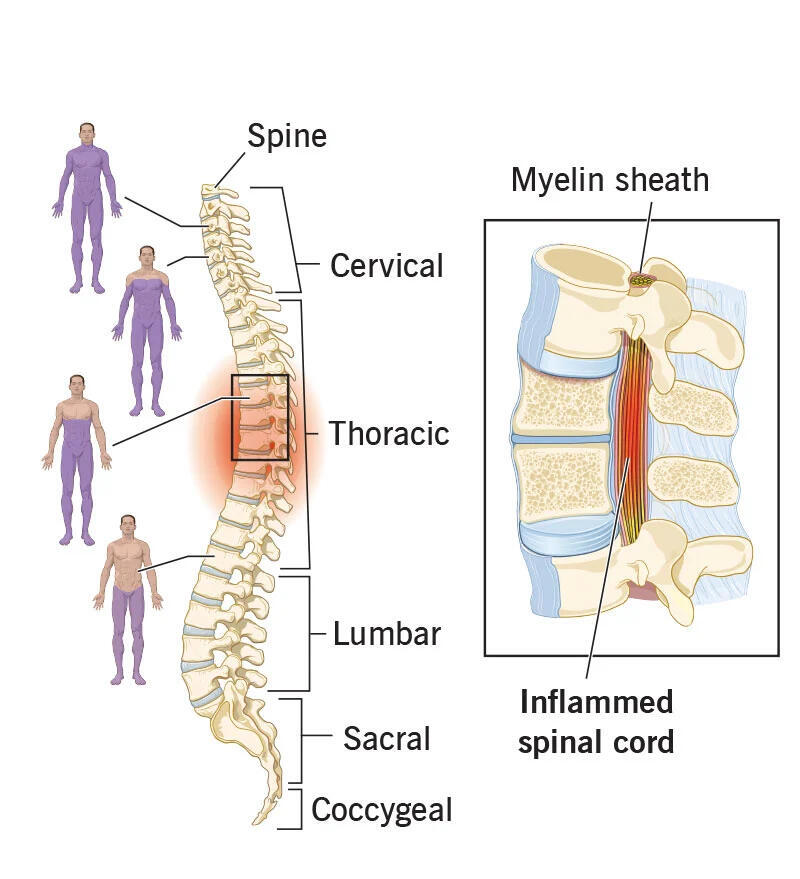
Causes
The exact cause of transverse myelitis remains unknown in many cases. However, researchers have identified several potential triggers for this condition. Infections, including viral, bacterial, and fungal infections, have been known to cause transverse myelitis. Viruses such as varicella-zoster, herpes simplex, Epstein-Barr, and influenza, as well as bacteria like Staphylococcus aureus, Mycoplasma, and Lyme disease, can lead to inflammation of the spinal cord.In addition to infections, transverse myelitis can also be associated with autoimmune disorders. Conditions like lupus, rheumatoid arthritis, sarcoidosis, and Sjogren's syndrome increase the risk of developing transverse myelitis. Furthermore, immune-mediated neurological diseases like neuromyelitis optica spectrum disorder (NMOSD) and myelin oligodendrocyte glycoprotein antibody disease (MOGAD) have been linked to transverse myelitis.Symptoms
The symptoms of transverse myelitis can vary depending on the location and severity of the inflammation. Common symptoms include muscle weakness, paralysis (often starting in the legs), altered sensation such as numbness and tingling, pain (including back pain at the site of inflammation), muscle spasms, bladder and bowel control problems, sexual dysfunction, and fatigue.
These symptoms can develop rapidly over a few hours or progress gradually over days or weeks. It is important to note that each individual's experience with transverse myelitis can differ, and some may only exhibit mild symptoms while others may experience more severe impairment.Diagnosis
Diagnosing transverse myelitis can be challenging, as it is often a diagnosis of exclusion. Medical professionals will typically conduct a thorough medical history review and physical examination to assess the individual's symptoms and rule out other potential causes.
Diagnostic tests such as magnetic resonance imaging (MRI) play a crucial role in identifying inflammation and lesions in the spinal cord. These imaging studies provide detailed images that help doctors visualize any damage or abnormalities. Additionally, blood tests may be conducted to check for specific antibodies and rule out other conditions.In some cases, a lumbar puncture or spinal tap may be performed to analyze the cerebrospinal fluid for signs of inflammation and infection. This procedure involves inserting a needle into the lower back to collect a sample of the fluid surrounding the spinal cord and brain.Treatment
While there is currently no cure for transverse myelitis, various treatment options are available to manage symptoms and promote recovery. The primary goal of treatment is to reduce inflammation and prevent further damage to the spinal cord.In most cases, individuals with transverse myelitis are hospitalized during the acute phase of the condition. Treatment often involves high-dose corticosteroids to decrease inflammation and suppress the immune response. These medications can help alleviate symptoms and potentially speed up the recovery process.If corticosteroids are ineffective or poorly tolerated, therapeutic plasma exchange (TPE) may be considered. TPE involves removing a patient's blood, separating the plasma, and replacing it with donor plasma or a substitute solution. This procedure aims to remove harmful antibodies and inflammatory factors from the bloodstream.Additionally, intravenous immunoglobulin (IVIG) therapy may be used to modulate the immune system and reduce inflammation. Other medications, such as pain relievers and muscle relaxants, may be prescribed to manage specific symptoms associated with transverse myelitis.Rehabilitation and Recovery
Rehabilitation plays a crucial role in the recovery process for individuals with transverse myelitis. Physical and occupational therapy are essential components of rehabilitation, focusing on improving muscle strength, coordination, and range of motion.These therapies aim to enhance functional abilities and promote independence in daily activities.In some cases, individuals with more severe impairments may require assistive devices, such as wheelchairs or braces, to facilitate mobility. Adaptive strategies and assistive technologies can help individuals overcome challenges and maintain a good quality of life.Psychological support is also vital for individuals living with transverse myelitis. Adjusting to life with a chronic condition can be emotionally challenging, and individuals may experience feelings of frustration, sadness, or anxiety. Counseling or therapy can provide a safe space to address these emotional concerns and develop coping strategies.Living with TM
Living with transverse myelitis requires ongoing management and support. While some individuals may experience significant recovery, others may have residual symptoms or long-term disabilities. It is important to establish a comprehensive care plan that addresses the individual's unique needs and goals.Maintaining a healthy lifestyle, including regular exercise and a balanced diet, can contribute to overall well-being. It is crucial to manage any comorbid conditions, such as autoimmune disorders, to prevent further complications. Regular check-ups with healthcare professionals and adherence to prescribed medications are essential for long-term management.Support groups and organizations dedicated to transverse myelitis can provide valuable resources and a sense of community. These groups offer opportunities for individuals to connect with others who understand their experiences and provide emotional support. Additionally, educational materials and online platforms help individuals stay informed about the latest research and developments in the field.Current Research and Future Directions
Extensive research is ongoing to better understand the underlying causes of transverse myelitis and develop more effective treatment strategies. Scientists are investigating the role of viral and bacterial infections, as well as autoimmune processes, in triggering the condition.Clinical trials and studies are being conducted to evaluate new therapies and interventions. These include medications to reduce the recurrence of transverse myelitis, disease progression monitoring, and the management of secondary complications. Continued research efforts hold promise for improving outcomes and enhancing the quality of life for individuals with transverse myelitis.Lastly
Transverse myelitis is a complex neurological condition characterized by inflammation of the spinal cord. While the exact cause may be unknown in many cases, infections and autoimmune processes have been identified as potential triggers. Recognizing the symptoms, seeking timely medical attention, and receiving appropriate treatment are crucial for managing the condition.Although there is currently no cure for transverse myelitis, various treatment options and rehabilitation strategies can help individuals manage symptoms, restore function, and improve their quality of life. Ongoing research and advancements in medical science continue to pave the way for further understanding and more effective interventions for transverse myelitis.If you or someone you know is living with transverse myelitis, it is important to consult with healthcare professionals and connect with support networks for comprehensive care and support.Together, we can navigate the challenges associated with this condition and strive for a brighter future.
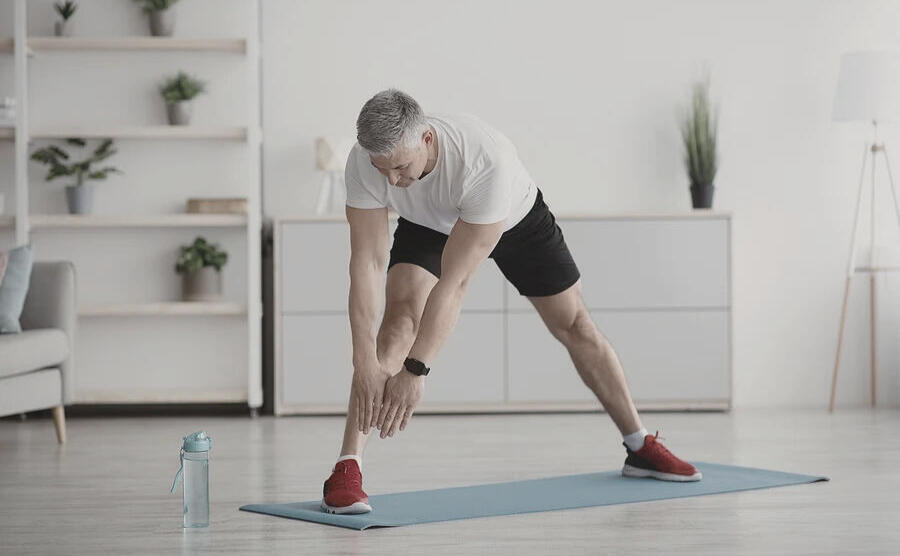
Movement
Spinal pain: Unlocking movement
for lasting relief

Botanicals
Unlocking nature's healing
power with essential oils

Bodywork
Finding the right
pain management approach
Boosting your body's natural defenses:
A deep dive into immune-enhancing supplements
In an increasingly interconnected world, the importance of a robust immune system cannot be overstated. Beyond simply warding off seasonal sniffles, a strong immune response is the cornerstone of our overall well-being, protecting us from a spectrum of illnesses and ensuring our bodies function optimally. While foundational lifestyle choices like consistent exercise, adequate sleep, and a nutrient-rich diet form the bedrock of immune health, natural supplements can act as powerful allies, providing an extra layer of defense and resilience.In this comprehensive guide, we'll journey into the world of natural immune boosters, exploring some of the most effective and scientifically supported supplements, including the powerhouse mineral zinc, the ancient botanical elderberry, and the indispensable vitamins C and D.

The Immune System
Before we delve into specific supplements, let's briefly appreciate the marvel that is our immune system. It's a complex network of cells, tissues, and organs working in concert to identify and neutralize threats like bacteria, viruses, fungi, and even cancerous cells. When functioning optimally, it's a vigilant guardian, constantly patrolling and protecting us. However, factors such as stress, poor diet, lack of sleep, and environmental toxins can compromise its efficiency, leaving us vulnerable. This is where strategic supplementation can play a crucial supportive role.1- Zinc
Often overlooked, zinc is an essential trace mineral that plays an incredibly diverse and vital role in maintaining a healthy immune system. Think of it as the ultimate multi-tasker for your immune cells.Why Zinc Matters
* Immune Cell Production and Activation: Zinc is indispensable for the development and proper functioning of immune cells, particularly T-cells and natural killer (NK) cells. These cells are frontline defenders, recognizing and destroying infected cells and pathogens. Without sufficient zinc, their ability to mature and activate effectively is severely hampered.
* Antioxidant Powerhouse: Zinc acts as a potent antioxidant, helping to neutralize harmful free radicals that can cause oxidative stress and damage to cells, including immune cells. This protective action helps reduce inflammation, which can otherwise suppress immune responses.
* Wound Healing and Tissue Repair: Beyond its direct immune roles, zinc is crucial for wound healing and maintaining the integrity of our skin and mucous membranes – our body's first line of defense against pathogens.
* Reduced Illness Duration: Studies have shown that adequate zinc levels can potentially reduce the duration and severity of common colds when taken at the onset of symptoms.How to Get Your Zinc
While oysters, red meat (beef, lamb), poultry, legumes (lentils, chickpeas), nuts (cashews, almonds), and seeds (pumpkin, sesame) are excellent dietary sources, many people, particularly vegetarians or those with certain dietary restrictions, may not get enough. If you suspect a deficiency or are looking for immune support, a high-quality zinc supplement can be beneficial. Look for forms like zinc picolinate or zinc gluconate for better absorption.2- Elderberry
The dark berries of the elder tree (Sambucus nigra) have been revered for centuries in traditional medicine for their remarkable immune-boosting properties. Elderberry has gained significant popularity for its ability to provide natural support, especially during cold and flu season.The Power of Elderberry
* Rich in Antioxidants and Flavonoids: Elderberry is packed with anthocyanins, quercetin, and other potent antioxidants that combat oxidative stress and inflammation, supporting overall cellular health.
* Antiviral Activity: Research suggests that elderberry can inhibit the replication of various flu viruses and may help prevent them from attaching to host cells. This unique mechanism makes it a valuable tool in shortening the duration and lessening the severity of viral infections.
* Cytokine Modulation: Elderberry stimulates the production of cytokines, which are signaling proteins essential for regulating immune responses. This helps the body mount a more effective and coordinated defense against invading pathogens.
* Symptom Relief: Many users report a significant reduction in symptoms like fever, muscle aches, congestion, and cough when taking elderberry during the early stages of a cold or flu.Incorporating Elderberry
Elderberry is widely available in various forms, including syrups, gummies, capsules, and teas. It's often recommended to start taking elderberry supplements at the first sign of illness or during periods of increased exposure (like during flu season) to maximize its benefits.3- Vitamin C
Perhaps the most well-known immune-boosting nutrient, Vitamin C (ascorbic acid) has earned its reputation for a good reason. It's a powerhouse antioxidant and plays multiple critical roles in supporting immune function.How Vitamin C Bolsters Immunity
* Powerful Antioxidant: Like zinc, Vitamin C is a formidable antioxidant, protecting immune cells from damage caused by free radicals generated during infection or inflammation.
* Supports Immune Cell Function: It's essential for the production and function of various immune cells, including phagocytes (which "eat" pathogens) and lymphocytes (B-cells and T-cells), which are crucial for adaptive immunity.
* Collagen Production: Vitamin C is vital for collagen synthesis, a key protein that maintains the integrity of our skin, mucous membranes, and blood vessels. These are our body's physical barriers against pathogens.
* Enhances Iron Absorption: Indirectly, Vitamin C also aids immunity by enhancing the absorption of non-heme iron, an important mineral for energy and overall health.Getting Enough Vitamin C
While citrus fruits (oranges, grapefruits), strawberries, kiwis, bell peppers (especially red and yellow), broccoli, and leafy greens are excellent dietary sources, our bodies don't produce or store Vitamin C. This means a continuous intake is necessary. During times of stress, illness, or when dietary intake is suboptimal, supplementation can be particularly beneficial. Doses range widely, but many opt for 500-1000mg daily for general immune support, increasing during illness.4- Vitamin D
Often called the "sunshine vitamin," Vitamin D is far more than just a bone health nutrient. It acts as a powerful hormone in the body, playing an integral and often underestimated role in modulating our immune system.Vitamin D's Immune Impact
* Immune Cell Regulation: Vitamin D receptors are found on almost all immune cells, including T-cells and macrophages. Adequate Vitamin D levels are crucial for these cells to mature and function effectively.
* Reduced Inflammation: It helps to regulate the inflammatory response, preventing excessive inflammation that can damage tissues and suppress proper immune function.
* Production of Antimicrobial Peptides: Vitamin D stimulates the production of antimicrobial peptides (AMPs) like cathelicidin, which have direct antimicrobial activity against bacteria, viruses, and fungi.
* Autoimmune Disease Link: Growing research links Vitamin D deficiency to an increased risk of autoimmune diseases, suggesting its role in balancing and preventing an overactive immune response.Addressing Vitamin D Deficiency
While sun exposure is the primary natural source, factors like geographic location (especially during winter months in higher latitudes), limited outdoor time, sunscreen use, darker skin tones, and age can significantly impact Vitamin D synthesis. Consequently, Vitamin D deficiency is widespread globally.Supplementation is often essential to maintain optimal levels, especially during winter or for those with limited sun exposure. Always consult with a healthcare professional to determine your ideal dosage, as needs vary based on existing levels and individual factors. A simple blood test can determine your current Vitamin D status.The Holistic Approach: Beyond Supplements
It’s crucial to reiterate that while zinc, elderberry, and vitamins C and D are powerful allies, they are not magic bullets. They are meant to complement, not replace, a holistic approach to health.To truly fortify your immune system, ensure you're also prioritizing:
* A Balanced, Whole-Food Diet: Emphasize fruits, vegetables, whole grains, lean proteins, and healthy fats.
* Regular Physical Activity: Moderate exercise can boost immune cell circulation.
* Adequate Sleep: Aim for 7-9 hours of quality sleep nightly; sleep deprivation significantly impairs immune function.
* Stress Management: Chronic stress weakens the immune system. Incorporate practices like meditation, yoga, or spending time in nature.
* Hydration: Drink plenty of water throughout the day.Investing in Your Immune Health
Enhancing your immune health through strategic natural supplementation can provide an invaluable extra layer of defense against illnesses. By thoughtfully incorporating zinc, elderberry, and vitamins C and D into your daily routine, you can actively support your body's innate defense mechanisms.However, remember that individual needs vary. Before starting any new supplement regimen, it is always essential to consult with a healthcare professional. They can provide personalized advice, consider potential interactions with medications, and help you determine the right dosages for your specific health profile.By embracing a proactive approach to your immune health – combining smart supplementation with a foundation of healthy lifestyle choices – you can fortify your body, enhance your resilience, and strive for a healthier, more vibrant future.Your immune system is your greatest protector; empower it!

Nutrition
The brain-body benefits
of anti-inflammatory foods

Gadgets
Unlocking the power of
vibration plate
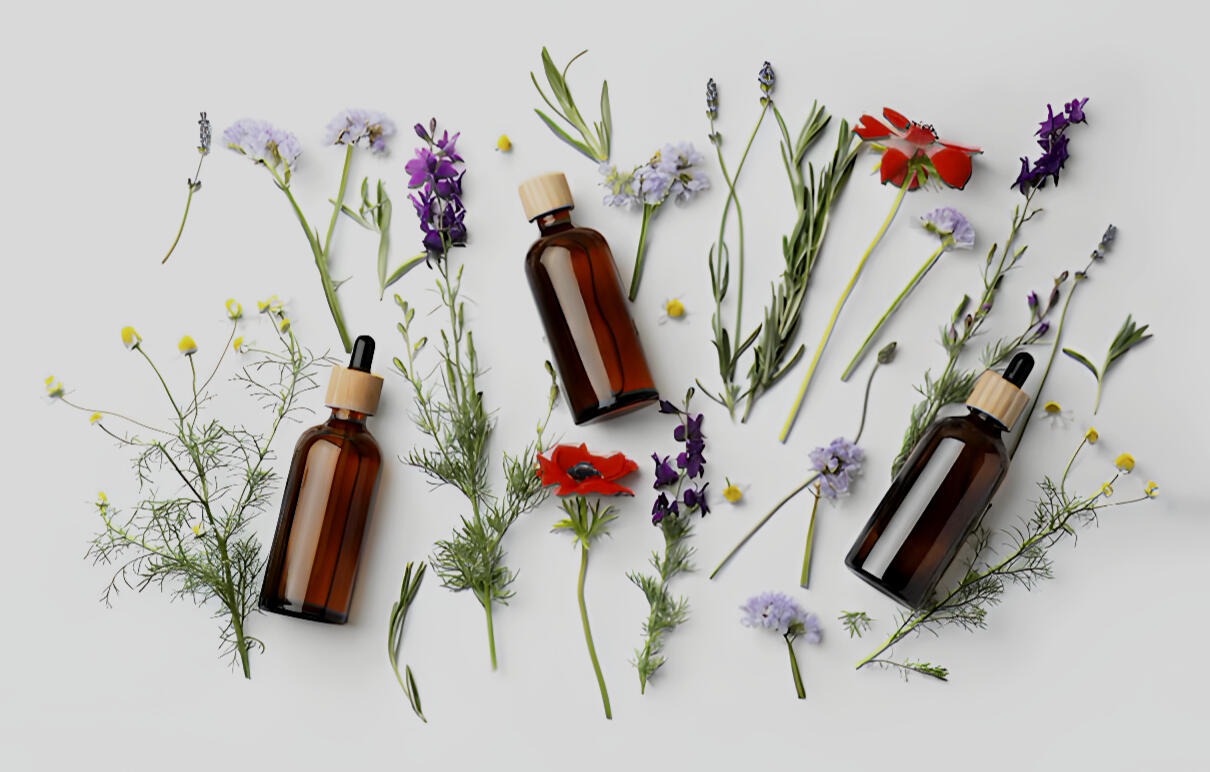
Botanicals
Manage muscle soreness naturally.
Unlocking nature's healing power:
Aromatherapy, essential oils and beyond
In the relentless pace of modern life, where stress often feels like an unwelcome constant and our well-being can easily take a backseat, the quest for natural, sustainable avenues to enhance health has never been more pertinent.Enter aromatherapy, a venerable holistic practice that, for millennia, has harnessed the profound therapeutic potential of essential oils. Far more than just pleasant scents, these concentrated plant essences offer a gateway to profound improvements in our mental, emotional, and physical landscapes. From calming frayed nerves to promoting restorative sleep, soothing physical discomfort, and even invigorating the spirit, the transformative benefits of aromatherapy are truly remarkable.

What Are Essential Oils?
At the heart of aromatherapy lie essential oils, which are highly concentrated aromatic compounds meticulously extracted from various parts of plants – flowers, leaves, stems, roots, seeds, bark, and even rinds. These potent botanical extracts are primarily obtained through meticulous processes like steam distillation (where steam passes through plant material, carrying the volatile compounds) or cold-pressing (typically used for citrus rinds).What makes essential oils so unique is their incredible complexity. Each oil is a symphony of hundreds of naturally occurring chemical constituents, working synergistically to embody the plant's unique therapeutic qualities and its very "life force." Unlike fatty oils, essential oils are volatile, meaning they evaporate quickly, releasing their distinctive aromas and therapeutic properties into the air. While their use in traditional remedies spans ancient civilizations from Egypt to China, modern scientific research is increasingly validating their health benefits, bridging ancient wisdom with contemporary understanding.How Essential Oils Interact with Our Bodies
The power of essential oils lies in their multifaceted interaction with our physiology. When inhaled, the aromatic molecules travel directly to the olfactory system and then to the limbic system of the brain – the control center for emotions, memory, and mood. This explains their immediate and profound impact on our psychological state. When applied topically (always diluted!), their tiny molecular structure allows them to penetrate the skin and enter the bloodstream, offering localized or systemic benefits.Expanding Your Aromatherapy Arsenal
While popular choices like lavender and frankincense are well-loved, let's explore some incredibly versatile essential oils – including Mandarin, Sage, Cedarwood, and Palmarosa – and their unique contributions to health and well-being.1. Mandarin Essential Oil
Derived from the peel of the mandarin orange, Mandarin essential oil (Citrus reticulata) is characterized by its sweet, citrusy, and slightly floral aroma. It’s often considered the "child-friendly" citrus oil due to its gentler nature.* Emotional Uplift & Calm: Mandarin oil is renowned for its profoundly uplifting and calming properties. Its cheerful scent can effectively alleviate feelings of anxiety, nervousness, and tension. It's particularly wonderful for those moments when you feel overwhelmed or simply need a gentle emotional boost. It promotes a sense of peace and helps to quiet a restless mind, making it excellent for evening use or to soften the edges of a stressful day.
* Digestive Support: Traditionally, mandarin oil has been used to support healthy digestion and soothe occasional digestive upset.
* Skin Rejuvenation: When properly diluted, it can be a gentle addition to skincare routines, known for its mild toning properties and ability to promote a healthy complexion.2. Sage Essential Oil
Sage essential oil (Salvia officinalis) carries a strong, herbaceous, and camphorous aroma. It has a long history of use in traditional medicine for its purifying and clarifying properties.* Mental Clarity & Focus: Sage oil is a remarkable ally for enhancing cognitive function. Its invigorating aroma can help clear mental fog, improve focus, and sharpen alertness, making it beneficial during study, work, or any task requiring sustained concentration.
* Emotional Grounding: While invigorating, it also offers a grounding effect, helping to stabilize emotions and reduce feelings of overwhelm.
* Cleansing & Purifying: Historically, sage has been used for cleansing and purifying environments. Diffusing sage essential oil can help to refresh and cleanse the air, creating a more harmonious atmosphere.
* Hair & Scalp Health: In diluted topical applications, sage oil is sometimes used to support hair health and a balanced scalp.3. Cedarwood Essential Oil
Extracted from the wood of cedar trees, Cedarwood essential oil (Juniperus virginiana or Cedrus atlantica) possesses a warm, woody, and slightly sweet aroma that is deeply grounding and calming.* Anxiety and Stress Reduction: Cedarwood is a top choice for promoting relaxation and reducing feelings of anxiety and stress. Its rich, earthy scent has a direct calming effect on the nervous system, helping to quiet the mind before sleep or during periods of heightened tension.
* Promotes Restful Sleep: Due to its sedative qualities, cedarwood is excellent for improving sleep quality. Diffusing it in the bedroom can create a peaceful environment conducive to deep, restorative slumber.
* Respiratory Support: It has traditionally been used to support clear breathing and respiratory comfort, making it helpful during seasonal discomfort.
* Skin and Hair Benefits: When diluted, it's often included in skincare for its clarifying properties and in hair care for promoting healthy-looking hair and scalp.4. Palmarosa Essential Oil
Palmarosa essential oil (Cymbopogon martinii) comes from a grass and has a soft, sweet, rosy, and slightly geranium-like aroma. It's often cherished for its balancing properties.* Emotional Balance & Uplift: Palmarosa is a wonderful oil for promoting emotional balance. Its gentle, floral scent can uplift the spirits, reduce feelings of anxiousness, and create a sense of peace and security. It’s particularly comforting during times of emotional vulnerability.
* Skin Health Hero: This oil is a powerhouse for skin care. It's known for its hydrating and regenerating properties, making it excellent for balancing skin's oil production, addressing dryness, and promoting a healthy, youthful complexion. It's suitable for most skin types, including mature and acne-prone skin.
* Antimicrobial Support: Palmarosa possesses impressive antimicrobial and antifungal properties, making it a valuable addition to natural cleaning blends or for supporting skin health against minor issues.Safe and Effective Application Methods
To fully unlock the benefits of aromatherapy, essential oils can be incorporated into your daily routine in several ways:1. Aromatic Diffusion: Using an essential oil diffuser is arguably the most popular method. It disperses the oil's aroma into the air, allowing you to inhale the therapeutic compounds. This is excellent for mood enhancement, air purification, and creating a specific ambiance (e.g., relaxing, invigorating).
2. Topical Application: Essential oils can be applied to the skin, but always diluted in a carrier oil (like jojoba, almond, fractionated coconut oil) to prevent skin irritation. Dilution ratios vary, but a common starting point is 1-3 drops of essential oil per teaspoon of carrier oil. Apply to pulse points, the temples, back of the neck, or specific areas of discomfort for targeted relief.
3. Direct Inhalation: For immediate relief from stress or congestion, place a drop or two on a cotton ball or tissue and inhale directly, or use a personal essential oil inhaler. Avoid direct contact with the nostrils.
4. Aromatic Bath: Add a few drops of essential oil (first dispersed in a tablespoon of a carrier oil, Epsom salts, or a bath dispersant) to your bathwater for a luxurious and therapeutic soak.Important Safety Considerations and Quality Matters
While essential oils offer incredible benefits, it is paramount to use them with caution and respect their potency:* Dilution is Key: Never apply undiluted essential oils directly to the skin, especially for sensitive individuals or children.
* Patch Test: Before applying a new oil topically, always perform a patch test on a small area of skin to check for any adverse reactions.
* Internal Use: Generally, internal consumption of essential oils is not recommended without explicit guidance from a qualified healthcare professional or certified aromatherapist. Many oils are not safe for internal use.
* Pregnancy & Medical Conditions: Pregnant or nursing women, individuals with severe allergies, asthma, epilepsy, high blood pressure, or other serious medical conditions should always consult a healthcare professional before incorporating essential oils into their routine.
* Children & Pets: Use extreme caution with children and pets. Diffuse in well-ventilated areas and keep oils out of reach.
* Quality Matters: Always purchase 100% pure, therapeutic-grade essential oils from reputable suppliers. Avoid "fragrance oils" or those cut with synthetic additives, as they lack therapeutic value and can be harmful. Look for scientific names on the label to ensure authenticity.Embracing Natural Choices for Modern Wellness
Aromatherapy and essential oils have unequivocally proven themselves to be powerful, natural tools in the pursuit of enhanced health and well-being. With their rich botanical origins and wide-ranging benefits – from calming the mind and promoting restful sleep to alleviating physical discomfort and purifying our spaces – these plant extracts offer a truly holistic and empowering approach to improving both mental and physical health.By understanding the unique properties of essential oils and embracing safe, informed application methods, you can access a world of natural healing potential.Approach essential oils with knowledge and respect, and seek professional guidance when necessary for a more balanced, harmonious, and vibrant life.

Resources
The bizarre paralysis of
transverse myelitis!

Women
Navigating the menopause
heat maze

Resources
Tackle that nagging pain!
Options for curbing your pain
The pain fighters:
Unveiling the healing power of herbal teas
While the demands of modern living often bring stress and discomfort, a growing number of us are turning to nature's gentle remedies, like herbal teas, to restore balance and well-being. While modern medicine plays a crucial role, ancient wisdom often points to the simple yet profound power of nature. Among these timeless remedies, herbal teas stand out as comforting, accessible, and surprisingly potent allies in our quest for relief and balance.Beyond their soothing warmth and delightful aromas, herbal teas are liquid gold, brimming with bioactive compounds that can address a surprising array of ailments. From calming irritated skin to easing chest discomfort and combating persistent fatigue, the right blend of herbs can offer targeted support, transforming a simple brew into a therapeutic elixir. Let's delve into three unique herbal tea combinations, designed not just to tantalize your taste buds but to actively help your body fight back against pain and discomfort.
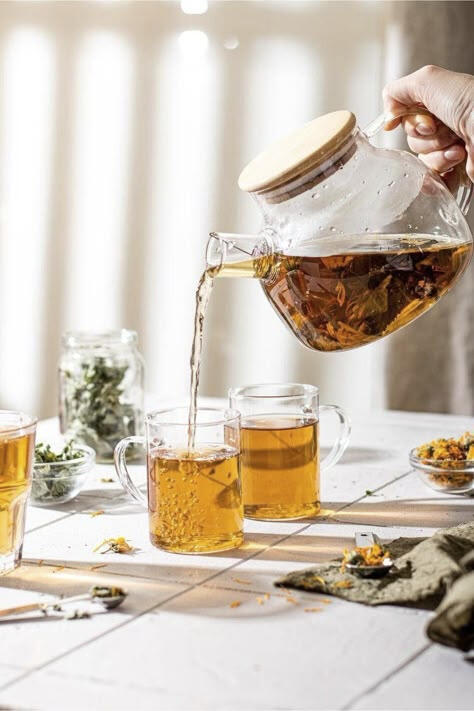
Why Herbal Teas Are Your Daily Dose of Wellness
Herbal teas are more than just infused water; they are concentrated deliveries of nature's pharmacy. Here's why they deserve a prominent place in your daily routine:- Bioactive Compounds: Herbs contain a vast array of compounds like flavonoids, polyphenols, volatile oils, and alkaloids, which possess anti-inflammatory, antioxidant, antimicrobial, and analgesic properties.- Gentle and Cumulative Effect: Unlike pharmaceutical drugs, herbal teas work subtly, supporting the body's natural healing mechanisms over time. Their effects are often cumulative, building resilience with regular consumption.- Hydration: Many pain conditions, including headaches and muscle cramps, are exacerbated by dehydration. Herbal teas provide a flavorful way to increase your fluid intake.- Mind-Body Connection: The ritual of preparing and sipping tea can be incredibly calming, promoting relaxation and reducing stress, which is often a significant factor in pain perception.- Digestive Support: Many herbs are known to aid digestion, which is crucial for overall health and nutrient absorption, indirectly impacting pain and inflammatory conditions.Now, let's explore three powerful blends, each designed to tackle specific types of discomfort and promote holistic well-being.Your Healing Arsenal: Three Potent Herbal Tea Recipes
These blends combine herbs and natural ingredients known for their specific therapeutic actions, offering a delicious path to relief.1. The Soothing Sip: Chamomile with Orange and Brown Sugar for Allergies and Painful Skin Conditions
This delightful blend is a gentle embrace for irritated bodies, combining the renowned calming properties of chamomile with the anti-inflammatory zest of orange and the comforting sweetness of brown sugar. It’s particularly beneficial for alleviating symptoms of allergies and soothing painful, inflamed skin conditions like eczema or hives.Key Healing Ingredients:Chamomile (Matricaria recutita): Famous for its calming and anti-inflammatory properties. It contains compounds like chamazulene and bisabolol, which help reduce redness, itching, and swelling, both internally and on the skin. Its mild sedative effects also aid in reducing stress, a common trigger for skin flare-ups.Orange (Citrus sinensis): Rich in Vitamin C and bioflavonoids, powerful antioxidants that boost immune function and reduce allergic reactions by stabilizing mast cells (cells that release histamine). The zest also contains beneficial volatile oils.Brown Sugar (β-d-fructofuranosyl-α-d-glucopyranoside): While primarily for taste, a small amount can offer comfort. For added benefits, consider natural sweeteners like raw honey (local honey for allergies if possible) for its anti-inflammatory and immune-modulating properties.Recipe:1 teaspoon dried chamomile flowers (or 1 chamomile tea bag)Peel of 1/4 organic orange (ensure it's well-washed, or use dried orange peel)1 teaspoon brown sugar (adjust to taste, or substitute with honey)1 cup hot waterInstructions:Place chamomile flowers (or tea bag) and orange peel in a mug.Pour hot water over the ingredients.Steep for 5-7 minutes, allowing the therapeutic compounds to infuse.Strain the tea, then stir in the brown sugar (or honey) until dissolved.Serving Suggestions:Sip this warm tea slowly throughout the day, especially when allergy symptoms flare or skin feels irritated.Cool it down and use it as a gentle compress for localized skin irritation. Simply soak a clean cloth in the cooled tea and apply it to the affected area for 10-15 minutes.2. The Respiratory Relief: Hibiscus with Pear and Anise for Respiratory Issues and Chest Pain
This vibrant, tangy, and subtly sweet blend is a powerhouse for respiratory health, offering relief from chest congestion, coughs, and the general discomfort associated with colds, flu, or seasonal respiratory challenges.Key Healing Ingredients:Hibiscus (Hibiscus sabdariffa): Known for its high concentration of Vitamin C and powerful antioxidants (anthocyanins). Hibiscus has anti-inflammatory properties and can help soothe irritated mucous membranes in the respiratory tract. It's also traditionally used to support blood pressure.Pear (Pyrus communis): A demulcent fruit, meaning it has a soothing, mucilaginous quality that can calm irritated throats and respiratory passages, reducing coughing and discomfort. Pears also provide gentle hydration and natural sweetness.Anise (Pimpinella anisum): A classic carminative and expectorant herb. Anise contains anethole, a compound that helps to loosen mucus in the respiratory tract, making it easier to expel. Its antispasmodic properties can also help calm coughs and chest tightness.Recipe:1 tablespoon dried hibiscus petals (or 1-2 hibiscus tea bags)1/4 cup chopped fresh pear (peeled or unpeeled, depending on preference)1/2 teaspoon anise seeds (lightly crushed for better infusion)1 cup hot waterInstructions:Combine dried hibiscus petals, chopped pear, and crushed anise seeds in a teapot or infuser.Pour hot water over the ingredients.Steep for 7-10 minutes to allow the robust flavors and beneficial compounds to infuse thoroughly.Strain the tea into a mug. For an extra boost, you can gently press the pear pieces to release more juice.Serving Suggestions:Drink this warm tea 2-3 times a day when experiencing respiratory discomfort or chest congestion.Inhale the steam from the hot tea before drinking for additional aromatherapy benefits that can help clear nasal passages.3. The Energy Restorer: Mate with Thyme and Grape for Fatigue and Muscle Pain
When fatigue saps your energy and muscle aches weigh you down, this invigorating yet soothing blend offers a unique combination of stimulating and pain-relieving properties. It provides a gentle energy lift without the jitters, while addressing the underlying muscular discomfort.Key Healing Ingredients:Yerba Mate (Ilex paraguariensis): A South American herb known for its natural caffeine content (mateine), which provides a sustained energy boost without the sharp peaks and crashes often associated with coffee. It's also rich in antioxidants and minerals, supporting overall vitality and reducing fatigue.Thyme (Thymus vulgaris): A powerful anti-inflammatory and antiseptic herb. Thyme contains thymol and carvacrol, compounds that have analgesic properties, making it excellent for soothing muscle aches and pains. It also supports respiratory health, beneficial if fatigue comes with mild congestion.Grape (Vitis labrusca): Grapes, particularly their skins and seeds, are rich in resveratrol and other polyphenols, potent antioxidants that reduce inflammation and protect cells from damage. They provide natural sweetness and a subtle fruity note that complements the herbaceous flavors.Recipe:1 tablespoon loose leaf Yerba Mate (or 1 Mate tea bag)1/2 teaspoon dried thyme leaves1/4 cup fresh red or black grapes, halved or lightly crushed1 cup hot waterInstructions:Place Yerba Mate, dried thyme, and halved grapes in a mug or French press.Pour hot water (just off the boil) over the ingredients.Steep for 5-8 minutes. For a stronger brew, steep longer.Strain the tea, pressing the grapes gently to release their juice and compounds.Serving Suggestions:Enjoy this tea in the morning or early afternoon when you need a natural energy lift to combat fatigue.Drink after a workout or when experiencing muscle soreness to leverage thyme's pain-relieving properties.Embrace the Ritual: The Holistic Benefits of Herbal Teas
Beyond the specific benefits of each ingredient, the very act of preparing and consuming herbal tea is a therapeutic ritual. It forces a pause, encourages mindfulness, and allows for a moment of quiet self-care in an otherwise hectic day. This simple practice alone can significantly contribute to stress reduction, which in turn can alleviate many forms of chronic pain and improve your body's overall resilience.While these herbal tea blends offer wonderful natural support, it's crucial to remember that they are complementary therapies. If you are experiencing severe or persistent pain, chronic skin conditions, or serious respiratory issues, always consult with a qualified healthcare professional. They can provide a proper diagnosis and recommend the most appropriate course of treatment.By integrating these "pain fighter" herbal teas into your daily routine, you're not just brewing a drink; you're brewing wellness. You're harnessing the ancient wisdom of plants, transforming simple ingredients into potent elixirs that nourish, soothe, and empower your body to fight back naturally. So, put the kettle on, choose your blend, and let the healing begin.

Resources
The bizarre paralysis of
transverse myelitis!

Women
Navigating the menopause
heat maze
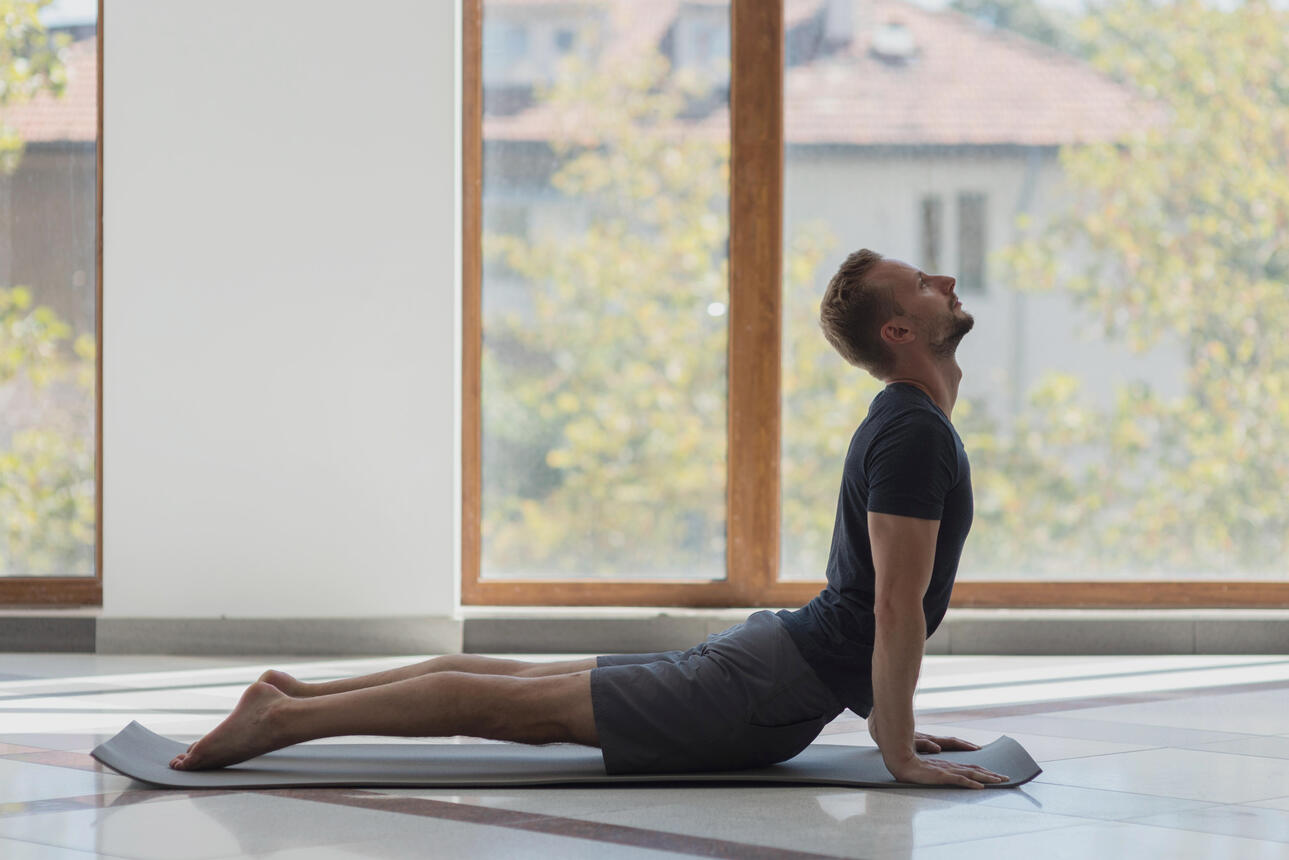
Movement
The psoas muscle, your core connector: To release or not?
Immunity boosters:
Foods that fight back
In our fast-paced world, where life moves at a relentless pace and global connections are the norm, safeguarding our health has never been more critical. We're constantly exposed to new environments, varied diets, and the inevitable stresses of a dynamic lifestyle. In this vibrant landscape, our immune system stands as our ultimate defender, tirelessly working to ward off illness and maintain our vitality. While factors like sleep and exercise play a crucial role, the food we put on our plates is arguably one of the most powerful tools we have to fortify our body's natural defenses.Think of your diet not just as fuel, but as an arsenal. Every bite can either strengthen or weaken your body's ability to "fight back" against invaders. Forget fancy elixirs; the real immunity boosters are often found in everyday foods, packed with specific nutrients that empower your immune cells. Let's explore some unsung heroes from the kitchen that actively work to keep you healthy and resilient.
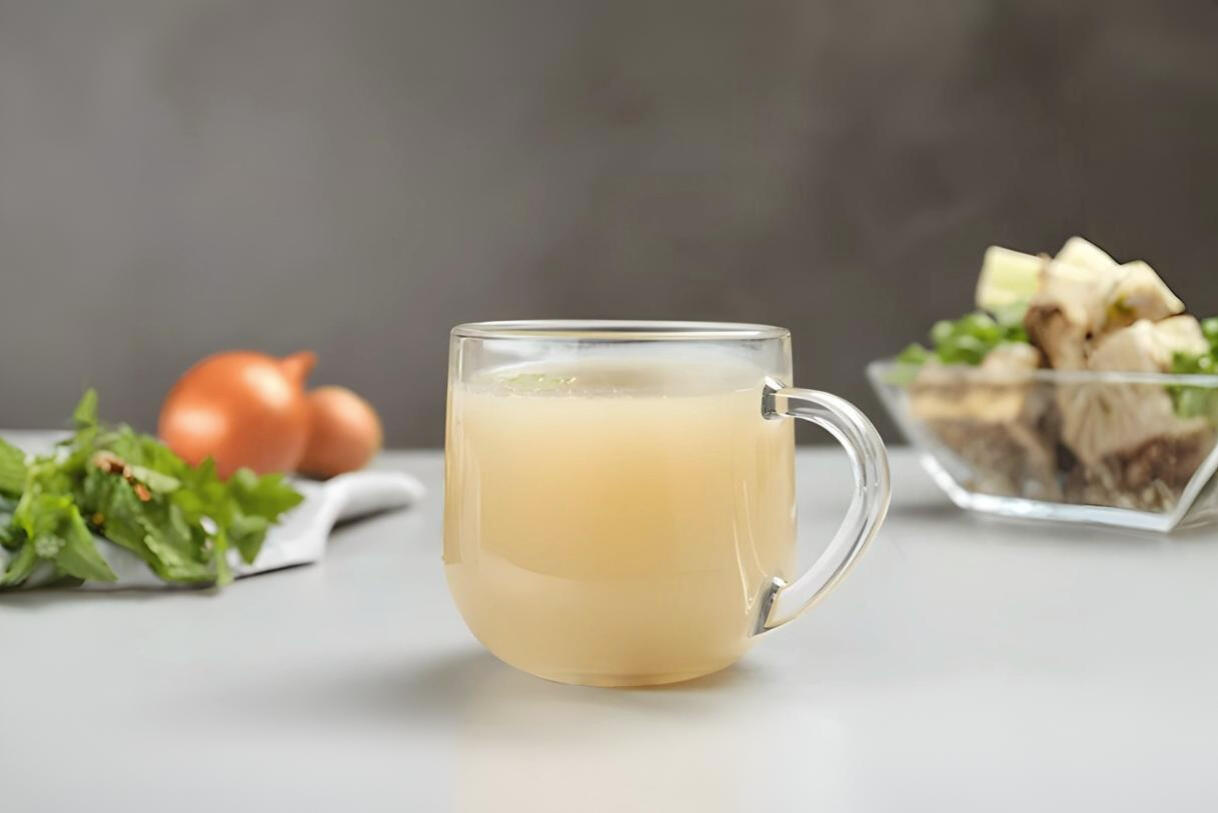
The Gut-Immune Connection:
Where the Battle Begins
Before we dive into specific foods, it's vital to understand a fundamental concept: a significant portion of your immune system (around 70-80%) resides in your gut. A healthy gut microbiome – the trillions of bacteria living in your intestines – is essential for a robust immune response. These friendly bacteria help train immune cells, produce beneficial compounds, and create a barrier against pathogens. Therefore, foods that support gut health are inherently immune-boosting.Your Plate's Powerhouses: Foods That Fight Back
Let's unpack some of the most potent immune-boosting foods you should be incorporating into your diet, no matter where you are.1. Radish: The Zesty Detoxifier
Often relegated to a mere garnish, radish is a crunchy, peppery powerhouse that deserves a starring role in your immune-boosting diet.Why it fights back:
Radishes are rich in Vitamin C, a well-known immune enhancer that supports the production and function of various immune cells. They also contain sulforaphane and other isothiocyanates, compounds found in cruciferous vegetables that have powerful antioxidant and detoxifying properties. These compounds help reduce oxidative stress, which can otherwise weaken immune function. The slight spiciness of radishes also helps clear congestion, beneficial during cold season.How to enjoy:
Slice them thin in salads, add them to sandwiches for a crisp bite, or even pickle them for a tangy, probiotic-rich snack. They're excellent in a simple raita or a fresh mixed salad.2. Bell Peppers: The Vitamin C Champions
When you think of Vitamin C, oranges usually come to mind. But did you know that bell peppers, especially the red and yellow varieties, often contain more Vitamin C than citrus fruits?Why they fight back:
Vitamin C is a potent antioxidant that protects immune cells from damage and supports their proliferation and function. It also plays a role in producing collagen, essential for maintaining the integrity of your skin and mucous membranes – your body's first line of defense against pathogens. Beyond Vitamin C, bell peppers provide bioflavonoids and carotenoids (like beta-carotene), which also have antioxidant and anti-inflammatory effects.How to enjoy:
Snack on raw bell pepper strips with hummus, stir-fry them with your favorite protein, roast them for a smoky flavor, or add them to omelets and wraps. Their vibrant colors make any dish more appealing and nutrient-rich.3. Plums: The Antioxidant Jewels
These sweet, juicy fruits are more than just a delightful snack; plums are brimming with compounds that support your immune system.Why they fights back:
Plums are particularly rich in antioxidants, including anthocyanins (which give them their deep color), phenolic compounds, and Vitamin C. These antioxidants help neutralize free radicals, reducing cellular damage and inflammation that can compromise immune health. Their fiber content also supports a healthy gut, indirectly boosting immunity.How to enjoy:
Eat them fresh, add them to fruit salads, blend them into smoothies, or even use them in savory dishes like chutneys or glazes for poultry. Dried plums (prunes) also offer concentrated benefits, particularly for digestive regularity.4. Corn: The Wholesome Grain
Often debated, corn (especially whole corn, not highly processed versions) offers surprising immune benefits, particularly for gut health.Why it fights back:
Corn is a good source of dietary fiber, especially insoluble fiber, which acts as a prebiotic. Prebiotics feed the beneficial bacteria in your gut, fostering a thriving microbiome essential for immune function. It also contains B vitamins (like folate), magnesium, and some antioxidants (like lutein and zeaxanthin in yellow corn) that contribute to overall cellular health.How to enjoy:
Enjoy grilled corn on the cob, add corn kernels to salads, make a hearty corn chowder, or use it as a base for healthy fritters. Opt for non-GMO corn whenever possible.5. Millet: The Ancient Grain Powerhouse
For those exploring gluten-free options or seeking diverse grains, millet is an excellent choice that brings a unique set of immune-boosting nutrients to the table.Why it fights back:
Millet is a good source of magnesium, crucial for over 300 biochemical reactions in the body, including those related to immune function and muscle relaxation. It's also rich in B vitamins, fiber, and antioxidants like phenolic compounds, which help combat oxidative stress. Its prebiotic fiber content supports gut health.How to enjoy:
Use millet as a fluffy alternative to rice or quinoa, cook it as a breakfast porridge, or incorporate it into gluten-free baking. It has a mild, slightly nutty flavor that makes it versatile.6. Eggs: The Complete Protein Package
Often called nature's multivitamin, eggs are an incredibly nutrient-dense food that provides a comprehensive array of vitamins and minerals essential for immune health.**Why they fight back:
Eggs are a complete protein, providing all nine essential amino acids needed for building and repairing body tissues, including immune cells and antibodies. They are also one of the few natural food sources of Vitamin D, a critical immune modulator that helps regulate immune responses and reduce inflammation. Furthermore, eggs contain selenium, a trace mineral with powerful antioxidant properties vital for immune cell function, and zinc, another essential mineral for immune cell development and activity.How to enjoy:
Boiled, scrambled, poached, or as an omelette – eggs are incredibly versatile and can be enjoyed at any meal. They're a quick and easy way to pack a nutritional punch.7. Milk: The Dairy Defender
Milk, particularly fortified varieties, can be a valuable source of immune-supporting nutrients. For those who are lactose intolerant or prefer plant-based options, fortified plant milks can offer similar benefits.Why it fights back:
Dairy milk is often fortified with Vitamin D, as mentioned, which is crucial for immune regulation. It also provides protein for immune cell production and calcium, important for overall cellular communication. Some milk products like yogurt also contain beneficial probiotics. If choosing plant-based milk, look for options fortified with Vitamin D, B12, and calcium.**How to enjoy:
**Drink it plain, add it to smoothies, use it in cereals, or incorporate it into cooking and baking.8. Bone Broth: The Gut Healer and Collagen Source
A truly ancient remedy that has seen a resurgence in popularity, bone broth is a potent elixir for gut health and, by extension, immune function.Why it fights back:Bone broth is rich in collagen, which breaks down into gelatine. Gelatine contains amino acids like glutamine, proline, and glycine, which are crucial for maintaining the integrity of the gut lining ("sealing" a leaky gut) and reducing inflammation. A healthy gut lining is fundamental for preventing pathogens from entering the bloodstream and overwhelming the immune system. It also provides various minerals that support overall bodily functions.How to enjoy:
Sip it warm like a tea, use it as a base for soups and stews, or incorporate it into sauces and gravies for added nutritional depth. You can often find ready-made bone broth in health food stores, or easily make your own.Building Your Immune-Boosting Plate
Incorporating these foods into your daily diet doesn't have to be complicated. Think about adding a handful of bell peppers to your morning omelet, sipping on bone broth as a midday snack, or enjoying a radish and plum salad with your evening meal. Diversity is key – the more variety you introduce, the broader the spectrum of nutrients your immune system will receive.Remember, true immunity isn't built overnight. It's a cumulative effort, a consistent commitment to nourishing your body with the right fuel. By prioritizing these immune-boosting foods, you're not just eating well; you're actively empowering your body to "fight back" and thrive, ensuring you stay resilient no matter where life takes you.

Women
Navigating the menopause
heat maze

Nutrition
Dip your way to relief:
Spreads for a pain-free you

Health
Beyond "just getting old"
into muscle soreness relief
Beyond "Just Getting Old":
Unlocking natural paths to muscle soreness relief
Have you ever woken up with a nagging ache in your back, a stiff neck, or mysterious muscle soreness, only to shrug it off as "just being injured" or, worse yet, "getting old"? It's a common narrative, and one that often leads to prolonged discomfort and frustration. But here's an important truth: persistent muscle and joint pain isn't always an inevitable part of aging or solely the result of a single, dramatic injury. In fact, many individuals, from the young and active to those embracing their golden years, experience profound relief from chronic aches through a holistic, integrative approach.At our practice, we frequently see patients grappling with diffuse muscle, joint, and body pains that significantly impact their quality of life. The remarkable part is how often these individuals benefit from carefully tailored integrative health sessions, proving that there's usually a root cause – and a natural solution – waiting to be discovered.

The Elusive Roots of Pain: Why Self-Diagnosis Can Be Tricky
Pinpointing the exact cause of pain in your muscles, joints, and body can be surprisingly complex. If you've suffered an acute, obvious injury – perhaps a sudden strain from lifting something heavy, the jarring impact of a sports injury, or the sharp twinge of a nerve pinched from sleeping in an awkward position – the immediate source of your pain is often clear. This acute pain is your body's alarm system, signaling immediate tissue damage or irritation.However, the picture becomes much murkier when pain develops slowly over time without a definitive "event." This chronic pain might stem from cumulative stress, poor posture over years, underlying nutritional deficiencies, systemic inflammation, or even emotional stress manifesting physically.Similarly, when pain from an initial injury lingers far beyond the expected healing time, or when its nature changes, the original source can become obscured. In these scenarios, relying solely on self-diagnosis can be limiting, and a more thorough, professional assessment is often required to uncover the actual root cause.But what if visiting an integrative health professional isn't an immediate option? The good news is, there are several powerful natural remedies you can implement at home to begin easing the discomfort and pain you might be experiencing in your muscles, joints, and body. These strategies work synergistically to support your body's natural healing processes.Natural Therapies You Can Implement Today:
1. Hydration: The Foundation of Fluid Movement
It sounds simple, but adequate hydration is absolutely fundamental for muscle and joint health. Our bodies are composed of roughly 60% water, and every cellular function, including muscle contraction, nutrient transport, and waste removal, relies on it.
• Why it helps:
Dehydration can lead to muscle cramps, reduced flexibility, and increased sensitivity to pain. Proper hydration ensures that synovial fluid (the lubricant for your joints) is healthy and abundant, and that nutrients reach muscle cells efficiently, aiding in repair and reducing soreness.
• How to hydrate effectively:
Beyond plain water, incorporate hydrating foods and beverages like smoothies, herbal teas (especially ginger or turmeric tea for their anti-inflammatory properties), broths, and water-rich fruits and vegetables. Aim for at least 8 glasses of water daily, more if you're active or in a hot climate like Dubai.2. Protein: The Building Blocks of Repair
Protein isn't just for bodybuilders; it's essential for everyone, especially when recovering from muscle soreness or injury. Protein provides the amino acids necessary for repairing and rebuilding muscle tissue.
• Why it helps:
During exercise or daily wear-and-tear, tiny tears can occur in muscle fibers. Protein provides the raw materials for these fibers to repair, strengthen, and adapt. Without sufficient protein, recovery is slower, and muscle soreness can linger.
• Optimal sources:
Include lean meats, poultry, fish, eggs, dairy, legumes, nuts, and seeds. Bone broth is particularly beneficial as it provides collagen and amino acids like glycine and proline, which are crucial for connective tissue health (ligaments, tendons, cartilage). Collagen supplements can also be a valuable addition for direct support to joints and tissues.3. Supplements: Targeted Nutritional Support
Sometimes, our diets alone aren't enough to provide the optimal levels of certain micronutrients that are crucial for pain management and recovery.
• Vitamin C:
A powerful antioxidant, Vitamin C is essential for collagen synthesis (the main structural protein in connective tissues, skin, and bones) and helps reduce oxidative stress that can contribute to muscle damage and inflammation. It aids in tissue repair and immune function, supporting the body's healing response.
• Magnesium:
Often called "nature's muscle relaxant," Magnesium plays a critical role in over 300 biochemical reactions in the body, including muscle and nerve function. Deficiency can lead to muscle cramps, spasms, and heightened pain sensitivity. Supplementing with magnesium (e.g., magnesium glycinate or citrate) can help relax muscles, reduce tension, and improve sleep.
• Omega-3 Fatty Acids:
While not on your initial list, Omega-3s (found in fish oil, flaxseed oil) are potent anti-inflammatory agents that can help reduce systemic inflammation contributing to chronic pain.4. Essential Oils: Nature's Aromatic Analgesics
Topical application of certain essential oils, properly diluted, can provide soothing relief from muscle soreness and tension. Their therapeutic compounds penetrate the skin to interact with pain receptors and reduce inflammation.
• Marjoram Essential Oil:
This oil (Origanum majorana) is celebrated for its warming, antispasmodic, and analgesic properties. It's excellent for relaxing tight muscles, soothing cramps, and relieving deep-seated aches. It can also promote a sense of calm, which indirectly helps with pain perception.
• Lavandin Essential Oil
A hybrid of true lavender and spike lavender, Lavandin (Lavandula hybrida) shares many of lavender's calming and pain-relieving properties but with a more camphorous, invigorating note. It's often used for muscle aches, sprains, and joint pain due to its anti-inflammatory and analgesic effects.
• How to use:
Always dilute essential oils (e.g., 2-3 drops per teaspoon of a carrier oil like jojoba, almond, or fractionated coconut oil) before applying topically. Massage gently into the affected area. You can also add diluted oils to a warm bath.5. Hydrotherapy: The Healing Power of Water
Using water in various temperatures can be a simple yet highly effective way to manage muscle soreness and pain.
• Hot Water (for Chronic Pain & Relaxation):
Heat increases blood flow to the area, promoting relaxation of tense muscles, improving elasticity of connective tissues, and helping to flush out metabolic waste products. Use warm showers, hot compresses, or a warm bath for chronic stiffness, muscle knots, and general aches.
• Cold Water (for Acute Pain & Inflammation):
Cold therapy (cryotherapy) constricts blood vessels, reducing blood flow to the injured area. This minimizes swelling and inflammation, and numbs nerve endings, providing immediate pain relief. Use cold compresses, ice packs, or a cold shower/bath immediately after an acute injury or for localized areas of inflammation.
• Contrast Therapy:
Alternating between hot and cold can create a "pumping" action, improving circulation and further reducing swelling and pain.6. Exercise and Gentle Movement: The Body's Best Medicine
It might seem counterintuitive to move when you're in pain, but sedentary habits can actually exacerbate muscle stiffness and weakness. Appropriate movement is crucial for recovery and prevention.
• Why it helps:
Gentle movement improves blood flow, delivers oxygen and nutrients to tissues, and helps to reduce stiffness. It also lubricates joints and can strengthen supporting muscles.
• Effective options:
Start with low-impact activities like walking, gentle stretching, yoga (especially restorative or gentle flow), Tai Chi, or swimming. Focus on movement that feels good and doesn't increase pain. Consistency is key.7. Neuroactive Exercise: Retraining Your Brain-Body Connection
Sometimes, pain becomes chronic because the nervous system itself becomes hypersensitive, even after the initial injury has healed. Neuroactive exercise aims to retrain the brain's perception of pain and improve the communication pathways between the brain and body.
• What it involves:
This isn't about pushing through pain, but rather engaging in movements that are comfortable and safe, gradually increasing complexity and range of motion. It includes exercises that focus on proprioception (body awareness), balance, coordination, and controlled movement patterns. Examples might include specific balance drills (on Trampoline, Buso ball, Balance board, etc.), precise movements under controlled conditions, or even visualization exercises. The goal is to "reset" the nervous system's response to movement and pain.When to Seek Professional Guidance: The Integrative Approach
While these home remedies can provide significant relief, there are times when professional guidance is invaluable. If your pain is severe, persistent, worsening, or if you suspect a more serious underlying condition, it's crucial to seek expert help.This is where an integrative therapist comes in. By combining a thorough review of your medical history, a comprehensive physical examination, and potentially advanced imaging techniques (if necessary), your therapist can gain a complete picture of your unique situation. This detailed assessment allows them to identify the precise root cause of your pain, rather than just treating the symptoms.Using non-invasive and carefully applied techniques – which can include manual therapy, targeted exercises, acupuncture, dry needling, cupping, or customized rehabilitation plans – an integrative therapist will mobilize and assist your body in a gentle yet highly effective manner. This personalized approach often provides both instant relief and, crucially, long-term solutions, empowering your body to heal and strengthen naturally.Empowering Your Body, Naturally
Muscle soreness and body aches don't have to be an inevitable part of life. By understanding the underlying causes and embracing a holistic approach that incorporates natural therapies like proper hydration, nourishing protein, targeted supplements, soothing essential oils, therapeutic hydrotherapy, and mindful movement (including neuroactive exercise), you can significantly improve your comfort and well-being. And when you need expert guidance to truly get to the root of your pain, remember the transformative power of an integrative health assessment. Empower your body, naturally, and reclaim a life free from unnecessary pain.

Movement
Activate your psoas!
The wonder formula.
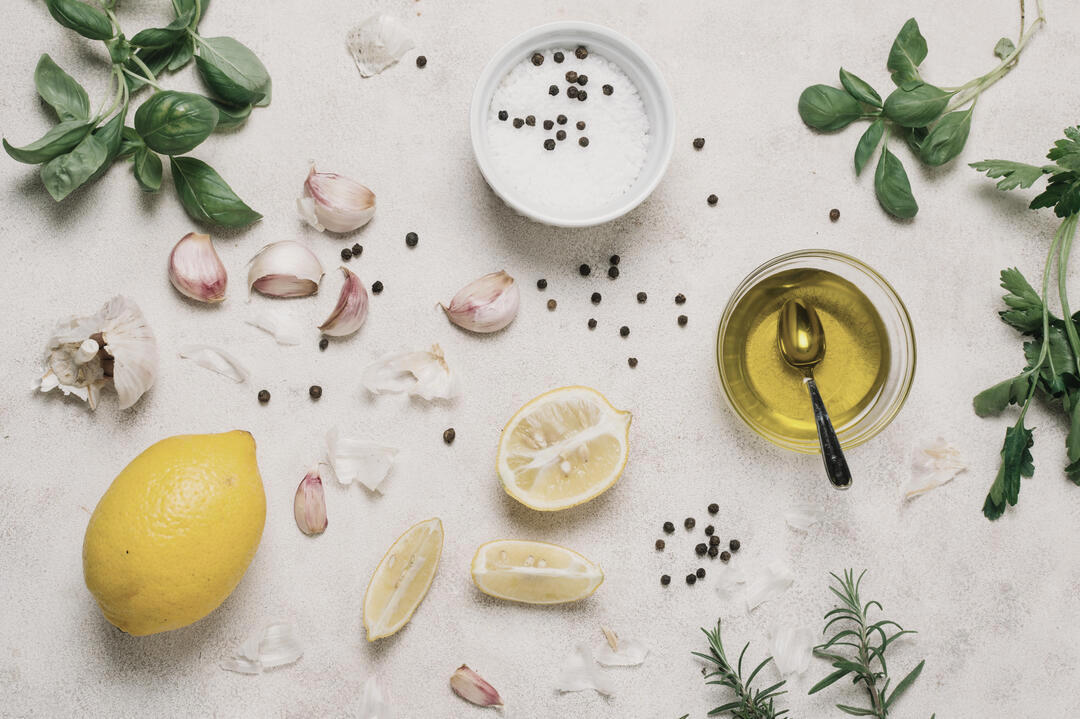
Nutrition
Dip your way to relief:
Spreads for a pain-free you

Women
Navigating the menopause
heat maze
The "Wonder Formula":
Activating your psoas for lasting pain relief
In the ever-evolving world of fitness and wellness, we often hear about "tight" muscles and the seemingly universal solution: stretching. And when it comes to the deep-seated psoas muscle, the conversation frequently revolves around "releasing" it through various stretches and mobilizations. But what if the widely accepted wisdom is missing a crucial piece of the puzzle? What if, for many of us, the real "wonder formula" for a healthy, pain-free body isn't just about lengthening the psoas, but about activating and strengthening it?It might sound counterintuitive, especially if you're experiencing that tell-tale "tightness" in your hips or lower back. However, a muscle that feels tight isn't always short; it can often be weak and inhibited, leading to a protective tension. This subtle yet profound distinction is critical to understanding and truly addressing persistent pain. Let's dive deep into the psoas, uncover the signs of its weakness, explore its true functions, and reveal why activating it could be your path to lasting relief.

Understanding Your Deepest Core: The Psoas Muscle
Often referred to as the "core connector," the **psoas muscle (Psoas Major) ** is a fascinating and fundamental part of our anatomy. It originates from the sides of your lumbar spine (the lower part of your back, from T12 to L5 vertebrae) and travels down through your pelvis, eventually inserting onto the lesser trochanter of the femur (the inner part of your thigh bone).
This unique anatomical path makes the psoas a powerhouse for movement and stability. Its primary actions include:
• Hip Flexion: It's the strongest hip flexor, responsible for lifting your knee towards your torso, as seen in activities like walking, running, and cycling.
• Spinal Stabilization: When you're sitting or standing, the psoas plays a crucial role in stabilizing your lower spine, especially during transitional movements.
• Trunk Movement: With fixed legs, it helps to bend the torso forward (like in a sit-up), assists in side bending the torso to the same side, and even contributes to rotating it towards the opposite side.
• Hip Adduction (indirectly): While primarily a hip flexor, it can assist in drawing the leg inwards when the hip is already abducted (moved out to the side).
But its influence extends even further. A strong, healthy psoas is intimately linked to deep, effective diaphragmatic breathing, as it shares fascial connections with the diaphragm. It also plays a supportive role in pelvic floor stability and performance, influencing everything from posture to continence.Decoding a Weak Psoas: The Signs and Symptoms
Given its complexity and deep location, a weak psoas can be notoriously difficult to self-diagnose. Its symptoms can mimic other conditions, making professional assessment vital. However, here are some common indicators that your psoas might be underperforming:
• Persistent Low Back Pain: Often a deep, aching pain in the lower lumbar region, which might worsen with prolonged sitting or standing. If your psoas is weak, other muscles (like your lower back extensors) might overcompensate, leading to strain.
• Pain in the Front of the Hip/Groin: This is a direct sign, as the psoas muscle runs through this area. Weakness can lead to irritation or impingement.
**• "Tight" Hamstrings that Don't Respond to Stretching: **This is a classic compensatory pattern. If your psoas is weak and not properly flexing your hip, your hamstrings might feel "tight" as they try to compensate for pelvic instability or act as secondary hip extensors. Trying to stretch them incessantly won't fix the underlying psoas weakness.
• Knee Pain: Weakness higher up the kinetic chain, like in the psoas, can lead to altered gait mechanics and increased stress on the knees.
• Swayback (Hyperlordosis): While a truly tight psoas can pull the lumbar spine into an exaggerated curve, a weak psoas can also contribute if it's not adequately stabilizing the pelvis, forcing the lower back muscles to overwork and create a similar postural deviation.
• Difficulty Lifting and Holding Your Knee Above Hip Height While Standing Upright: This is a direct functional test. If your psoas is weak, you'll struggle to sustain this position or compensate by leaning back.
• Sluggish or Compensatory Gait: You might notice your walking pattern feels less fluid, or you're dragging your feet, as your hip flexors aren't providing optimal power.The Root Causes: Why Does the Psoas Weaken?
The reasons for a weak psoas are as complicated as the muscle itself, often stemming from a combination of factors:
• Prolonged Sitting and Sedentary Lifestyles: This is a major culprit. When you sit for extended periods, your psoas is held in a shortened position, which can lead to adaptive shortening over time. However, this position also means it's not being actively engaged and strengthened through its full range of motion, leading to weakness and inhibition.
• Weak Abdominal and Gluteal Muscles: These muscle groups are synergists and antagonists to the psoas. If your core is weak, your psoas might become inhibited or overworked trying to compensate. Similarly, weak glutes can force the psoas to take on more than its share of work, leading to dysfunction.
• Compensatory Patterns: As mentioned, other muscles (like the quadratus lumborum in your lower back or superficial hip flexors) might become overactive to compensate for a sleepy psoas, further inhibiting its proper function.
• Prolonged Cycling: While it involves hip flexion, cycling often keeps the psoas in a relatively shortened, repetitive range of motion without full lengthening or strengthening through varied movements.
• Lack of Variety in Movement: Our modern lives often involve repetitive movements or static postures. The psoas thrives on dynamic, multi-directional movements, not just isolated or shortened actions.The Wonder Formula Unveiled: Activate and Strengthen Your Psoas!
This brings us to the core of the "wonder formula": stop only stretching your tight-feeling psoas, and start actively strengthening it. It’s often tempting in exercise and bodywork to hyper-focus on hip flexibility, neglecting the equally important strengthening and stabilizing work. While your hip flexors might feel tight, that doesn't necessarily mean you should aggressively force them longer.
In fact, indiscriminately stretching hip flexors can sometimes be counterproductive if the underlying issue is weakness or inhibition. A muscle that is weak often tries to "guard" or shorten to protect itself. Trying to lengthen it without addressing its inherent weakness is like pushing on a string – you won't get much functional gain, and you might even increase instability or compensatory patterns. Similarly, "releasing" those tight external rotators (like the piriformis) without getting to the underlying problem of psoas inhibition or weakness can be a temporary fix at best.
The goal is to teach your psoas to work efficiently and appropriately within its full range of motion – meaning it can both lengthen and powerfully contract.Practical Steps to Psoas Activation and Strengthening:
Incorporating exercises that specifically target psoas activation and strengthening can dramatically improve its healing capability and reduce aches and pains. These exercises often require mindful engagement, as the psoas is deep and requires careful attention to avoid compensation from other muscles.Here are a few excellent starting points:
1. Dead Bug Exercise: This is a fantastic exercise for core stability and psoas activation without over-engaging the superficial hip flexors.
o How to do it: Lie on your back with knees bent at 90 degrees directly over your hips, and arms extended straight up towards the ceiling. Slowly lower your opposite arm and leg towards the floor (e.g., right arm and left leg) without letting your lower back arch. Keep your core engaged and lower only as far as you can maintain a flat back. Return to the start and repeat on the other side.
2. Bridge Exercise (with variations): While primarily a glute exercise, a well-executed bridge can help with pelvic stability, which is crucial for psoas function.
o How to do it: Lie on your back with knees bent and feet flat on the floor, hip-width apart. Engage your glutes and core, then lift your hips off the floor until your body forms a straight line from shoulders to knees. Focus on not arching your lower back. For more psoas activation, try holding one leg straight out in line with your lifted hip.
3. Mountain Climbers (Slow & Controlled): This dynamic exercise, when performed with control, is excellent for activating the psoas in a functional movement pattern.
o How to do it: Start in a plank position, hands directly under shoulders. Keeping your core tight and hips stable, slowly draw one knee towards your chest, engaging your deep hip flexors (psoas). Return the leg to plank and repeat with the other leg. Focus on control rather than speed.
4. Standing March with Knee Lift: Simple but effective for direct psoas activation.
o How to do it: Stand tall, engaging your core. Slowly lift one knee towards your chest, aiming to get your thigh parallel to the floor (or higher if comfortable) without leaning back or rocking your pelvis. Hold briefly at the top, focusing on the deep abdominal and hip flexor engagement, then slowly lower.
Making sure your iliopsoas is robust and functional could, over time, significantly lessen the load on those "sleepy" rotators and extensors in your back. This not only improves your current aches and pains but also enhances your overall range of motion, stability, and even the efficiency of your breathing.The True Wonder Formula: Release, Activate, and Strengthen
The truth about managing muscle soreness and achieving optimal movement isn't about choosing one strategy over another. It's about a comprehensive, intelligent approach that encompasses:
• Release (when genuinely tight and overactive): Using gentle stretches, foam rolling, or professional manual therapy to address true tissue shortness or fascial restrictions.
• Activate (when weak or inhibited): Employing targeted exercises to wake up dormant muscles and restore their neurological connection.
• Strengthen (for overall resilience): Building capacity and endurance in both the psoas and its synergistic and antagonistic muscle groups to create a balanced, supportive system.Your body is a unique and intricate symphony of muscles, bones, and nerves. It demands that we pay attention to its subtle cues and understand its complex needs. While these home strategies are powerful tools, the best path to lasting healing and optimal function often begins with a professional assessment. Find a qualified physiotherapist, osteopath, or integrative manual therapist who resonates with you. They will provide a personalized understanding of your body's specific imbalances and guide you on a precise path of healing, ensuring your psoas – and your entire musculoskeletal system – works harmoniously and pain-free. Embrace the wonder formula, and empower your body to thrive.

Health
Beyond "just getting old"
into muscle soreness relief

Botanicals
The healing power of
herbal teas
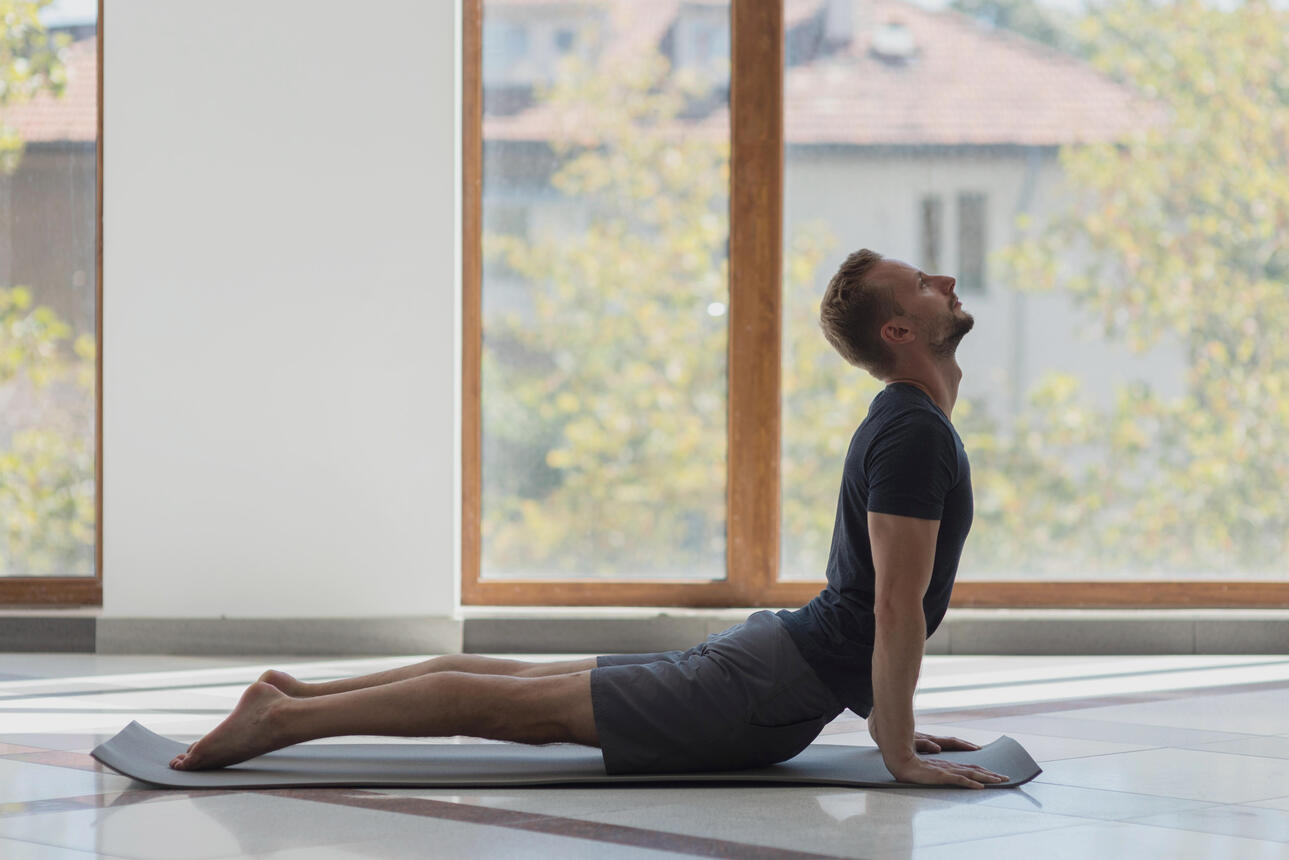
Movement
The psoas muscle, your core connector: To release or not?
The psoas muscle, your core connector:
To release or not to release?
In the vast landscape of modern wellness, few muscles have captured the attention and fascination of health enthusiasts, yogis, and fitness professionals quite like the psoas muscle. Often hailed as the "muscle of the soul" or the "fight-or-flight muscle," it's frequently at the center of discussions around chronic back pain, poor posture, and even emotional well-being. Exercises like Reclining Bound Angle in yoga, or various "Diamond" and "Frog" sit-ups in physical therapy, are all commonly prescribed with one overarching goal: to release the mighty psoas.The narrative often goes like this: a sedentary lifestyle, especially one dominated by prolonged sitting, shortens and tightens the psoas, leading to a cascade of problems. While there's certainly truth to the psoas's critical role in our health, the popular wisdom of simply "releasing" it might be oversimplified. As we explore in this article, the real story of the psoas is far more nuanced, often requiring a deeper, more holistic understanding than a mere stretch can provide.
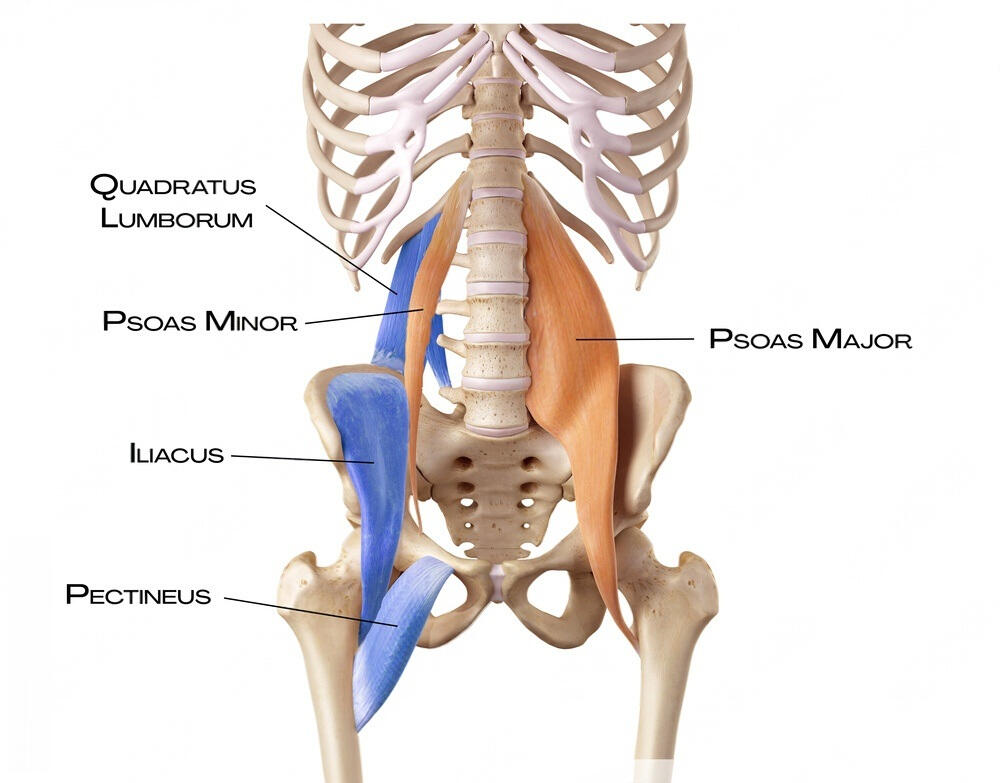
Anatomy of a Core Connector: What Exactly is the Psoas?
Let's start with the basics. The psoas major muscle (often grouped with the iliacus muscle as the iliopsoas) is a long, deep-seated muscle that originates from the sides of the lumbar vertebrae (lower spine). It then travels down through the pelvis and inserts onto the femur (thigh bone).This anatomical pathway is precisely what makes the psoas so crucial. It is the primary connector between your trunk and your lower limbs. Think about almost any movement you make: running, dancing, walking, even just lifting your leg to take a step, or simply sitting upright – the psoas is intimately involved. It's the strongest hip flexor, responsible for bringing your knee towards your chest, and also plays a role in stabilizing your spine.The Troubled Psoas: Symptoms of Dysfunction
Given its central role, it's no surprise that a dysfunctional psoas can manifest in a multitude of issues throughout the body. When the psoas isn't functioning optimally – whether it's genuinely tight, weak, or neurologically inhibited – it can contribute to:1- Chronic Lower Back Pain:
Often experienced as a deep, aching pain, especially when standing or transitioning from sitting to standing. A tight psoas can pull on the lumbar spine, increasing lordosis (the natural inward curve), or contribute to disc compression.2- Poor Posture:
An overactive or shortened psoas can pull the pelvis forward, leading to an exaggerated swayback posture (hyperlordosis), while a weak psoas might contribute to a slouched posture.3- Bloating and Constipation:
Due to its proximity to internal organs, a chronically tight psoas can potentially impinge on nerves or even contribute to sluggish digestive function.4- Leg Rotation Issues:
Imbalances in the psoas can affect the rotation of the leg and foot, leading to compensatory movements in the knee or hip.5- Sciatica-like Symptoms:
While not directly compressing the sciatic nerve, a tight psoas can irritate nerves in the lumbar plexus or contribute to piriformis syndrome, mimicking sciatica.6- A Weakened Abdomen:
Counterintuitively, an over-reliant or tight psoas can "take over" the work of the core abdominal muscles, leading to their disengagement and weakness.7- Affected Lymphatic Drainage:
Its deep location means dysfunction could theoretically impact lymphatic flow in the groin area.The Core Question: Is "Releasing" Always the Answer?
If you're experiencing back pain or any of the symptoms listed above, and a "tight psoas" is identified as a potential culprit, it's tempting to think that simply stretching it will solve everything. And yes, for genuinely short and tight muscles, stretching can certainly offer some relief.However, here's the critical nuance: The psoas, just like any other muscle in the body, can become neurologically underactive or inhibited for a variety of reasons, even if it feels "tight." A muscle that feels tight might actually be weak and struggling to do its job, going into a state of protective spasm or guarding. In such cases, aggressively stretching a weak muscle can actually worsen the problem or make you more susceptible to injury.One common scenario involves a dysfunctional relationship between the psoas and its antagonistic (opposing) muscles. For instance, back muscles like the quadratus lumborum (QL), which are often tight and overactive in individuals with back pain, can neurologically "shut down" or inhibit the psoas. This is a concept known as reciprocal inhibition, where the contraction of one muscle group leads to the relaxation of its opposing group. If your QL is constantly "on," it can tell your psoas to "turn off" or remain inhibited, even if the psoas itself isn't physically shortened. Addressing this dysfunctional relationship is often a vital, overlooked part of healing chronic back pain. It's about restoring balance and proper communication within the muscular system.The Emotional Connection: Are Our Hips "Storage Bins" for Trauma?
Beyond the purely physical, there's a compelling discussion about the mind-body connection, particularly concerning the psoas. It's a widely accepted concept that we can hold unconscious tension in our bodies from various stressors – be it a single traumatic event or the cumulative burden of minor stresses like sadness, fear, and worry. This stress can get "stuck" in our tissues, sometimes mutating into physical pain.The psoas, being so central and deeply connected to our primal fight-flight-freeze survival response, is often implicated in this phenomenon. When we're under stress, the psoas naturally contracts, preparing us to either run or curl into a protective fetal position. If this response becomes chronic due to persistent stress or trauma, the psoas can remain in a state of chronic tension.Indeed, the connection between our minds and bodies is undeniable; very few today would disprove that. When we cultivate intelligence and life force awareness, we undoubtedly enhance the quality of our lives, both physically and mentally. However, stating that a single muscle, particularly the psoas, is the sole repository or "governor" of our sadness, emotional distress, and physical suffering is simply an oversimplification. And then to conclude that stretching this one muscle is the eternal, sole path to making it healthy and functional, both physically and emotionally, is equally uneducated.We need more than just stretching or isolated "releases" to truly heal our physical and emotional bodies.A Holistic Path to Psoas Health and Beyond
True healing and optimal function for the psoas – and indeed, for your entire being – require a more comprehensive, holistic approach. It’s about reforming our lifestyle choices and addressing the bigger picture:Nutrition: An anti-inflammatory diet rich in whole foods, adequate hydration, and balanced macronutrients supports overall tissue health, reduces systemic inflammation, and provides the building blocks for repair.Environment: Your physical environment (ergonomics at your desk, quality of your mattress) and emotional environment (stress levels, relationships) profoundly impact your body. Creating supportive environments can reduce chronic tension.Emotional Recognition & Processing: Instead of just holding tension, learning to recognize, acknowledge, and process emotions is crucial. This might involve mindfulness, meditation, journaling, therapy, or practices that encourage emotional release in healthy ways. This proactive approach can prevent the accumulation of tension that manifests physically.Varied Movement & Strength: Beyond isolated stretches, a comprehensive movement practice is key. This includes:Strengthening: Often, a "tight" psoas needs to be strengthened, not just stretched. Exercises that build its endurance and capacity, as well as strengthen its synergistic muscles and antagonists, are vital.Mobility: Ensuring full range of motion in the hips and lumbar spine.Neuromuscular Re-education: Specific exercises that help the brain and muscles communicate more effectively, restoring proper movement patterns and reducing compensation.Your Body is Unique: Seek Professional Guidance
Ultimately, your body is a unique, complex system that demands careful attention and a personalized approach. While generalized advice and home remedies can be a great starting point, when chronic pain or dysfunction persists, it's a clear signal to seek expert help.Get yourself assessed by a qualified professional. This could be a specialized physiotherapist, an osteopath, a chiropractor, or an integrative manual therapist who understands the intricate interplay of muscles, joints, nerves, and even emotions. Find someone good, someone you resonate with, who will take the time to understand your unique medical history, conduct a thorough physical examination, and potentially use advanced diagnostic tools. They can identify the true root cause of your pain – whether it's a genuinely tight psoas, a weak and inhibited one, a broader muscular imbalance, or a psychosomatic manifestation of stress.Using non-invasive and carefully applied techniques, a skilled therapist can mobilize and assist your body in a gentle yet profound manner. This personalized path can provide not only instant relief but also sustainable, long-term solutions, guiding you on a truly holistic healing journey for both your physical structure and your emotional well-being. Don't settle for quick fixes; invest in understanding your body's needs.

Movement
Activate your psoas!
The wonder formula.
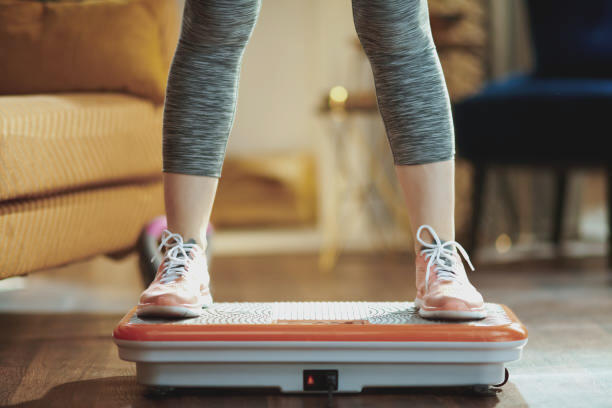
Gadgets
Unlocking the power of
vibration plate

Health
Beyond "just getting old"
into muscle soreness relief

